- SOUTH AFRICA
- CENTRAL AMERICA
- ESPIRITO SANTO
- MATO GROSSO DO SUL
- MINAS GERAIS
- RIO DE JANEIRO
- FALKLAND ISLANDS
- SUSTAINABLE TOURISM
- EXCHANGE PROGRAM
- GET INSPIRED
- HEALTH & WELLNESS
- NOMADIC LIVING
- PHOTOGRAPHY
- TRAVEL CLOTHING AND GEAR
- LIVE MORE, TRAVEL MORE
- ABOUT ELAINE
- SERVICES & CONTACT
- COUPONS & DISCOUNTS 💰
- Salvador, Brazil: A complete travel guide with the top things to do

Everything you have to know to plan your trip to Salvador, Bahia: How to get there, what to do, touristic points schedule and even how to practice sustainable tourism in the city.
Did you know that besides being Bahia’s capital, Salvador was the first Brazilian capital as well ? In this complete guide, you will find even more curiosities, tips about what to do in Salvador, touristic points information, museums and churches of the city.
Traveling to Salvador is an opportunity to learn about the history of Brazil. Understand the strength of these people, getting to know more about their religion, gastronomy, and musical resistance brought by the African people who were enslaved, or even learning about the story of Sister Dulce (Irmã Dulce), a saint that never give up on the poor and sick people, even in the most challenging moments.
I never thought that I’d love that city so much. We were there for about 1 month and it was not enough to know everything. That’s why I recommend staying there for at least a week, so you can get to know this charming and welcoming place well.
To some people, a trip to Salvador it’s an opportunity to have some fun in Carnaval or take a colorful photo in Largo do Pelourinho. But, I invite you to make this a transforming and learning journey.
Table of contents
Where is salvador, weather in salvador, how to get to salvador and know the city, general information, 1) get to know salvador’s main tourist attractions, 2) relax on the edge of salvador beaches, 3) strengthen your faith, 4) go for the bahian cuisine, 5) enjoy the sunset, 6) visit museums in salvador, 7) enjoy the benefits of salvador’s best neighborhoods, 8) volunteer in salvador – brazil, 9) immerse yourself in salvador’s culture, 10) get to know the region’s markets, 11) observe the artistic works of salvador, 12) experience salvador carnaval, what to do at night in salvador, what to do in salvador in the rain, what to do near salvador, what not to do in salvador, curiosities, what to bring to salvador.
Salvador is a Brazilian city in the northeast of the country, in Bahia state. This coastal city is just over 400 miles from Porto Seguro and almost 1.300 miles from São Paulo and more than 990 miles from Rio de Janeiro .
See where is Salvador on the map :
When to go to Salvador, Bahia
You can visit Salvador any time of the year, considering that the average temperature in the city varies between 75ºF and 80°F (or 24°C and 27°C as celcius is the unit of temperature we use in Brazil) and water is always warm. But, if you wanna escape from the rainy season it’s better to avoid traveling between April and July.
We were in Salvador between October and November 2021, it was the low season and it was perfect. At this time of the year and in the summer, it’s common that it rains a little, and then, just a few minutes later, the sky clears up as if not a single drop had fallen.
If you travel between December and March be aware that you’ll find high season prices. Do you wanna see and enjoy Carnaval in Salvador? Don’t forget to book your lodging in advance, once knowing this is the busiest season.
This pic shows how is the weather in Salvador during the year:
You can arrive in Salvador by plane , bus or car . If you are arriving from other cities of Bahia, even from other states as Sergipe or Alagoas, you can get the last two options. Otherwise, the best option is to take a flight to the Salvador Bahia Airport – Dep. Luís Eduardo Magalhães .
The Salvador bus terminal is located on Antônio Carlos Magalhães avenue, number 4.362 in the Pituba neighborhood, and it has a nearby subway station, the Bus Station.
The subway works very well, but unfortunately, it doesn’t pass through the principal touristic points. Even so, it is a good alternative for those who stay in a central region or for those who want to save money by taking a subway from the airport or bus station to the station closest to their accommodation and then a city bus or Uber.
Salvador also has local buses. On this site, you can put your origin and destination and identify which line you should take and the bus schedule. The line that should help you the most is the one that goes from the airport to Praça da Sé . If you are looking for a more comfortable way to move in the city, you can choose to take a táxi or Uber . On my trip, the best transportation was Uber because of the cost x benefit.
LMTM tip: Will you take Uber or Taxi via the app? Like anyplace else, don’t forget to check the vehicle, the license plate, and the driver’s name before entering.
For those who love physical activity, the waterfront has several Itaú bicycle rental/return points.
Frequently doubts about Salvador:
In Salvador there are 2,9 million inhabitants, making it the most populous city in Bahia and the 4th most populous in Brazil.
As a fort, Salvador was built strategically by the Portugueses in the highest part of the hill so they could have a privileged view and to protect the city.
Salvador was founded on March 29, 1549. It’s one of the oldest cities in Brazil.
Like any big city in Brazil or in the world, we have to pay attention. Our tip is that you should avoid walking with cameras or with your cell phone on display. A fanny pack is highly recommended, because it is safer to save your belongings, and practical to take your cell phone and take a pic quickly. Buy an international eSIM to have Internet access to check information, book a safe ride, etc. Avoid walking at night in places without movement, it’s better to take precautions, isn’t it?😉
What to do in Salvador
There is much more that you can do in Salvador than you can imagine! With this guide, you can find the best attractions, tourist points, and experiences that the city can offer you. Check it out!
View this post on Instagram A post shared by Elaine Villatoro 🇧🇷 · Viagem (@livemoretravelmore)
Mercado Modelo
The Mercado Modelo is in the lower part of the city and it is one of the entrances to the Historic Center. It is great for those who want to buy handicrafts and also taste delicious typical Bahian cuisine at its restaurants.
LMTM tip: We proved vegetarian moqueca in the restaurant Camafeu de Oxóssi and it was divine!
Ticket: Free of charge
Hours: from Monday to Saturday – from 9am to 6pm / Sunday – from 9am to 2pm
Address: 250, Praça Visconde de Cayru – Comércio
Contact: +55 (71) 3242-5860 / +55 (71) 3242-5860
Site: https://www.mercadomodelosalvador.com/
Elevador Lacerda
The Elevador Lacerda is the first urban elevator in the world, connecting the lower and upper cities. It’s located in the Baía de Todos os Santos and it has a beautiful view, perfect for taking photos.
Ticket: R$0,15 *
Hours: (During the pandemic) from Monday to Friday – from 7 am to 5:30 pm / Saturday – from 8 am to 5 pm
Address: Praça Cairu in the lower city, and Praça Tomé de Sousa in the upper city
Site: http://mobilidade.salvador.ba.gov.br/
Praça da Sé
This is a square that has generated controversy during its history. It used to house the old temple of the Sé Primacial of Brazil, built in 1553 and demolished in 1933 to make room for cable cars.
Today, it is a large sidewalk that houses other historical monuments such as the Memorial to the Baianas do Acarajé and the Zumbi dos Palmares.
Largo do Pelourinho
The word pelourinho means pillory that refers to a large stone where slaves were punished. Today, the plaza and the neighborhood represent the history of the black struggle, which beautifully takes over the streets and buildings, bringing strong colors, flavors, music, and religious manifestations to the place.
Farol da Barra
Imagine a place that lived all Salvador history: this is Farol da Barra .
This tourist spot in Salvador deserves a mandatory stop. Either to visit the Nautical Museum inside the build or to enjoy the landscape during the sunset.
Miguel Santana’s Theater and Balé Folclórico
This theater is the house of Balé (Ballet) Folclórico da Bahia since 2014. Besides the daily shows, the group also develops social projects such as Balé Junior – ballet for children. It is an amazing opportunity to learn about Brazilian folkloric dance with African roots.
Ticket: For now, because of COVID-19, the activities are happening online on Instagram .
Hours: from Wednesday to monday – 8pm
Address: 49, Gregório de Matos street – Pelourinho
Contact: +55 (71) 3322-1962
Site: https://www.balefolcloricodabahia.com.br/
Casa do Olodum
If you are Brazilian it is hard to think about Salvador and not remember about Olodum! The group that participated in clips of famous singers like Michael Jackson, Paul Simon and Jimmy Cliff, goes beyond the role of a band, disseminating education and culture. Take advantage of your visit to Pelourinho to visit Casa do Olodum , where you will find instruments and souvenirs of the band for sale.
Tickets: Free
Hours: from Monday to Saturday 8am to 6pm / Sunday 10am to 5pm
Address: 22, Maciel de Baixo street – Pelourinho
Contact: +55 (71) 99241-4086
Site: https://olodum.com.br/
Farol de Itapuã
Brazil’s most popular lighthouse is also a tourist attraction in Salvador. The 21-meter tower has this name because it is located on Praia de Itapuã .
Important! The inner area of the Farol de Itapuã is not open to visitors.
LMTM tip: This isn’t the most beautiful beach in Salvador (in my opinion), because of that, my advice is for you to make a quick visit here.
Address: Farol de Itapuã street – Itapuã
Ponta do Humaitá
On this charming spot you can find an architectural conglomeration, including the Church and Monastery of Monte Serrat and the Farol of Monte Serrat . Here one can enjoy a beautiful sunset and try the Bahian cuisine.
Address: 56, Boa Viagem street – Monte Serrat
If you are in doubt about what to do in Salvador on a sunny day, don’t worry. The beaches in the Bahian capital provide a variety of activities.
Go diving or stand-up paddling at Porto da Barra beach, learn how to surf at Praia do Flamengo, relax and have a good drink at the Blue Praia Bar at Buracão beach, eat a “coalho” cheese with molasses at Praia da Barra or ride a bike along the shore.
Check our article about the best beaches in Salvador, Brazil !
LMTM tip : Before getting into the water, check the water quality. You can confirm this information on INEMA website or through an updated Google search.
It can be in some of the 372 catholic churches or in some terreiro, a space dedicated to the candomblé’s orixás, the faith is part of the Bahian culture. See where you can strengthen your faith in Salvador:
Igreja do Senhor do Bonfim
Maybe you already know the ribbon of Bonfim, it is an icon in the Bahian city, but do you know where they come from? Know the Basílica do Senhor do Bonfim . You can visit the basilica, the local museum or hang your prayer ribbons on the external bars of the place.
Hours: from Monday to Wednesday and Saturday – 6:30 am to 6 pm / Friday and Sunday – 5:30 am to 6 pm.
Address: Praça Sr. do Bonfim – Bonfim
Contact: +55 (71) 3316-2196
More information: Facebook of Basílica Santuário do Senhor do Bonfim
Be moved in Memorial Irmã Dulce
A nun from Bahia canonized by the Vatican, Irmã Dulce had a huge impact in the community through your charity work . In the Memorial Irmã Dulce you can learn about her story, see her bedroom that is still intact, as well as other items that have marked her history.
Tickets: Free (Schedule is necessary)
Address: 161, Dendezeiros do Bonfim avenue – Bonfim
Contact: +55 (71) 3310-1923
Site: https://www.irmadulce.org.br
Igreja e Convento de São Francisco
Considered one of the Seven Wonders of Portuguese Origin in the World , Igreja e Convento de São Francisco is a baroque art building, exuberant and unique in details, such as Portuguese tiles, detailed sculptures, and fully worked walls and ceilings.
There you can find an interesting contrast between the Franciscan ideas of simplicity and the big luxury of the churches.
Tickets: R$ 5,00 *
Hours: Monday, Thursday, Wednesday, Friday, and Saturday – 9 am to 5:30 pm
Address: Largo do Cruzeiro de São Francisco – Pelourinho
Contact: +55 (71) 3322-6430
Igreja Nossa Senhora do Rosário dos Pretos
The Irmandade Nossa Senhora do Rosário dos Pretos is an important confraternity created by blacks to ensure their religiosity. The church in Salvador was founded in 1685 and built in 1704.
On Tuesdays at 5 pm you can check out during a mass an unmissable union between Catholicism and Candomblé.
Ticket: R$ 5,00 *
Hours: Visit – from Monday to Friday – 8 am to 12 pm and 1 pm to 5 pm / Saturday – 8 am to 7 pm
Address: Largo do Pelourinho, s/n – Pelourinho
Contact: +55 (71) 3421-5781
Casa de Yemanjá
Iemanjá is an really important Orixá patroness of fishermen, worshiped especially in Salvador. On February 2nd, Rio Vermelho beach receives devotees from all over Brazil to throw offerings to the sea.
But you don’t have to wait until this day to know this little and powerful house, it is open the whole year with offerings and prayers in Rio Vermelho neighborhood.
LMTM tip: Do you wanna know why February 2nd is considered the day of Iemanjá? Watch our stories about Salvador .
Address: 143, Guedes Cabral street – Rio Vermelho
Leave your diet aside and enjoy the delights of Bahia. In moderation, of course. 😅.
Traditional food
The Bahian food is delicious and unique. Taste acarajé, abará, moqueca, cocada, bolinho de estudante, pão delícia, caruru, mugunzá, and some others Bahia’s traditional food.
Don’t you know where to prove acarajé? The most famous are Acarajé da Dinha (my favorite) and Acarajé da Cira , both in Rio Vermelho.
In Pelourinho, don’t miss the lemon juice with coconut from Mr. Milton in front of Fundação Casa Jorge Amado, cachaça from Cravinho Bar , and cocada from Dona Júlia, this lady in the photo, who is always next to Igreja Nossa Senhora do Rosário dos Pretos.
It is really common to find Sorveteria da Ribeira in ‘what to do tips’ in Salvador. We were in four ice cream shops in the city, see our ranking:
- Crema – located in Largo de Santana, Rio Vermelho. Taste the flavours “Amarena” and “Ferrero Rocher”.
- Le Glacier La Porte – Largo do Cruzeiro de São Francisco
- Sorveteria da Ribeira – it’s only worth in the Ribeira’s unit, in the other ones the quality isn’t that good. Taste the flavor “Delícia de Abacaxi”.
- A Cubana – Multiple units all over Salvador.
Will not be a problem for you to find beautiful places to appreciate the sunset in Salvador .
In the highest touristic points as Elevador Lacerda, on the beach or at Farol da Barra, on the balcony of one of the bars of Santo Antônio Além do Carmo, listening to good jazz (Saturdays) or practicing a yoga class for free (Sundays) in the back of MAM (Modern Art Museum), and, who knows, in not much known places as Mirante Wildberger or Larri Bistrô in the Aliança Francesa at Corredor da Vitória.
Jorge Amado, one of the biggest Brazilian writers, was born in the South of Bahia and finished his studies in Salvador. His regionalist works have been portrayed in television and cinema.”
“Inaugurated on March 7, 1987, the Fundação Casa de Jorge Amado, was idealized and instituted with the objective of preserving and studying the bibliographical and artistic collections of the writer Jorge Amado, as well as encouraging studies and research above all literature made in Bahia.” – Fundação Casa do Jorge Amado. (free translation)
Hour: from Monday to Friday – 10am to 6pm / Saturday – 10am to 4pm
Address: 49/51, Portas do Carmo street – Largo do Pelourinho
Contact: +55 (71) 4103-0081
Site: https://www.jorgeamado.org.br/
Museu Afro-Brasileiro (MAFRO)
The museum is impressive because of the beauty of its facade. It is an important collection about African and Afro-Brazilian history.
It counts with some fixed exhibitions, as Carybé and his 27 wood carvings representing the candomblé’s orixás, and MAFRO also receives temporary artworks.
Hours: TEMPORARY CLOSED
Address: Largo do Terreiro de Jesus, Bahia Medical School building – Historic Center of Salvador
Contact: +55 (71) 3283-5540
Site: http://www.mafro.ceao.ufba.br
Cidade da Música da Bahia
Between Mercado Modelo and Elevador Lacerda, Cidade da Música da Bahia is a museum that counts with a rich history of Bahian music. All the exhibition is audiovisual and it brings the musical context of the city in general, the musical styles that exist there, and it also has interactive rooms with karaoke, rap and trap battles, and other attractions.
Ticket: R$ 20 * – SCHEDULING REQUIRED
Hours: from Tuesday to Sunday – 10am to 6pm, with entrance until 5pm.
Address: 19, Praça Visconde de Cayru – Comércio
Contact: +55 (71) 3106-4659 Site: https://cidadedamusicadabahia.com.br/
LMTM tip : Visit first the museum and then the Casa do Carnaval, it will make more sense.
Museu de Arte Moderna da Bahia – MAM
Museu de Arte Moderna da Bahia (MAM) is a spectacle inside and out. Located in Solar do Unhão, it has a wonderful view, a sunset worthy of an art piece, in addition to its external sculptures, five internal exhibitions and a cinema.
Ticket: Free
Hours: from Monday to Friday – 9 am to 12 pm and 1 pm to 4 pm
Address: Lafayete Coutinho avenue – Comércio
Contact: +55 (71) 3117-6132
Site: http://www.mam.ba.gov.br/
Casa do Carnaval da Bahia
One of the most traditional street Carnaval parties in Brazil, Salvador usually brings to its streets people from all over the world that follow the blocos de axé – a group of people that follow the band through the street. The Bahian Carnaval is unique and that is why there is a museum just to talk about this festivity. Know the history and have fun with carnaval artifacts in Casa do Carnaval da Bahia .
Ticket: R$ 20 * / On Wednesday is free with scheduling
Hours: from Tuesday to Sunday – 10 am to 6 pm
Address: Praça Ramos de Queirós – Pelourinho
Contact: +55 (71) 3324-6360
Site: Instagram
Memorial das Baianas do Acarajé
During your trip, you will find the very traditional Baianas do Acarajé . These women and acarajé – a kind of stuffed fritter – go beyond cooking, carrying a history of symbolism and resistance through the clothes on the body and the flavors on the plate.
Get to know this memorial made especially to tell the history and honor Baianas do Acarajé.
Hours: CLOSED FOR RENOVATION, EXPECTED TO REOPEN IN DECEMBER 2021.
Address: Cruz Caída, Praça da Sé – Pelourinh o
Contact: +55 (71) 3322-9674
LMTM tip: Do you wanna know why women from Bahia dress like that? Check out our stories in Salvador .
Museu Geológico
If you set aside a day to walk around the Corredor da Vitória , take time to visit the Museu Geológico . It is a perfect tour for those who want to know the history of Earth marked on its stones, with a special touch of being focused on the Bahian region.
Hours: from Tuesday to Friday – 1 pm to 6 pm / Saturday and Sunday – 1 pm to 5 pm (In case that you want a guided visit, scheduling is necessary, send an email to [email protected] )
Address: 2195, Sete de Setembro avenue – Corredor da Vitória
Contact: +55 (71) 3336-3498
Site: http://www.mgb.ba.gov.br/
Ps: I’ve heard that inside of the museum has a delicious coffee. ☕
Memorial e Fundação Pierre Verger
Pierre Verger was a French photographer and an anthropologist extremely important for studying and recording Afro-Brazilian culture, especially the religious aspects of candomblé. Want to know more about his work? Visit the Pierre Verger Memorial or the Galeria do Pelourinho for free.
LMTM tip: I recommend the book Orixás by Pierre Verger.
Memorial Pierre Verger : The house that Verger lived in.
Hours: from 8 am to 12 pm (Scheduling is necessary)
Address: 6, 2ª Travessa da Ladeira da Vila América – Engenho Velho de Brotas
Contact: +55 (71) 3203 8400
Site: https://www.pierreverger.org
Fundação Pierre Verger Galeria
Hours: from Monday to Saturday: 9am to 7pm
Address: 9 – store 1 – Portal da Misericórdia (Near by Pelourinho)
Contact: +55 (71) 3321 2341
Espaço Carybé de Artes
Despite being from Argentina and having walked in many places before arriving in Salvador, Carybé won the heart of the Bahian city. His art is vibrant and heavily influenced by candomblé. In this space, you can see a virtual collection.
Note: Every day from 6:15 pm until 7 pm his works are exhibited on the building’s facade.
Ticket: R$ 20 * – Wednesday for free
Hours: Wednesday to Monday – 11 am to 7 pm
Address: Forte de São Diogo – Porto da Barra
Contact: [email protected]
Site: https://www.instagram.com/espacocarybe/
Memorial Casa Di Vina
Don’t know what to do in Itapuã beach in Salvador? Visit the memorial of Vinicius de Moraes, located in the house where he lived with the Bahian actress Gessy Gesse at the beginning of the ’70s.
The memorial can be accessed through Casa Di Vina Restaurant. It contains a collection full of photos and objects of the poet and his wife, besides the paintings that tell stories and curiosities of the period in which they lived there.
Hours: from Monday to Sunday – 12pm to 10pm
Address: 44, Flamengo street – Farol de Itapuã
Contact: +55 (71) 3285-7339 / WhatsApp: +55 (71) 99711-3374
Site: https://www.casadivinabahia.com.br/
Casa do Rio Vermelho
The house where Jorge Amado and Zélia Gattai lived was transformed into a museum with an amazing collection and videos full of stories. This is also where his ashes were deposited according to the couple’s wishes.
Ticket: R$20 *
Hours: from Tuesday to Sunday, 10 am to 6 pm. Entrance until 5 pm
Address: 33, Alagoinhas street – Rio Vermelho
Contact: +55 (71) 3104-4659
Site: http://casadoriovermelho.com.br/
Museu Náutico da Bahia
If you love traveling, can’t miss the Museu Náutico da Bahia . The museum presents part of Brazil’s history by displaying pieces of ships and crew members’ utensils that were submerged for about 300 years.
Ticket: R$ 15
Hours: from Monday to Sunday – 9 am to 6 pm
Adress: Largo do Farol da Barra, s/n – Forte de Santo Antônio da Barra – Barra
Contact: +55 (71) 98890-0964
Site: https://www.museunauticodabahia.org.br/
Santo Antônio Além do Carmo
Next to the Centro Histórico (Historic Center), Santo Antônio Além do Carmo is a charming neighborhood. There you will find a lot of beautiful baroque old buildings.
There you can walk until Largo do Carmo – where you have a view to Baía de Todos os Santos -, visit churches and enjoy the bars and local business.
This is my favorite neighborhood to have a beer in the late afternoon while watching the sunset from the balcony of one of the bars in the area, like Bar Cruz do Paschoal , Poró Restaurante & Bar , Raiz Restaurante , and others.
The neighborhood goes from Largo do Pelourinho until Terreiro de Jesus.
Take a whole Saturday or Sunday to walk by Pelourinho. Besides calmly enjoying the region’s museums, take the opportunity to enter in the stores, and drink Mr. Milton’s lemon juice with coconut , dance, and sing with Movimento Percussivo and eat a cocada, acarajé or Dona Julia’s bolinho de estudante.
Rio Vermelho
Staying at and walking around the most bohemian neighborhood of Salvador is a pleasant experience!
In Largo de Santana , besides finding Igreja de Santana and Jorge Amado and Zélia Gattai sculptures, you can delight yourself with Acarajé da Dinha, drink a cold beer at Parador Z1 or also enjoy my favorite ice-cream parlor, Crema Gelato Italiano.
Still in Rio Vermelho, you can find Casa de Yemanjá , Buracão beach where you can visit Blue Beach Bar, Casa Castanho with its excellent coffee, Casa de Jorge Amado , Largo da Mariquita and the trendy EcoSquare.
The best way to get to know a destination in depth is to experience the day-to-day life of the locals. The Worldpackers volunteer work exchange makes this possible.
Here’s how Worldpackers works !
You can apply for various types of volunteer work in Salvador , such as working in a hostel in Praia da Barra or even participating in an environmental volunteer project in the region.
We participated in an agroforestry experience in a neighboring municipality, check out our experience:
Going to Salvador is an excellent opportunity to learn about afro-Brazilian culture. If you want to awaken your black consciousness, there are several tours with this focus that are organized by Guia Negro !
We participated in the Caminhada Salvador Negra. If there is a mandatory tour in Salvador that everyone should do, I would say that this is the one.
Ticket: Starting at R$ 50 per person*. Details are available at the site below.
Contact: +55 (11) 99279-4902 (WhatsApp)
Site: https://guianegro.com.br/
Visit a “terreiro de candomblé”
Religious syncretism is more present in our culture than most of us can imagine. Sayuri, the guide, can take you to a candomblé (Afro-Brazilian religion) temple and answer your questions.
Contact: +55 (71) 99113-8033 (WhatsApp)
Capoeira Class
This practice, which was once forbidden in Brazil, is now a national symbol. How about burning some calories with the sound of the berimbau while connecting to Afro-Brazilian ancestry?
We took the class with Mestre Bamba at the Associação de Capoeira Mestre Bimba .
Ticket: R$ 50 *
Address: Rua das Laranjeiras, n° 01, Pelourinho. 1° Andar
Contact: +55 (71) 3322-0639 (WhatsApp)
Site: https://www.capoeiramestrebimba.com.br/
Percussion Class
The atabaque and berimbau are very present in the rodas de samba and rodas de capoeira (roda is a practice where people stay in circle playing and dancing) in the Recôncavo Bahiano. How about learning how to play some rhythms on this instrument?
We did our class in the Associação de Capoeira Mestre Bimba , with Pezão.
Ticket: R$ 45*
Address: 01, Rua das Laranjeiras street – 1st Floor – Pelourinho
Contact: +55 71 3322-0639 (WhatsApp)
See a capoeira presentation
Finding a capoeira presentation isn’t that hard in Salvador. But, if you wanna add this experience to your route, you can plan to go to Forte do Santo Antônio Além do Carmo , there they have a project called Capoeira no Forte that it has the objective to promote the Bahian’s culture and art.
Hours: from Wednesday to Sunday – 4 pm to 6:30 pm
Address: Largo de Santo Antônio Além do Carmo – Santo Antônio
Besides Mercado Modelo, Salvador counts with other markets that offer an explosion of flavors and different options of craftsmanship:
Mercado Rio Vermelho
Recommended for those who are staying in the Rio Vermelho neighborhood . The prices are not very advantageous and I particularly did not find anything special. But still, this is an option.
Hours: from Monday to Saturday – from 7am to 7pm / Sunday – from 7am to 2pm
Address: 1624, Juracy Magalhães Júnior avenue – Rio Vermelho
Contact: +55 (71) 3018-5733
Site: http://www.mercadodoriovermelho.com.br/
Feira de São Joaquim
This is the cheapest market in Salvador. If you want to buy cooking ingredients, candomblé articles, clothes, etc, this is the ideal place for it.
We received a very good tip from a follower, a tour that involves visiting the fair & a traditional cooking class . If I had known before, I would have done it.
As a content creator, I’d love to photograph and film more here. But, unfortunately, I’ve not felt safe here. I’ve heard some rumors that it is common that thieves take the cellphones from the hands of tourists and escape in the little halls of the fair. A really important tip, stay in the main streets of the market.
Hours: from Monday to Saturday – 5am to 6pm / Monday – 5am to 2pm
Address: Engenheiro Oscar Pontes street – Água de Meninos
Dique do Tororó
Close to the Fonte Nova Arena is Dique do Tororó , a dam that was built in the 17th century and served as protection against invasions. As Salvador grew, it was gradually filled in and today it has a lake with 110,000 cubic meters of water. The most beautiful thing here is to admire the sculptures of 12 orixás created by the artist Tatti Moreno.
Note: I have heard that this region is dangerous, so be careful with your belongings.
Address: 212, Vasco da Gama avenue – Engenho Velho de Brotas
As Meninas do Brasil
These are three sculptures that represent the races that make up the Brazilian people: the black, the white, and the indigenous. Created by the Bahian artist Eliana Kertéz, “As Meninas do Brasil” are also known as “As Gordinhas da Ondina” , the neighborhood where they are located.
Address: 19, Adhemar de Barros avenue – Ondina
Morro do Cristo
The area to the left of Barra Beach bears a statue of Jesus Christ sculpted in marble. Take a rest on the lawns and enjoy the bars around Morro do Cristo and the privileged view of the Barra Lighthouse and the seashore.
Address: Oceânica avenue – Barra
Zumbi dos Palmares
The bronze statue made by artist Márcia Magno pays tribute to Zumbi, the last of the leaders of the largest quilombo in Brazil during the colonial period, the Quilombo dos Palmares.
Address: Praça da Sé – Centro Histórico
Jorge Amado and Zélia Gattai
Also made by artist Tatti Moreno, the sculpture features Jorge Amado, Zélia Gattai, and the life-size dog Fadul in Largo de Santana, in front of the Santana Church.
Endereço: Largo de Santana – Rio Vermelho
Ah, Salvador Carnaval ! I still haven’t had the opportunity to feel this emotion, which can only be experienced when the pandemic finally ends.But, for now, it remains my and your wish to one day be able to follow a trio on one of the famous circuits . By the way, who would you most like to see playing? At the top of my list are: Olodum, Saulo Fernandes, and Bell Marques.
Are you in doubt of what to do in Salvador at night? Options will not be lacking! These include:
- Dendê Salvador
- Vila Jardim dos Namorados
- Rooftop 180 Graus
- Largo de Santana
- Largo da Mariquita
Take the opportunity to visit the most diverse museums in Salvador, meet friends in the bars of Santo Antônio Além do Carmo, visit the main churches in the region, and enjoy the best of Bahia’s gastronomy.
Check out some other destinations in Bahia and approximate distances from Salvador:
- Ilha de Itaparica (13km)
- Ilha dos Frades (26km)
- Ilha de Maré (38km)
- Ilha Bom Jesus dos Passos (63km)
- Morro do São Paulo (63km)
- Boipeba (86km)
- Lauro de Freitas (30km)
- Guarajuba (70km)
- Itacimirim (78km)
- Praia do Forte (83km)
- Imbassaí (90km)
I decided to dare and share some things that I thought were not very worth doing in Salvador or that I had very negative references from people I met:
- Lagoa do Abaeté : Although it seems to be very beautiful, at least three local people in Salvador recommended that I should not go there, especially not alone, because it is a place that has been abandoned by the city and it has become dangerous.
- Shopping Salvador : Do not plan to arrive or leave the mall during rush hour. Since it is centrally located, there is a lot of traffic between 6-7:30 pm.
- Praia de Itapuã : This was the beach where I saw the most garbage in Salvador. Several locals also told me about the lack of security there, which made me apprehensive while I was staying there. If you want to visit it, set aside 2/3 hours just to see the Itapuã Lighthouse and visit the Vinícius’ House.
- From 1549 to 1763, Salvador was the capital of Brazil
- 80% of the population of Salvador is black
- The first name of Salvador was “São Salvador da Bahia de Todos os Santos
- Salvador has appeared in several international video clips, such as: Michael Jackson – They don’t care about us, Paul McCartney – Back In Brazil, Paul Simon – Obvious Child
Here are some extra tips for you to make the most of your trip to Salvador. Check them out:
Study about the destination
Study about some events and characters from Salvador that were important for the city’s history, such as: Neguinho do Samba , Irmã Dulce , Luís Gama , Dorival Caymmi , Mãe Menininha do Gantois , Mestre Bimba, Batatinha , Carlinhos Brown.
We also recommend that you watch these documentaries:
- Axé – Canto do Povo de Um Lugar
Respect, always!
Many Bahian women, capoeiristas, and musicians make their living from donations and sales of handicrafts and services to tourists. Some start the approach by offering a photo, bracelet, or even a painting of Timbalada as a gift, but in the end, they will ask for a financial contribution.
If you don’t want to, just thank them at the beginning of the conversation and say you’re not interested. Otherwise, a R$5 tip is an ok amount to admire a song or take a picture. To make your life easier, already separate the change before going to Pelourinho or the Igreja do Bonfim.
Also, xenophobic jokes are not welcome! Not here, not anywhere else!
Be a responsible tourist
We always leave here some tips for you to leave as few footprints as possible in the destinations you pass through, and this Salvador guide will be no different. See how you can be a more sustainable tourist in Salvador:
- Save water: in the summer it is common to run out of water in the city, so don’t abuse it!
- Reduce your waste while traveling : Whether in the hotel, on the beach or while visiting the main tourist attractions in Salvador.
- Always have with you a glass, straw, cutlery, and a reusable bag.
- When ordering, tell the attendant that you don’t need a straw, spoon, etc. If you don’t tell them in advance, they will automatically put it in.
- Are you ordering ice cream? What about the ice cream cone?
- Make sure that your lodging has a selective collection. If not, you can look for a So+Ma drop-off point to dispose of your waste properly.
- Light clothing and if possible, sun protection
- Comfortable sneakers for walking among the sights of Salvador
- Natural sunblock
- Sun Glasses
- Fanny Pack (it is the most practical and safe item for walking in big cities)
- Kit with reusable utensils (cutlery, glass, straw, bag)
Forget jeans and know that here a cold sweater is something you only wear on the flight or when your roommate turns up the air conditioning.
Now that you know what to do in Salvador by day, by night, and even when it rains, and what the main tourist attractions, museums, and churches are, tell us… What will be the first thing you want to do when you arrive in Salvador?
Did you enjoy our free guide? Save the pin and leave a comment below
* The values mentioned are from November/2021 and are subject to change.
Note: This article was supported by Worldpackers.
- The best beaches in Salvador and surroundings
- Porto Seguro, Brazil: Your travel guide to the historic and paradisiac destination in Shouth Bahia
- Caraíva, Brazil: 17 things to do, where to stay, places to eat and much more
- Trancoso, Brazil: Find out what this magic district in Bahia has to offer!
You Might Also Like
Scuba diving at Laje de Santos
Caraíva, brazil: 17 things to do, where to stay, places to eat and much mo....
August 6, 2023
Good guide ! thanks
September 30, 2023
this’ll has been very helpful. I wish we could stay longer than the few hours from our cruise.
October 4, 2023
it is always good to have a reason to come back =)
Cancel reply
Accommodation.
- TRAVEL INSURANCE
AWARD WINNER: SUSTAINABLE TRAVEL BLOGGER
Recent posts.
- The best beaches in Salvador, Bahia
- Things to do in the Yucatán Peninsula
- 21 Best Mayan Ruins in Mexico
- Things to do in Maraú Peninsula and Barra Grande, Brazil
- Best travel pants for men? Western Rise!
- How much does a trip to the Maldives cost in 2024?
- Top 5 things to do in Oman
- Top 7 must-have outdoor clothing for men
- Bonete Beach, Ilhabela: How to get there, what to do and much more
- Perth, Australia: everything that you must know
- Snow clothes: What you need to know before packing
- Waterproof hiking boots or shoes: Which one is better?
- Top 10 essential travel clothes for men
Posts by Category
- DESTINATIONS
- TRAVEL RESOURCES
- MIDDLE EAST
- NORTH AMERICA
- TRAVEL GEAR
- TOURS & TICKETS
- SOUTH AMERICA
- NOMADIC LIFE
- UNITED STATES
- South America
- 20 Must Visit Attractions In...
20 Must-Visit Attractions in Salvador

Architecturally rich and culturally diverse , Brazil’s first capital city has it all. From old colonial buildings to eccentric markets, stunning natural features to the world’s first outdoor lift, as well as museums, churches and galleries, Salvador’s best sights will have you raring to get started.
In 1549, when the Portuguese landed on Brazil’s coast, they built the city of Salvador da Bahia on the shore of the Bay of All Saints. Their impressive European architecture has survived the centuries, and the resulting streets, squares and churches of the historical centre are now a UNESCO World Heritage site, known as the Pelourinho , which means pillory, after the place where slaves were publicly flogged.

Baía de Todos os Santos

Igreja de Nossa Senhora do Rosário dos Pretos
Unable to worship at their masters’ churches, Brazil’s slaves built their own finishing the Igreja de Nossa Senhora do Rosário dos Pretos in the 18th century. With two bell towers and painted in pale blue and white, it is an architecturally fine building that still thrives and functions today. Services are a mix of Catholicism and Candomblé, and visitors are usually welcome to observe. It has neoclassical altars inside and a small graveyard for slaves out the back.
Cathedral Basilica of Salvador
Built by Jesuits on the site of their very first church in what is now Salvador, the city’s cathedral is a vast 17th century building on the Terreiro de Jesus square. It is statuesque but unassuming on the outside but glittering with gold inside, and is the venue for frequent concerts and events, as well as church services.

Nosso Senhor do Bonfim Church
Nosso Senhor do Bonfim is perhaps the most famous of all of Salvador’s hundreds of churches. It has come to represent the co-existence of the two predominant religions in the area: Catholicism and Candomblé, which originated in West Africa. The annual Lavagem do Bonfim is a widely celebrated and not-to-be missed festival involving a procession through town before women wash the steps of the church.

Elevador Lacerda
Salvador is a city on two levels. To connect the high and low parts of the city, a lift was built in 1873. The now Art Deco Lacerda Elevator bridges an 85-metre escarpment, taking the public up and down in thirty seconds, hundreds of times a day and giving breathtaking views of the bay and the city.
Mercado Modelo
There is no better place to pick up souvenirs than at Salvador’s Mercado Modelo . With hundreds of stalls selling all things Bahian and other locally made products, it has an excellent selection of food and booze, clothes, shoes, jewellery, art and woodwork, as well as a selection of traditional Brazilian restaurants and bars.

Feira São Joaquim
São Joaquim is a grid of narrow alleys stuffed full of everything you might ever need. It is a proper locals’ market, so don’t be surprised by the live animals for sale and the many strange Brazilian fruits, spices and dried foods. The set-up, plus the sacks of pink salted shrimp, make for striking photos.
Farol de Barra
Since 1698, Salvador’s black and white lighthouse has guided ships safely in and out of the Bay of All Saints from its promontory on the city’s southern tip. It is part of the Santo Antônio fort along with the Nautical Museum, which is a popular tourist stop, and people come daily to climb the lighthouse and watch it being turned on and off in the morning and evening.
São Marcelo Fort
Out in the bay and easily visible from the upper city and the Elevador Lacerda, is the large cylindrical São Marcelo fort. It was described by novelist Jorge Amado as “the belly button of Bahia” and has been a crucial defensive point for the Portuguese since the 17th century. Sadly these days it is no longer open to the public, but is worth a peek from up high.

Praia Porto da Barra
Praia Porto da Barra is widely considered to be Salvador’s best little beach. The crescent of golden sand fills up at weekends and on holidays with merry beachgoers claiming a patch and wading out into the calm waters of the bay. It also offers a prime sunset-watching spot.
http://instagram.com/p/BV7PRVKlMGc/?taken-at=808931242544361
Praia do Farol da Barra
Every visitor to Salvador should take a leisurely stroll along the Farol da Barra beach. Like a smaller Ipanema, it is wide and clean with gently crashing waves and plenty of opportunities for people-watching. At Carnival and New Year’s Eve it is at the heart of the city’s celebrations.

Rio Vermelho
Rio Vermelho , or Red River, is Salvador’s answer to a hipster neighbourhood. The city’s young and bohemian hang out out at night in the area, filling the squares, listening to music and threading in and out of restaurants. There are a couple of multi-arts bar-clubs, like Galpão Cheio de Assunto and Commons Studio Bar, and plenty of thrift shops too.
Museu de Arte Moderna
Salvador’s Museum of Modern Art is right on the water’s edge in a large old, colonial manor house. It houses up to five exhibitions inside, has its own sculpture garden in the grounds and a school. A highlight of the place is the weekly Jam no MAM live concert outside every Saturday evening.
Balé Folclórico da Bahia
Weaving together many of the strands of Salvador’s history and culture, the regular show of Bahian folklore is an unlikely night to remember. The performers use costume, music and dance to play out local tales and demonstrate capoeira on stage. It takes place in a small theatre in the Pelourinho and often brings audiences to their feet.

Palacete das Artes
The Palacete das Artes is also informally known as Salvador’s Rodin museum. The gallery has four of the French sculptor’s pieces, among its other works, and connections to the Musée Rodin in Paris. As well as the fine 1912 building the art is showcased in, there is a stylish new minimalist café in the grounds.
http://instagram.com/p/BVeu2eOFpHH/?taken-at=774294
Fundação Casa de Jorge Amado
Jorge Amado is one of Brazil’s most beloved and accomplished writers. As he was born in Bahia and lived in Salvador, there are two institutions in his name in the city, both of which are open to the public. Fundação Casa de Jorge Amado has exhibits of the writer’s work, a shop and a café. A Casa do Rio Vermelho is the house where Amado and his wife, Zélia Gattai, lived.

Rio Branco Palace
Built in 1549, the Rio Branco Palace in the cidade alta is one of Brazil’s oldest palaces. It is one of the city’s architectural wonders, having been tinkered with and altered extensively over the years. As the former home of the state government, it houses medals and memorabilia from the governors of Bahia. Tours of up to 30 people can be arranged via its webpage .
Fundação Pierre Verger
Pierre Verger (1902-1996) was a French photographer who made Salvador his home and the focus of much of his work. He became fascinated with African culture and particularly with the Candomblé religion. The small foundation dedicated to him gives a good overview of his life and shows the exquisite photos he took.
Casa do Comérico
Salvador’s Casa do Comérico is a state-run cultural centre with a cinema, theatre and restaurant. As well enjoying the performances held within, it is worth a visit to admire the extraordinary building that was constructed for the purpose. It is a futuristic red and black stack of seemingly interlocking sections, overflowing with plants and greenery high up above the street.
http://instagram.com/p/BUegU1hh9I1/?taken-at=236717005
If you’re looking for a place to stay on a budget, discover the best cheap hotels in Salvador , now bookable via Culture Trip.
Since you are here, we would like to share our vision for the future of travel - and the direction Culture Trip is moving in.
Culture Trip launched in 2011 with a simple yet passionate mission: to inspire people to go beyond their boundaries and experience what makes a place, its people and its culture special and meaningful — and this is still in our DNA today. We are proud that, for more than a decade, millions like you have trusted our award-winning recommendations by people who deeply understand what makes certain places and communities so special.
Increasingly we believe the world needs more meaningful, real-life connections between curious travellers keen to explore the world in a more responsible way. That is why we have intensively curated a collection of premium small-group trips as an invitation to meet and connect with new, like-minded people for once-in-a-lifetime experiences in three categories: Culture Trips, Rail Trips and Private Trips. Our Trips are suitable for both solo travelers, couples and friends who want to explore the world together.
Culture Trips are deeply immersive 5 to 16 days itineraries, that combine authentic local experiences, exciting activities and 4-5* accommodation to look forward to at the end of each day. Our Rail Trips are our most planet-friendly itineraries that invite you to take the scenic route, relax whilst getting under the skin of a destination. Our Private Trips are fully tailored itineraries, curated by our Travel Experts specifically for you, your friends or your family.
We know that many of you worry about the environmental impact of travel and are looking for ways of expanding horizons in ways that do minimal harm - and may even bring benefits. We are committed to go as far as possible in curating our trips with care for the planet. That is why all of our trips are flightless in destination, fully carbon offset - and we have ambitious plans to be net zero in the very near future.

See & Do
Everything you need to know about rio’s pedra do telégrafo.

Places to Stay
The best hotels to book in brazil for every traveler.

Guides & Tips
The best private trips to book for your dance class.

Food & Drink
The best brazilian desserts you need to try.

The Most Beautiful Coastal Cities to Visit With Culture Trip

The Best Campsites and Cabins to Book in Brazil

The Best Destinations for Travellers Who Love to Dance

The Best Villas to Rent for Your Vacation in Brazil

The Most Beautiful Botanical Gardens in the World

The Best Resorts in Brazil

The Best Private Trips to Book for Reunions

The Most Beautiful Sunsets on Earth
Culture trip spring sale, save up to $1,100 on our unique small-group trips limited spots..

- Post ID: 1412253
- Sponsored? No
- View Payload
Salvador - Bahia - mix it up
- Por que Salvador ?
- Uma pitada de história
- Infraestrutura e serviços
- Como chegar
- Salvador em números
- Informações úteis
- Centro Histórico
- Afroturismo
- Religiosidade
- Nômades Digitais
- Gastronomia
- Cidade da Música
- História e Cultura
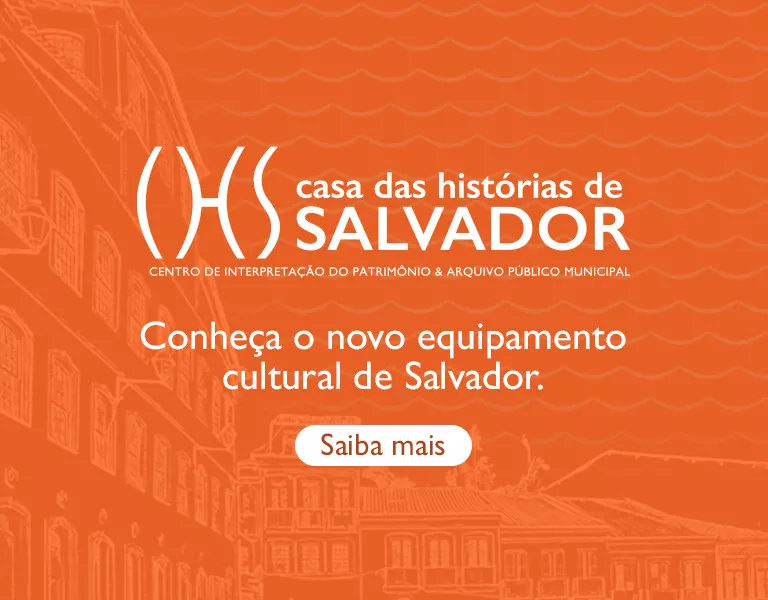
Museum of Energy

SESI Casa Branca Cultural Center

A Borracharia

Mercado Modelo

Society for the Protection of the Underprivileged

Casa de Angola (Angola House)

Âncora do Marujo Bar

Antique Bistrô

Bar das Preta

Casarão Dezessete
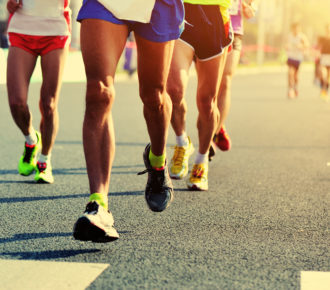
Ultramaratona da Independência
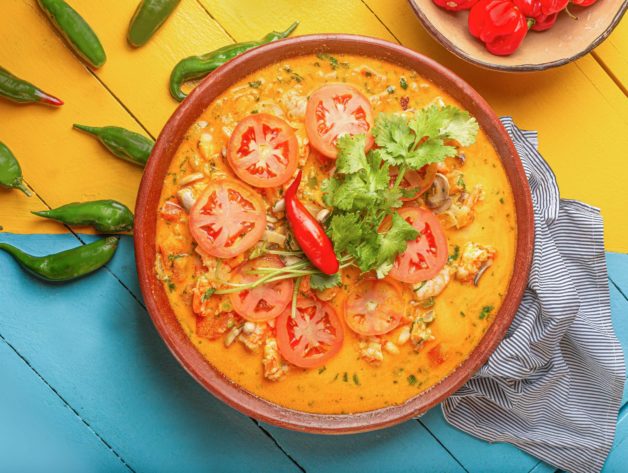
Não tem uma conta? Inscreva-se agora.
Compartilhe
Nós utilizamos cookies para aprimorar e personalizar a sua experiência em nosso site. Ao continuar navegando, você concorda em contribuir para os dados estatísticos de melhoria.
Must-see attractions in Salvador

Igreja NS do Bonfim
This famous 18th-century church, located a few kilometers north of Comércio on the Itapagipe Peninsula, is the source of the fitas (colored ribbons) you…
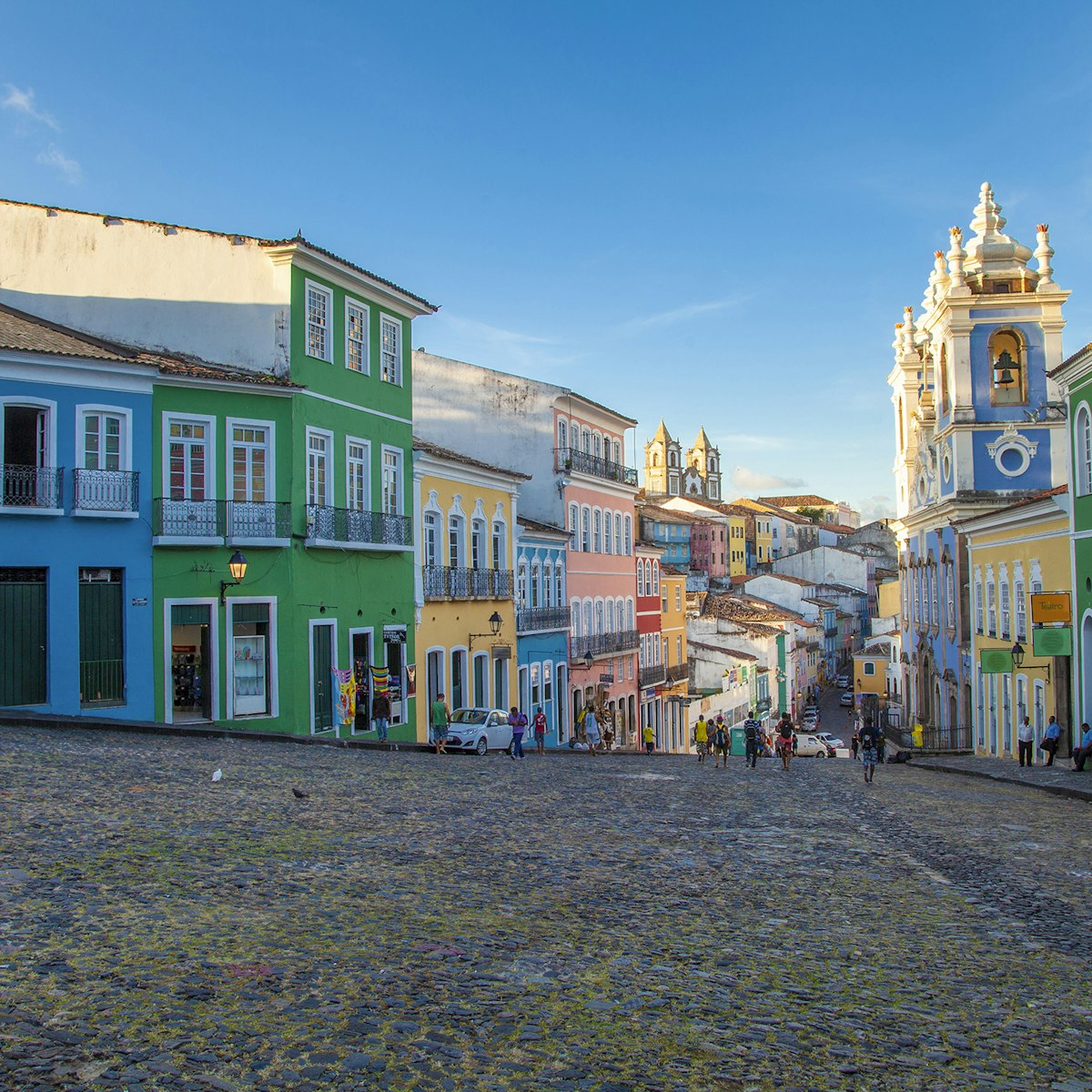
The centerpiece of the Cidade Alta is the Pelourinho, a Unesco-declared World Heritage site of colorful colonial buildings and magnificent churches. As…
Museu Náutico da Bahia
This excellent nautical museum in Forte de Santo Antônio da Barra contains relics and displays from the days of Portuguese seafaring, plus exhibits on the…
Largo do Pelourinho
Picture-perfect Largo do Pelourinho is a sloping, triangle-shaped square, once the site of the pelourinho (whipping post) – one of several nearby…
Museu Afro-Brasileiro
Holding one of Bahia’s most important collections, the Museu Afro-Brasileiro exhibits wood carvings, baskets, pottery and other artwork and crafts linking…
Forte de Santo Antônio da Barra
Built in 1698, Bahia’s oldest fort is more commonly called the Farol da Barra for the lighthouse (South America’s oldest) within its walls. In addition to…
Mercado Modelo
The original 1861 Customs House, where slaves were housed when they arrived in Salvador, was partly destroyed in a fire in 1986. After reconstruction, it…
Fundação Casa de Jorge Amado
Literary types shouldn't miss a quick visit to the Fundação Casa de Jorge Amado, offering an overview of the life of one of Brazil’s best-known writers. A…
Casa do Carnaval da Bahia
The story of Salvador's world-famous Carnaval is told through wonderfully evocative archival video and photographs at this museum which opened in 2018…
Museu de Arqueologia e Etnologia
Below the Museu Afro-Brasileiro (one admission ticket gets you into both), the Museu de Arqueologia e Etnologia exhibits indigenous Brazilian pottery,…
Igreja da Ordem Terceira do Carmo
The original church, founded in 1636, burnt to the ground; the present neoclassical structure dates from 1828. The nave has a French organ and a baroque…
Museu Carlos Costa Pinto
This lovely two-story mansion houses some of Salvador’s finest decorative art, from the collection of the patrician couple Carlos de Aguiar Costa Pinto…
Igreja e Convento São Francisco
One of Brazil’s most magnificent churches, the baroque Igreja e Convento São Francisco is filled with displays of wealth and splendor. An 80kg silver…
Escola Olodum
Stop into the headquarters of Olodum for information on percussion workshops and tours (only for small groups, not individual travelers), which include a…
Igreja NS do Rosário dos Pretos
The king of Portugal gave the Irmanidade dos Homens Pretos (Brotherhood of Black Men) the land for the periwinkle-blue Igreja NS do Rosário dos Pretos in…
Forte São Diogo
It's worth the uphill hike to this 17th-century fort: from here, the views of the bay are fantastic.
Elevador Lacerda
The beautifully restored, art deco Elevador Lacerda connects the Cidade Alta with Comércio via four elevators traveling 72m in 30 seconds. The Jesuits…
Solar do Unhão
This well-preserved, 18th-century complex served as a transfer point for sugar shipments: legend says it's haunted by the ghosts of murdered slaves. Today…
Museu de Arte Moderna
Museu de Arte Moderna has a changing display of avant-garde exhibits (and erratic opening times). The hillside sculpture garden is a pleasant place to…
Praça da Sé
The history of Praça da Sé reveals intriguing details about Salvador's development. From 1552 to 1933, the square was the site of the grand Sé Primacial…
Terreiro de Jesus
A colorful intersection of vendors, tourists, capoeiristas and colorful locals, the Terreiro de Jesus is a historic site of religious celebrations, and is…
Escadas do Carmo
Leading away from the Pelourinho, the steep Ladeira do Carmo provides access to the Escadas do Carmo, a wide set of steps that were the setting of O…
Museu de Arte da Bahia
Museu de Arte da Bahia showcases works from Bahian artists, with paintings by José Teófilo de Jesus (1758–1817) and drawings by Argentine artist Carybé…
Catedral Basílica
The Catedral Basílica dates from 1672 and is a marvelous example of Jesuit architecture. The interior is elegant and simple, with marble-covered walls and…
Plano Inclinado Gonçalves
After sitting, unused, for almost three years, the 1874 funicular railway Plano Inclinado Gonçalves reopened in 2014. The restored line connects Comércio…
Faculdade de Medicina Building
A Portuguese prince, upon arrival in Salvador in 1808, founded a school of surgery here that was later named the Bahia School of Medicine.
Forte Santa Maria
A 17th-century stone fortification that's administered by the Navy.
More destinations you need to see
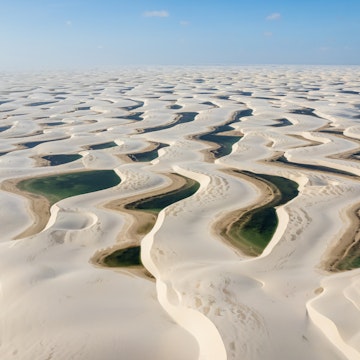

11 Top-Rated Tourist Attractions in Salvador
Written by Barbara Radcliffe Rogers Updated Dec 25, 2023 We may earn a commission from affiliate links ( )
Capital of the state of Bahia and the largest city in northeastern Brazil, Salvador was the first town in the colony of Brazil. Founded in 1549, the early town sat on a crag accessed only on steep tracks climbing from the harbor, almost directly below on the large bay called Baía de Todos os Santos.
Today, this old town is still filled with 17th- and 18th-century colonial buildings that have earned it a UNESCO World Heritage designation . This is where you'll find Salvador's most beautiful churches and monasteries, which are among its major tourist attractions.
Salvador was Brazil's capital until 1763, when it was succeeded by Rio de Janeiro , and for three centuries, it was the principal port for slaves arriving from Africa. People of African descent still make up the majority of the population, and African influence is evident in Salvador's music, festivals, and cuisine, as well as in religious groups such as Candomblé and Umbanda.
To find the best places to visit in this historic city, refer to our list of the top attractions in Salvador.
See also: Where to Stay in Salvador
1. Pelourinho
2. são francisco, 3. elevador lacerda (elevator to upper town), 4. cathedral, 5. igreja da ordem terceira do carmo (carmelite church), 6. igreja do senhor do bonfim, 7. farol da barra, 9. mercado modela and cidade baixa (lower town), 10. igreja nossa senhora do rosário dos pretos, 11. santa teresa and the museum of sacred art, where to stay in salvador for sightseeing.
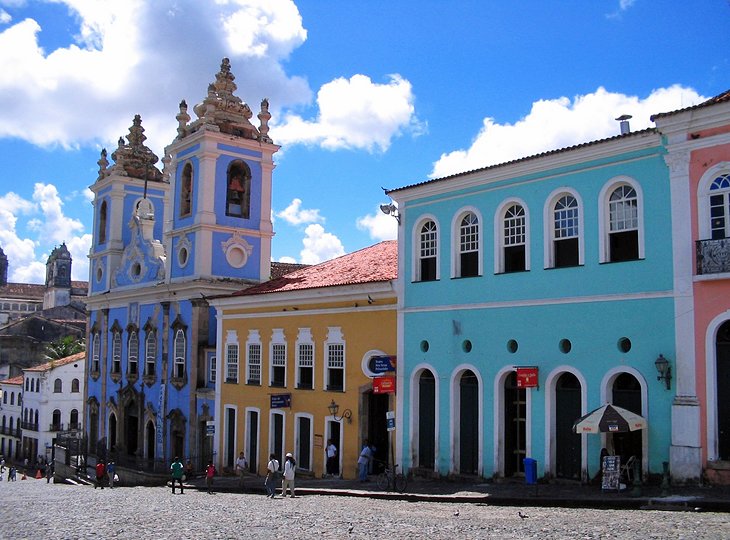
Salvador's Cidade Alta (Upper Town) , which was the governmental and residential center when the city was the capital of the colony of Brazil, sits on an escarpment 85 meters above the shore. At its heart, in the district known as Pelourinho, is the finest ensemble of 17th- and 18th-century colonial buildings in Latin America, so outstanding that it was declared a UNESCO World Heritage site .
In Rua Gregório de Matos are the Museu da Cidade (City Museum), with life-size Candomblé figures used in ceremonial dances, and the Abelardo Rodrigues Museum, containing sacred art and folk art, housed in a 1701 mansion.
Also in the Pelourinho quarter is the Casa do Benin , devoted to the culture of the old kingdom of Benin (now southern Nigeria), from which most of the slaves were shipped to Bahia.
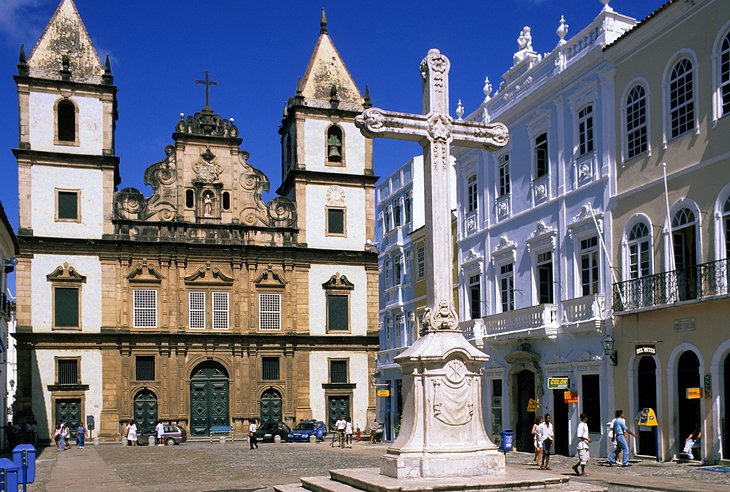
In a city known for its strikingly ornate churches, São Francisco stands out as the most highly decorated, its interior awash in gold-covered wood carving. The gilding of the high altar is so ornate that it took two years to complete.
The church mingles Mannerist and Baroque styles and was built between 1708 and 1750. The ceiling is painted in scenes and themes associated with the Virgin Mary, and the choir combines elaborate wood carving with azulejo (tiled) pictures. The walls of the adjoining square cloister are also faced with superb Portuguese azulejo pictures.
Directly next to the friary church is the impressive carved facade of the Igreja da Terceira Ordem de Sao Francisco, church of the Franciscan Third Order. Statues of saints and angels and other sculptural decoration covering the face of the church, along with the sumptuous decoration of the interior, outdoes the Portuguese and Italian Baroque, resembling the Spanish Churrigueresque style so popular in colonial Mexico.
Address: Cruzeiro de Sao Francisco, Salvador, Bahia
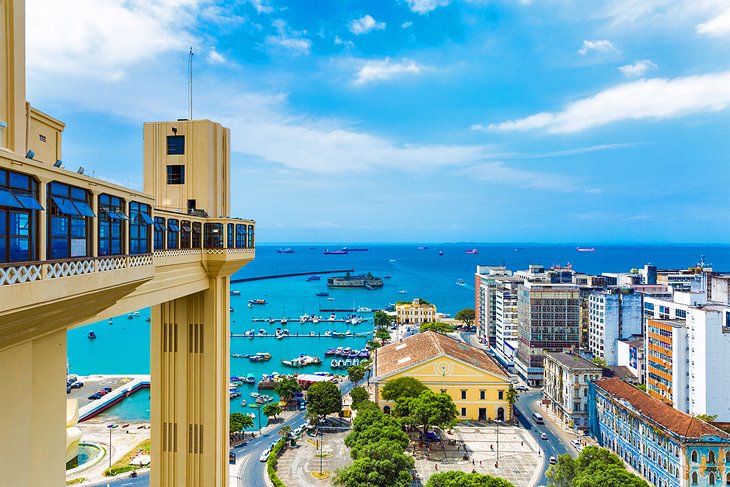
The upper and lower towns are linked by steep streets and a number of lifts, including the Plano Inclinado de Gonçalves (a funicular) and the Elevador Lacerda, a dramatic free-standing elevator that has become a landmark of Salvador.
Built in 1930, the Art Deco elevator links Praça Cairu in the harbor area with Praça Tomé de Souza in the historic old town. From the terrace formed by the upper plaza, Praça Tomé de Souza, there is a superb view of the lower town and the harbor.
On Praça Tomé de Souza are a number of 17th-century buildings, including striking white Palácio Rio Branco , one of Brazil's most historic palaces and formerly the seat of the Bahian government.
Address: Praca Tomé de Souza, Salvador, Bahia
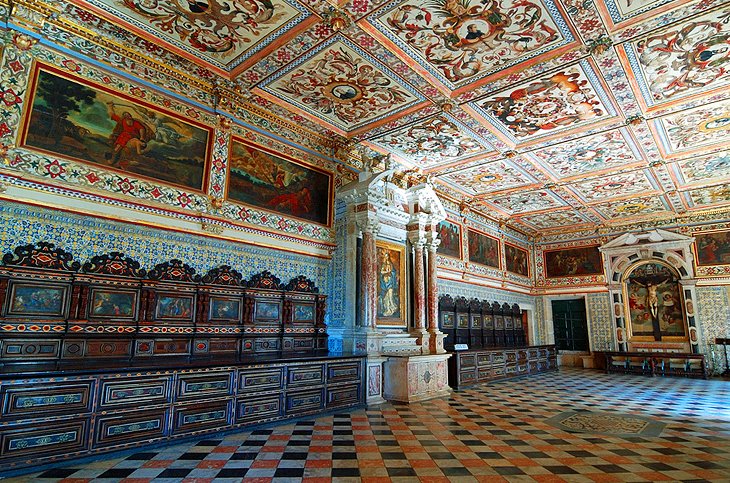
On the Terreiro de Jesus, adjoining Praça da Sé , is the cathedral, originally the church of the former Jesuit College, which was built between 1604 and 1656. The façade was faced with stone brought as ballast from Portugal, and the interior was decorated in Baroque style in the 18th century.
The side chapels off the nave are especially interesting for the variety of art in the altarpieces, which date from the late 16th century through the mid-18th century. The sacristy is richly furnished and decorated in the Baroque style, with 17th-century azulejos (Portuguese pictorial tiles) and painted ceiling panels.
At one time, the Jesuit seminary was the largest of its kind outside Rome, and it's interesting to tour for its cloisters and quarters. Also on the Terreiro de Jesus are the 1709 church of São Pedro dos Clérigos and São Domingos de Gusmão , a 1731 Dominican church with a Rococo façade.
Address: Terreiro de Jesus, Salvador, Bahia
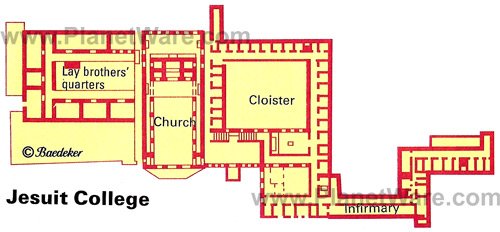
The original Carmelite church on this site was built from 1580 onward but burned in 1788 and was rebuilt forty years later. Its architecture is classic Baroque, with elegant lines and twin bell towers, but it is best known for its stunning sacristy, a room almost completely lined in gold.
This little-known treasure now houses a museum of sacred art, the most outstanding of which is the cedarwood sculpture Christ in Chains by Francisco Manuel das Chagas, known as O Cabra, a slave who became a notable sculptor in the 18th century. The statue, carved in 1710, is set with more than 1,000 rubies, each representing a drop of Christ's blood.
The architectural and decorative features of the large and beautiful convent next to the church have been carefully preserved as a luxury hotel.
Address: Largo do Carmo, Salvador, Bahia
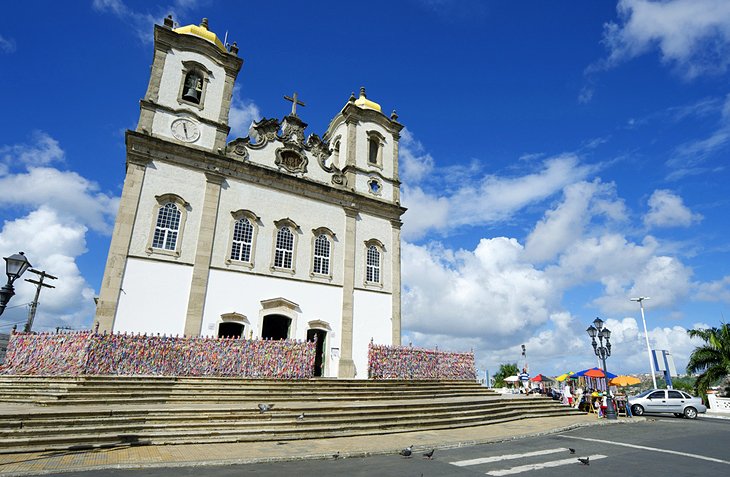
One of Bahia'a most popular churches is the Igreja do Senhor do Bonfim, built 1745-54. The church's ex-voto room contains thousands of votive offerings giving thanks to Senhor do Bonfim for miracles performed.
It's also the scene of a colorful festival. In late January, an enormous procession of people make their way from Nossa Senhora da Conceição da Praia to the church of the Senhor do Bonfim, where they wash the steps leading up to the entrance. On the Monday following this washing, the Festa do Bonfim is celebrated with typical local food and drink, samba de roda dances, and performances of capoeira, a uniquely Brazilian martial art that combines acrobatics and dance.
Address: Praca Senhor do Bonfim, Salvador, Bahia
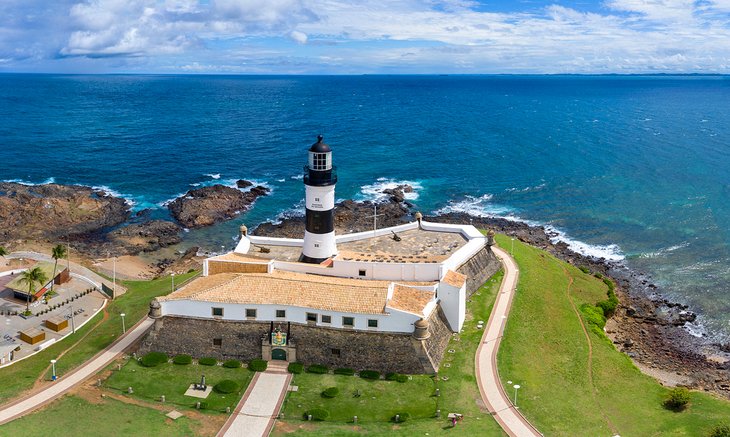
About five kilometers from the city center, overlooking one of Salvador's best beaches, the lighthouse of Farol da Barra is a historic landmark, but also one of the favorite places to visit for locals because there are so many things to do here.
Not only can you climb to the top for views of the city and All Saints Bay, but there are places to eat, beach umbrellas and loungers for rent, and a fort with the Nautical Museum of Bahia .
The museum is filled with nautical instruments, shipwreck salvage, maps, and model ships; the fort itself is Brazil's oldest military building , dating from 1534.
Farol da Barra is the favorite place to go to watch the sunset.
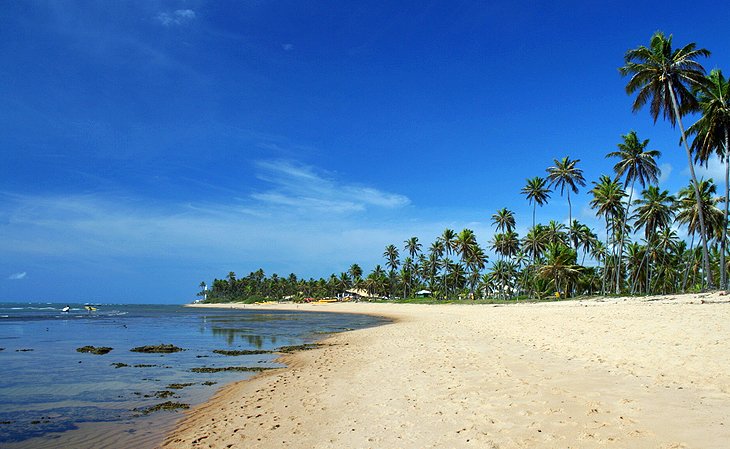
Salvador sits on a peninsula that separates the large natural harbor of Baía do Todos Santos (All Saints Bay) from the Atlantic Ocean. Both the bay and ocean coasts are lined by white sand beaches where locals go to hang out, picnic, surf, and swim. The beaches on the bay side are protected and good for swimming, while those on the open ocean provide plenty of waves for surfers.
Closest to the city center is Porto da Barra , the site of Bahia's first European settlement and a popular hangout for locals, and Praia do Farol da Barra , which has rocky pools near the lighthouse and good surf conditions at the far end.
In a lively neighborhood with lots of restaurants near the beach, Praia do Rio Vermelho is popular. South of the city are three coastal islands, of which Tinharé and Boipeba have long palm-lined beaches sheltered from the Atlantic surf.
Praia do Farol de Itapoã , near the beautiful Abaté Lagoon, has huge dunes and wide protected beaches of white sand. As anywhere, it is advisable to leave nothing of value unattended on the beach.
Address: Largo do Pelourinho, Salvador, Bahia
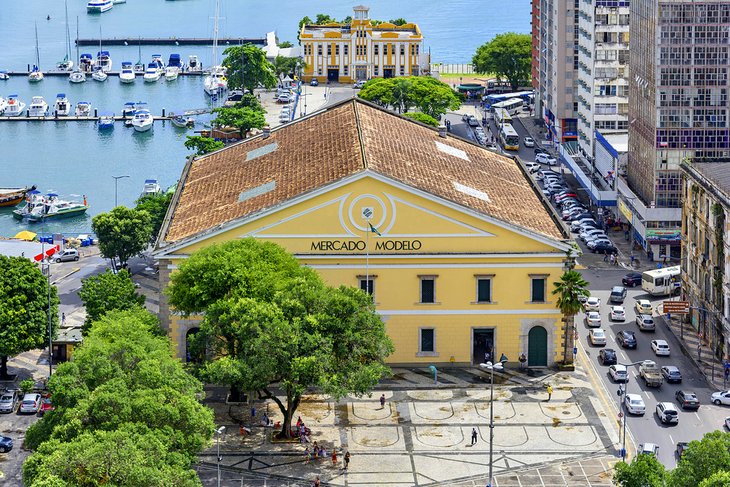
At the base of the Elevador Lacerda, Salvador's commercial and business center stretches along the harbor, and at the foot of the elevator is the Mercado Modela, a busy marketplace that's a popular place to visit for both tourists and locals.
The building, which was renovated into a market, was the original 1861 Customs House, where slaves were housed when they arrived in Salvador. Today, it's a bustling center with restaurants on the upper floor.
Opinion is divided whether it's a trap for unsuspecting tourists, who are quoted higher prices than locals, or an excellent place to see and buy good quality local art and craft works. Bargaining is expected.
Also near the elevator is the imposing Baroque church of Nossa Senhora da Conceição da Praia , built between 1739 and 1765 of pedra de lioz, a marble-like stone brought from Portugal as ballast in the sailing ships that transported Brazilian products back to Europe. The ceiling painting in the nave, done by José Joaquim da Rocha in 1773, is a masterpiece of trompe-l'oeil. In the church is a museum of sacred art.
Several museums are in this neighborhood, including the Museu de Arte de Bahia ; the Carlos Costa Pinto Museum displaying furnishings and jewelry of the 17th-19th centuries; and the Solar do Unhão, a colonial building housing the Museum of Modern Art . The Palácio da Aclamação , former residence of the Governor of Bahia, has beautiful gardens and a luxurious interior open to the public as a museum.
Address: Praça Visc. de Cayru, Comercio, Salvador
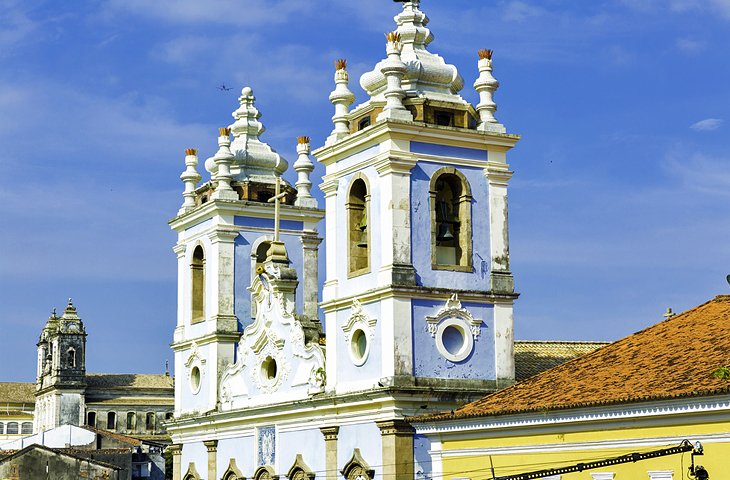
Construction of this beautiful Baroque church began in 1704, when the king of Portugal gave the land to the Irmandade dos Homens Pretos (Brotherhood of Black Men). As many of the workers were slaves and could only work at night after their regular labor was finished, the building progressed slowly for almost a century.
It wasn't until 1870 that the façade (now painted sky blue) and towers were even begun. The church was for the black population, both slaves and freed slaves, who were not allowed to worship in the city's other churches. Inside, you'll find 18th-century statues of black saints, and behind the church is a slave cemetery.
The church of Santa Teresa was built from 1666 to 1697, modeled on the Gesó church in Rome. The adjoining former convent of Discalced Carmelites now holds the Museum of Sacred Art, with an important collection of 17th- to 19th-century portrait sculpture in clay, wood, ivory, soapstone, and lead.
Particularly impressive are the sculptured figures and reliquaries by the Benedictine monk Agostinho da Piedade, notably the reliquary bust of St. Lucia from about 1630, one of the earliest examples of silver portrait sculpture in Brazil.
The museum also contains works by the sculptor-monk Agostinho de Jesus and paintings of the Cuzco school and works of the great colonial painters José Joaquim da Rocha, José Teófilo de Jesus, and Ricardo do Pilar.
Address: Rua Sodré, Salvador, Bahia
We recommend these charming hotels in Salvador near the city's best historical attractions:
- Villa Bahia : This luxury boutique hotel has an excellent old town location on Largo do Cruzeiro de São Francisco. The property features individually decorated rooms, antique furniture, and an outdoor pool.
- Pousada Bahia Pelô : A boutique hotel right in the historic center, this accommodation offers individually decorated rooms and a friendly personal atmosphere.
- Wish Hotel da Bahia : At this mid-range hotel, you can expect to find excellent customer service, two beautiful pools, a 24-hour fitness center, and a full-service spa.
- Bahiacafe Hotel : This budget-friendly hotel is set in the historical center in a colonial-style building, and showcases colorful decor.
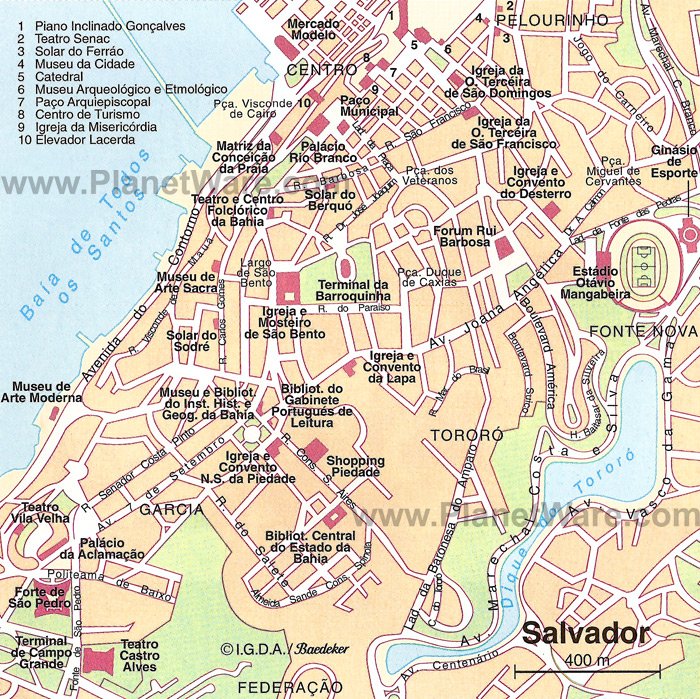
More on Brazil
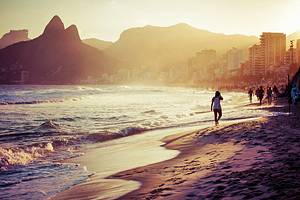
Take advantage of the search to browse through the World Heritage Centre information.
Share on social media
Unesco social media, historic centre of salvador de bahia.
- Description
As the first capital of Brazil, from 1549 to 1763, Salvador de Bahia witnessed the blending of European, African and Amerindian cultures. It was also, from 1558, the first slave market in the New World, with slaves arriving to work on the sugar plantations. The city has managed to preserve many outstanding Renaissance buildings. A special feature of the old town are the brightly coloured houses, often decorated with fine stucco-work.
Description is available under license CC-BY-SA IGO 3.0
Centre historique de Salvador de Bahia
Première capitale du Brésil de 1549 à 1763, Salvador de Bahia a été un point de convergence des cultures européennes, africaines et amérindiennes. Elle a également été, dès 1558, le premier marché d’esclaves du Nouveau Monde à destination des plantations de cannes à sucre. La ville a pu préserver de nombreux exemples exceptionnels d’architecture Renaissance. Les maisons polychromes aux couleurs vives, souvent ornées de décorations en stuc de grande qualité, sont une des caractéristiques de la vieille ville.
وسط سلفادور دي باهيا التاريخي
كانت مدينة سلفادور دي باهيا العاصمة الأولى للبرازيل بين العام 1549 و1763 وشكّلت ملتقى للثقافات الأوروبية والأفريقية والهندية الأميركية. وسرعان ما تحوّلت، انطلاقاً من العام 1558، إلى أول سوق للرقيق في العالم الجديد الذي كان يتم استغلاله في حقول قصب السكر. وتمكنّت المدينة أيضاً من الحفاظ على العديد من الأمثلة الإستثنائية عن الهندسة الخاصة بعصر النهضة. ولعلّ المنازل الزاهية بالألوان المتعددة والمزيّنة غالباً بزخرفة فاخرة من الجصّ هي إحدى ميزات المدينة القديمة.
source: UNESCO/CPE Description is available under license CC-BY-SA IGO 3.0
巴伊亚州的萨尔瓦多历史中心
萨尔瓦多是巴西第一个首都,在1549至1763年期间见证了欧洲文化、非洲文化和美洲文化在这里的融合。从1558年开始,殖民者将非洲奴隶贩卖到这里的甘蔗园地劳动,使得萨尔瓦多成为了新大陆(New World)第一个奴隶市场。城市保留了很多著名的文艺复兴时期典型建筑。老城的一个独特之处就是色彩鲜亮的房屋,通常都采用了上好的涂墙泥灰来装饰。
Centro histórico de San Salvador de Bahía
Primera capital del Brasil (1549-1763), San Salvador de Bahía ha sido un punto de confluencia de culturas europeas, africanas y amerindias. En 1588 se creó en ella el primer mercado de esclavos del Nuevo Mundo, destinados a trabajar en las plantaciones de caña de azúcar. La ciudad ha podido conservar numerosos edificios renacentistas de calidad excepcional. Las casas de colores vivos, magníficamente estucadas a menudo, son características de la ciudad vieja.
サルヴァドール・デ・バイア歴史地区
source: NFUAJ
Historisch centrum van Salvador de Bahia
Als eerste hoofdstad van Brazilië – van 1549 tot 1763 – ontstond de stad door een vermenging van Europese, Afrikaanse en Amerikaans-Indiaanse culturen. Vanaf 1558 was er de eerste slavenmarkt van de Nieuwe Wereld, waar slaven werden verhandeld om te werk te worden gesteld op de suikerrietplantages. De belangrijke economische en politieke rol van Salvador de Bahia eindigde in 1763 door verplaatsing van de regering naar Rio de Janeiro. Er zijn vandaag de dag talrijke uitzonderlijke renaissancegebouwen bewaard gebleven. Een speciaal kenmerk van de oude stad zijn de felgekleurde huizen, die vaak versierd zijn met fijn pleisterwerk.
Source: unesco.nl
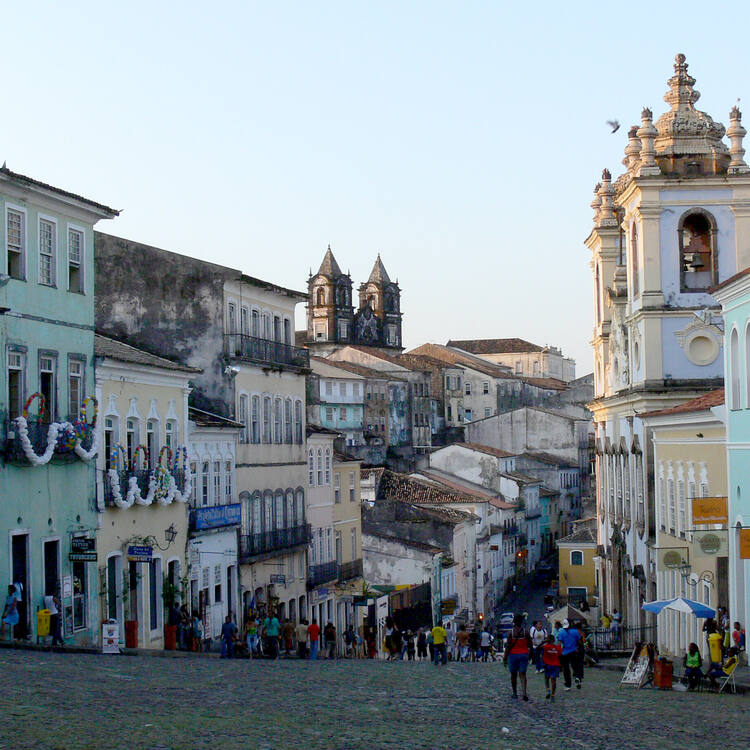
Outstanding Universal Value
Brief synthesis
Founded in 1549 on a small peninsula that separates Todos os Santos Bay from the Atlantic Ocean on the northeast coast of Brazil, Salvador de Bahia became Portuguese America’s first capital and remained so until 1763. Its founding and historic role as colonial capital associate it with the theme of world exploration. Salvador de Bahia’s historic centre – an eminent example of Renaissance urban structuring adapted to a colonial site – is the Cidade Alta (Upper Town), a defensive, administrative and residential neighbourhood perched atop an 85-m-high escarpment. This densely built colonial city par excellence of the Brazilian northeast is distinguished by its religious, civil and military colonial architecture dating from the 17th to the 19th centuries. Salvador de Bahia is also notable as one of the major points of convergence of European, African and American Indian cultures of the 16th to 18th centuries.
The settlement of Salvador de Bahia, strategically situated overlooking an immense bay on the Brazilian coast, was aimed at centralising the activities of the metropolis in Portuguese America and facilitating trade with Africa and the Far East. The city grew quickly, becoming Brazil’s main seaport and an important centre of the sugar industry and the slave trade. The historic centre’s main districts are Sé, Pelourinho, Misericórdia, São Bento, Taboão, Carmo and Santo Antônio. Pelourinho is characterized by its fidelity to the 16th-century plan, the density of its monuments and the homogeneity of its construction. In addition to major buildings dating to the 17th and 18th centuries such as the Catedral Basílica de Salvador and the churches and convents of São Francisco , São Domingos , Carmo and Santo Antônio , the Historic Centre of Salvador de Bahia retains a number of 16th-century public spaces, including the Municipal Plaza, the Largo Terreiro de Jesus and the Largo de São Francisco , as well as baroque palaces, among them the Palácio do Arcebispado , Palácio Saldanha and Palácio Ferrão . There are many streets lined with brightly coloured houses, often decorated with fine stucco-work, that are characteristic of the colonial city. Salvador de Bahia was also, from 1558, the first slave market in the New World, with slaves arriving to work on the sugar plantations. Echoes of this multicultural past survive to the present day in the historic centre’s rich tangible and intangible heritage.
Criterion (iv): Salvador de Bahia is an eminent example of Renaissance urban structuring adapted to a colonial site having an upper city of a defensive, administrative and residential nature which overlooks the lower city where commercial activities revolve around the port. The density of monuments, with Ouro Preto (included on the World Heritage List in 1980), makes it the colonial city par excellence in the Brazilian northeast.
Criterion (vi): Salvador de Bahia is one of the major points of convergence of European, African and American Indian cultures of the 16th to 18th centuries. Its founding and historic role as capital of Brazil quite naturally associate it with the theme of world exploration already illustrated by the inclusion on the World Heritage List of the Old Havana (1982), Angra do Heroismo (1983), San Juan de Puerto Rico (1983), and Cartagena (1984).
Within the boundaries of the Historic Centre of Salvador de Bahia are located all the elements necessary to express its Outstanding Universal Value, including the escarpment that divides it into Upper and Lower towns; the Pelourinho district’s underlying 16th-century urban plan; and the web of streets with rows of uniform houses interwoven with notable examples of religious, administrative, military and commercial and monumental architecture dating from the 17th to the 19th centuries. The city’s 78.28-ha historic centre is of sufficient size to adequately ensure the complete representation of the features and processes that convey the property’s significance. The Historic Centre of Salvador de Bahia does not suffer from adverse effects of development and/or neglect. Nevertheless, the greater city’s population has grown quickly since 1966 due to the region’s industrial development, resulting in the historic centre becoming enclosed on three sides by a very dense urban zone.
Authenticity
The Historic Centre of Salvador de Bahia has a high degree of authenticity in terms of location and setting, forms and designs, and materials and substances. In the 1990s, some 1,350 properties were restored in the Pelourinho district with the objective of developing the economic potential of the area by exploiting tourism. Concurrently, the number of residents in the historic centre decreased from 9,853 in 1980 to 3,235 in 2000 in a process of depopulation.
Protection and management requirements
The Historic Centre of Salvador de Bahia is protected by laws enacted by the three levels of government: Decree-Law 25/1937, implemented by the federal government through the Instituto do Patrimônio Histórico e Artístico Nacional (National Institute of Historical and Artistic Heritage – IPHAN); Law 3660/1978, passed by the Bahia state government through the Instituto do Patrimônio Artístico e Cultural da Bahia (Artistic and Cultural Institute of Bahia – IPAC); and Municipal Law 3289/1983, setting forth Specific Municipal Legislation for the Protection of Cultural Property, through which a protection area encompassing the IPHAN-designated cultural site is established and joint reviews by the three levels of government of all proposed projects within the protected zone are required. The 2008 Plano Diretor Urbano de Salvador (Urban Master Plan for Slavador – PDDU) formally certifies the existing federally designated heritage areas and those covered under the Specific Municipal Legislation statute (Law 3289/1983). In addition, the Escritório Técnico de Licenciamento e Fiscalização (Technical Licensing and Oversight Office – ETELF) was created to facilitate the implementation of concerted and coordinated measures and oversight by the three levels of government in the Historic Centre of Salvador de Bahia, with a view to enhancing integration in this area.
The 2010 Plano de Reabilitação Participativo do Centro Antigo de Salvador (Participatory Rehabilitation Plan for the Old Centre of Salvador) aims to address the economic, social, environmental and urbanistic issues that were inadequately addressed in the rehabilitation programmes undertaken from the 1960s to the 1990s, which invariably centred on proposed increases in tourism and other tertiary activities in the Pelourinho district, draining the historic centre of its key management, administrative and business functions and leading to a progressive population exodus and a corresponding deterioration of the urban landscape.
Sustaining the Outstanding Universal Value of the property over time will require continuing the integrated efforts to revitalize the area and reverse the process of urban decay; advancing residential revitalization of the historic centre to counteract the progressive population exodus and to sustain the area as a living organism within the urban landscape; and establishing monitoring indicators for these and any future interventions, to ensure that such interventions do not have a negative impact on the Outstanding Universal Value, authenticity and integrity of the property.
- Google Arts & Culture: Story

State of Conservation (SOC)
Protections by other conservation instruments.
1 protection / 1 element
- Samba de Roda of the Recôncavo of Bahia
Read more about synergies
- 1.1 History
- 1.2 Orientation
- 1.4 Climate
- 2.1 By plane
- 2.3 By boat
- 3.1 By foot
- 3.3 By taxi
- 3.5 By bicycle
- 3.6 By metro
- 5.1 Go to the beach
- 7.2 Mid-range
- 7.3 Splurge
- 8.2 Nightclubs
- 9.2 Mid-range
- 9.3 Splurge
- 10.1 Consulates
- 11 Stay safe
- 12 Stay healthy
Salvador is the capital of the state of Bahia , Brazil . With a charming Old Town (a World Heritage Site ), a vibrant musical scene and popular Carnaval celebrations, it is considered one of the birthplaces of Brazilian culture. It is the biggest city in the Northeast region, and was the first capital of Brazil.
Understand [ edit ]
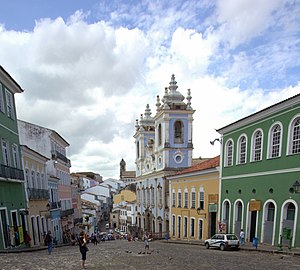
Salvador is a enchanting city full of mysteries and charms. There are millions of tourists every year flocking to Salvador to enjoy its beaches. Parts are best explored on foot, such as dense historical areas including the Pelourinho and the Lacerda Lift, the first urban lift in the world, and the Mercado Central.
History [ edit ]
Founded in 1549 by the Portuguese, Salvador was the capital in the heyday of the slave trade. The legacy remains today in its large Afro-Brazilian population, and the resulting culture in many ways outshines the rest of Brazil; in music, many of the greatest names from the mid-20th century to the present hail from Salvador, such as Dorival Caymmi, Gilberto Gil, and Caetano Veloso. In literature, the late Jorge Amado was also from the region. It's a vibrant, exciting city, and its people are quite friendly.
Orientation [ edit ]
Salvador is on a peninsula on the north-east coast of Brazil which shields the large Baía de Todos os Santos ("All Saints Bay") from the Atlantic Ocean. The city is the third largest in Brazil, sprawling for dozens of kilometres inland from the coast. Most visitors head for the coastal neighbourhoods that cluster around where the bay meets the ocean. Salvador, Brazil has a tropical climate including rainforests and lush vegetation.
A 100-m cliff runs along the entire bayshore, dividing the city into Cidade Alta , up on the cliff, and the Cidade Baixa down by the bay. The former features Pelourinho , the old city center that packs historical sites, colonial architecture, museums, restaurants, bars, hostels, artisanal shops, and music/dance/capoeira academies into a convenient, albeit tourist-swarmed, set of winding cobblestone streets. The latter features a commercial center with lots of bus traffic coming in from all over Salvador.
Outside of this area, there are many beach districts that stretch from the tip of the peninsula northeast along the Atlantic coast. The Barra neighborhood at the tip of the peninsula is the main alternative jumping-off point to Pelourinho, and a little further to the northeast are the hip neighborhoods of Rio Vermelho and Amaralina , which feature a nightlife less geared to the foreign tourism industry. A decent bus ride beyond these is the neighborhood of Itapuã , which has an energetic beach side nightlife and relatively few foreign visitors. Northward from there are kilometres and kilometers of gorgeous beaches, all accessible by bus.
The bayshore coast north beyond Pelourinho features a more tranquil atmosphere and a locally patronized, though less scenic, beach life. The interior of Salvador is where the "new city" has developed, full of residential neighborhoods, shopping megaplexes, and knotted highways, all of which can be quite alienating without actually having a friend to show you around.
Local residents enjoy sharing their exotic dancing and music skills with tourists. Residents are also considered some of the friendliest people on the planet.Tourist are welcomed with open and friendly arms by the majority of local residents.
People [ edit ]
People of Salvador, as other people from the state of Bahia , have a reputation of being relaxed, easygoing, and fun-loving, even by Brazilian standards, and of leading a "slow life". It's questionable whether this reputation is true, as the hectic behavior of pedestrians and drivers in traffic does not seem to be typical of "slow" or "relaxed" people. Regardless, few soteropolitanos (natives of Salvador) seem to bother with this reputation, even the bad part of it, and some even make fun of their own supposed laziness. Also, most people in Brazil agree that soteropolitanos are generally friendly and warm people.
As a former African slave port, Salvador inherits a massive social inequality with notable racial tones, with a wealthy minority being mostly white and often living in gated communities, and the majority of people being relatively poor and mostly black or mixed. The city's highly famous Carnival has been a subject of controversy, with many criticising the lack of participation of locals in the event (as they can rarely afford the expensive tickets), and others remarking the importance of the event to the city's tourism and economy.
Climate [ edit ]
With a tropical climate and year-round sunny weather, temperatures in Salvador do not vary much. In summer, average maximum temperatures reach 30 °C (86 °F) and in winter, temperatures are between 26 °C (79 °F) and 21 °C (70 °F). However, humidity can give a greater thermal sensation than that. If you go swimming, the sea also has a pleasant average temperature of 27 °C (81 °F) all year round. With lots of sun and heat throughout the year, your concern as a tourist will just escape the rainy season, which lasts from April to June in Salvador.
With over 2,400 hours of sunshine a year, it's essential to use sunscreen in this sunny city.
Get in [ edit ]

By plane [ edit ]
Scheduled airlines:
- LATAM (all Brazil, Miami and Buenos Aires ).
- Gol (all Brazil, Buenos Aires and Rosário ).
- Azul Linhas Aéreas ( Vitória da Conquista , Paulo Afonso , Ilhéus , Porto Seguro , Teixeira de Freitas , Lençóis , Recife , Belo Horizonte , Fortaleza , Goiânia ), Feira de Santana , Campinas and Cuiabá ).
- Passaredo ( Vitória da Conquista , Barreiras, Brasília and Ribeirão Preto).
- TAP ( Lisbon ).
- Aerolineas Argentinas ( Buenos Aires and Córdoba )
- Air Europa ( Madrid )
- Cabo Verde Airlines (Ilha do Sal)
- Copa Airlines ( Panamá City )
- Condor ( Frankfurt ).
The airport is 28 km from the city center (via the Paralela expressway) or 32 km (via the seaside). There is a subway station easily reached by a free bus shuttle from the terminal. The subway fare is R$3.70 (including transfer to city buses). The subway is the best option to reach the city, it goes to the city center and also connects the airport directly to the main bus terminal (Estação Rodoviária). To Barra, Campo Grande or Ondina area, take the subway to Lapa Station (Line 1) and then a short bus ride (or a taxi/Uber). To Pelourinho, take the subway to Campo da Pólvora Station and then walk (around 900 meters, it's ok if you're arriving during the day) or take a taxi or Uber. To the ferry-boat terminal (to Itaparica), take the subway to Acesso Norte Station (Line 1 and 2) and then a bus towards São Joaquim. Two kinds of taxis are available in the airport, the executive taxis (Coometas and Comtas), and the normal taxis . Executive taxis are pre-paid, they have a table of prices rather than a meters. The other taxi option would be the normal taxis which are metered. A third option would be the executive air-conditioned minibuses which depart every 20 minutes to the Praça da Sé, in downtown near Pelourinho via the seaside, stopping at famous beaches like Ondina, Pituba, Amaralina and Itapuã, and Barra as well as stopping by Shopping Barra --an American-style shopping mall located not too far from the Farol da Barra The fare for these buses is R$4. Another option is the urban buses that go to many parts of the city, for the tourist the options are Lapa and Campo Grande buses, the best thing is ask the driver before taking an urban bus, the fare is R$3.70. There is also a shuttle service to some hotels around the city and costs R$25.00. The tickets are sold inside the arrivals area or online. To Praia do Forte , take the subway to Mussurunga Station or Rodoviária Station and then a bus, try to check the schedule of theses buses in advance.
By bus [ edit ]
Salvador's long-distance bus station is in the middle of the new city, 14km from downtown. Salvador is accessible via scheduled buses from all around the country and from Paraguay. Inside the bus stations there are taxis (local taxis and executive taxis) and local buses which can all take you to many places in Salvador and the metropolitan area. Executive buses in the Iguatemi Station can be accessed from the Iguatemi Mall by way of a busy walkway. Bus travel in and out of Salvador can take a lot more time than expected. Count on an average speed of 50-60 km/h when planning your itinerary.
By boat [ edit ]
Salvador is a common stop on international cruise routes and was once visited by the Queen Elizabeth 2 during her sailing career. Note that the docks area can be dangerous. This area is linked to the Pelourinho historic centre by the Elevador Lacerda , and to the city by urban buses and executive buses to Iguatemi .
Get around [ edit ]
By foot [ edit ].
There are a number of transportation options available in Salvador, including taxis, buses and car rentals. the bus fares are quite affordable, although the taxi fares can be quite expensive if one is traveling a long distance.

The old city center can be easily explored on foot. To get between the upper and lower sections, take the Elevador Lacerda or the cable car, remember to take small change as the fare is just R$0.15. The streets between the two are considered dangerous even during the day.
City buses, as in other Brazilian cities, are constant and confusing. Fares are normally R$3.70, as of July 2018 (even for buses into the neighboring city of Lauro de Freitas ). There is also the option of the air-conditioned executive buses for R$5. Remember to board in the back for the full-sized buses.
Know your landmarks and neighborhood names. Any large shopping area will have a complimentary frequented bus stop, and the major intercity terminal, Lapa, is next to Shopping Lapa.
Other major bus terminals include: Estação Iguatemi (between the Rodoviaria and Shopping Iguatemi), and Estação Mussurunga (on the Paralela with buses usually connecting to Praia do Flamengo interior neighborhoods in Salvador).
If you are trying to make your way out of Pelourinho, you can either take the Elevador Lacerda down to the Comercio and find buses for just about every route, or walk to the Praca da Sé bus stop just south of the elevator, which has a much smaller selection of buses passing through, and many options of executive buses.
Buses are safe to ride at night, as long as you are on a frequented (i.e. coastal) route and dress and act inconspicuously. Service stops at midnight and begins again around 04:30-05:00. There are a limited number of lines that provide night service from 00:00-04:00
You can find more about the Salvador bus routes and time tables one the website for the Superintendência de Transporte Público [dead link] (in Portuguese only).
By taxi [ edit ]
Salvador cab drivers must be competing with those in Rio for spots on Formula 1 racing teams. They will certainly get you where you're going quicker than the bus! However, as buses stop running after midnight, do be prepared to haggle quite a bit with taxi drivers who refuse to use the meter, especially if you've decided to explore far from your bed. Executive taxis (white and blue) don't have meters, and the prices are on a table, it's more expensive than city taxis, but they are much more comfortable, they are in stops in the main shopping malls, the airport, bus station, ferry-boat station and big hotels.
By car [ edit ]
Renting a basic car with air conditioning (and 100 km/day or km free) costs R$ 110-140 per day, plus fuel. It's not hard to find your way across Salvador avenues, but although people from Bahia have a reputation of being relaxed and easygoing, traffic is aggressive (somewhat like Rio de Janeiro ), and you will frequently see drivers attempting dangerous overtakes on you. Pedestrians are also careless and unexpectedly run to cross roads and streets. If you are not used to this type of traffic, consider asking for a private driver, which is possible on many car renting agencies. Renting a car may be a good idea if you plan to visit the beaches from the northern part of Bahia, with more time flexibility than allowed by travel agencies.
By bicycle [ edit ]
Cycling is not really a good option to get around in Salvador, as there aren't enough cycleways and parking for bicycles, and drivers don't have any respect for cyclists. An exception is the cycleway along the east coast of Salvador, which runs for 12.55 km and goes from Amaralina to Piatã beaches. Be aware that as the cycleway is not very used, a lot of pedestrians use it for walking.
By metro [ edit ]
Salvador has a metro system consisting of two lines connecting the city center to some suburbs, the airport (Estação Aeroporto) and the long-distance bus terminal (Estação Rodoviária). Pelourinho district is 900 m away from Campo da Pólvora Station. Barra area is linked by very frequent city buses from Lapa Station.
The subway fare is R$3.70 including two city bus transfers with the subway card (Cartão Integração - easily bought at any subway station, including the airport) or with the Salvador bus card (Salvador Card).
See [ edit ]
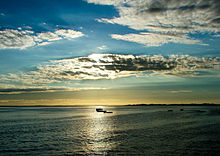
- -12.97474 -38.5092 1 Igreja de São Francisco , Largo do Cruzeiro de São Francisco , ☏ +55 71 3322 6430 . One of the most important churches in barroco style around the world.
- At the center of the Cidade Alta there are the two large squares Praça da Sé and the Terreiro de Jesus which are connected at the corner by the cathedral. The latter is probably the most lively part of town, with food carts and stalls through the day and revealers in the evening hours.
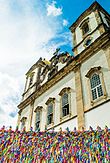
- Abaeté Park — A protected state park around the lake with the same name. The lake is famous because of the stark contrast between the dark water and the very white sand dunes. There is an entertainment area with a lot of bars and live music.
- -12.98232 -38.5203 6 Solar do Unhão . The best place in Salvador to watch the sunset. It is an old style house located at the Baía de Todos os Santos . Inside there is a small museum ( Museu de Arte Moderna ) with local art pieces. Sometimes on Saturday evening there is a jazz concert. ( updated Oct 2020 )

Do [ edit ]
You'll find a huge variety of things to do in Salvador. Some of the popular activities include:
- Day tour of Salvador - Salvador 500 years in 1 day (info: salvador-guide.basix.cc)
- Salvador Parks
- Salvador golf courses
- Salvador music festivals
- Participate at a Candomblé ceremony. Candomblé is an Afro-Brazilian religion that originated in Salvador and still has a significant following in Brazil. Their places of cult are called terreiros and many are open to visit. You can ask at FENACAB (Nacional de Culto Afro Brasileiro). They organise visits with a taxi for 100 Reais and have an office in Rua Portas do Carmo, 39 – 1º andar (antiga Alfredo de Brito) – Pelourinho +55 71 3321 1548. http://bahia.com.br/outros_servicos/federacao-nacional-de-culto-afro-brasileiro/ [dead link] Many travel agencies also organize similar visits for the same price. They are free to enter and tourists are welcome to participate, so if you know a terreiros you can also go by yourself.
A good Brazil tour guide in Salvador, known as a guia de Salvador , will be able to show you around lots of the attractions and activities if you want to explore on your own. A good option to get a general idea and find your way around in the city is the "Salvador Bus", an open-top tour bus passing by the main points of interest and offering explanation on the way.
One of the main attractions in Salvador is the Carnaval. Salvador's giant Carnaval , the biggest of the world, according to the Guinness book of records, lasts for one week and is extremely popular with Brazilians and tourists alike. The event happens in mid-February and consists of parades, live entertainment, music, dancers and vendors. The main parades follow three circuits: one in the historic center Pelourinho (with mainly traditional groups in costumes), one on Campo Grande, where most bands play samba, and the most popular one in Barra/Ondina, where modern Brazilian Axé music mixes with percussion and all kinds of rhythms and styles, and the bands parade between "Camarote" boxes on one side and the beach on the other. Options to participate are either by watching from the camarote boxes, or purchasing an "abadá" shirt to join a group that accompanies one of the bands throughout the parade.
You can expect to have a lot of fun if you vacation in Salvador during Carnaval. Salvador also has many other attractions that tourists will find enjoyable. these include golf courses, museums and even an old 17th-century fort. Anyone wishing to visit Salvador Brazil will find their trip to be entertaining, fun and full of wonderful memories.
Go to the beach [ edit ]
Visiting a Salvador beach is a highlight for many tourists. One of the main central Salvador beaches is Porto de Barra. It was originally the site of the first settlement of European newcomers to Bahia. It can get very crowded on weekends. The north-East region of Salvador concentrates most beaches with good water quality. Flamengo and Stella Maris are the most popular beaches among tourists and upper class locals. They have excellent tourist infrastructure and rough waters excellent for surfing. Jaguaribe, Piatã and Itapoã, with calmer waters, are mostly frequented by locals and can become quite crowded at weekends. They are a good option with you want to mix with the local population, but don't bring anything besides your clothes, sunglasses, sunscreen, and some cash, as muggings are quite common.
The other beaches of Salvador aren't suited for bathing, but still can be good for walking, cycling, or taking pictures. Farol da Barra has a beautiful view (specially during the sunset), but it's difficult to walk due to the rocks. "Farol" means lighthouse, and this beach is known for its lighthouse as well as being popular with surfers. A much safer choice is nearby Plakaford. Here the calm waters and soft sandy beaches are welcoming for families and children. In the city south, there is an array of beautiful beaches that include Tinhare and Boipeba.
For a nice day trip, catch the ferry to the laid-back island of Itaparica .
Buy [ edit ]
Salvador shopping is the bargain hunters paradise. There is nothing that you cannot find in a mall. If you plan to buy popular art, crafts and clothing, check the small stores at the Old Town or head to the Mercado Modelo (Model Market). Locals like to shop at American-style shopping malls:
- Shopping Center Iguatemi
- Salvador Shopping
- Shopping Barra
- Shopping Itaigara
- Shopping Center Lapa
- Shopping Piedade
- Bahia Outlet Center
- Salvador Norte Shopping
- Aeroclube Shopping & Office
The first thing that anyone wanting to shop in Salvador should know is that it is essential to haggle. very few vendors will stick to their given price. If pushed they will always go lower. If you are looking for souvenirs you may want to check out Litoral Norte located at Rua Gregorio de Matos 30. They sell t-shirts and other items. Most will cost you no more than $5.
If you want local art you should visit Pelourhino. There are many galleries that double as stores. Galeria 13 at Rua Santa Isabel 13 displays work by local artists.
Eat [ edit ]
Bahian restaurants are considered to be among the best in Brazil. The majority of Bahia restaurants offer South American cuisine but there a few that offer other specialties. For example, the Maria Mato Mouro located at Rua 3A Ordem de São Francisco, Pelourinho serves a wide range of seafood dishes from all over the world although most are from South America. One of the most popular dishes is the grilled bahia fish badejo. This restaurant is open daily from noon until 1AM and offers main courses from $15 to $25. The Terreiro de Jesus is a great place to sample the local cuisine from street stalls, served by Afro-Brazilian baianas in their traditional white dresses. A must try dish is the Abara. This is a wrap with bean paste, dende oil and onions all cooked in a banana leaf with spices for flavour. if you prefer western food then you will find many fast-food places like Burger King, McDonald's, Subway or Pizza Hut. You also will find casual dinner chains like Outback Steakhouse.
Be sure to try acarajé , small fritters made from black-eyed peas and onions fried in palm oil slathered with spicy vatapá (shrimp paste).These are sold by Baianas on the street.
Budget [ edit ]
- Acarajé da Cira , Largo de Itapuã, 3249-4170. Fresh acarajé daily from 10AM-11PM. There is also another location on the Largo da Mariquita in Rio Vermelho.
- Acarajé da Dica , Rua J, Castro Rabelo, Pelourinho. Open Tu-Sa 3PM-11PM, Su 10AM-1AM.
- Health Valley Brasil , Rua Direita da Piedade ( in the city center ). Vegetarian restaurant run by an African couple. Serving typical dishes based around ginger. Very popular with the local alternative crowd. Buffet including fruit juice and desert costs R$12.
- Quiosque de Amaralina , Ave Otávio Mangabeira, Amaralina. Serving acarajé near the beach from 4PM to midnight.
Mid-range [ edit ]
- Bistrô PortoSol ( On a cross-street near Porto da Barra ). Small, cozy Austrian-Hungarian restaurant run by an Austrian and his wife. Simple accommodations decorated with posters of classic Hollywood movies. Quite delicious.
- Companhia da Pizza , Rio Vermelho ( On a cross-street near the Pestana Bahia and Blue Tree Towers Hotels ). One of the city's most popular pizza restaurants.
- La Figa , Rua das Laranjeiras 17, Pelourinho ( Near Terreiro de Jesus ). Italian restaurant with fresh pasta around R$35 for two people, appetizers around R$10, and desserts. High quality, good service and good atmosphere.
- Maria Mata Mouro , Pelourinho ( Near São Francisco Church ). Small, with only 12 tables but the service is great. Try the shrimp.
- Meridiano , Ave Tancredo Neves ( In front of the Casa do Comércio building ). Gourmet cuisine at moderate prices. Excellent service.
- São Salvador ( On the grounds of the Salvador Trade Center ). Buffet with a refined atmosphere.
- Panela da Bahia , Pelourinho, Rua Frei Vicente, 7 . Bahian food and drinks with exotic flavours at very reasonable prices. Try the Moqueca de camarao com banana. It is exquisite. Around R$30-55 for two people including drinks.
- Hostel Galeria 13 , Pelourinho, Rua da ordem terceira no 23 . The new European owner offers Pelourinho a much needed variety of international dishes & Spanish tapas . The menu includes a great selection of vegetarian meals from around the world. You can enjoy your meal in the unique Moroccan chill out room or in their patio garden. They also offer those great juices with a touch of ginger, or maybe a caipirinha with watermelon.The quantities are very generous and the prices are fair.
- Bahia Beach house Rentals , Atelier do Sobrado Rua Guedes Cabral, 184 Rio Vermelho Salvador -Ba 41950-620 , ☏ +55 71 9619-2635 , [email protected] . Beach houses for rent, mainly on the northern seaboard of Salvador.
- Pousada Rancho Fundo , Salvador / Abrantes, Lot. Las Palmas, Camacari -Ba 42480-000 ( between Salvador and Praia de Forte ), ☏ +55 71 3623-2606 , [email protected] . 24 hr . Nice big Sitio (Farm like) close to fab. beaches.
Splurge [ edit ]
- Amado , Ave Contorno. Contemporary cuisine.
- Barbacoa , Ave Tancredo Neves. Fine meat dishes and some of Salvador's best feijoada in a refined atmosphere.
- Boi Preto , Boca do Rio ( in front of Aeroclube Plaza Show near the Convention Center ). One of the best churrascarias in town. Full buffet and salad bar plus unlimited fine cuts of meat.
- Casa do Comércio , Ave Tancredo Neves, 11 ( in the heart of the financial district ). F. A good place to eat well and take in a panoramic view of Salvador.
- Marc Le Dantec , Pier Sul Apartment Service, Ondina. The best French restaurant in the city.
- Mistura , Itapoã. Specializing in fish and international cuisine.
- Trapiche Adelaide , Comércia. Voted among the best fine dining in the city, with a fine view of the Bay of All-Saints.
- Yemanjá , Ave Otávio Mangabeira 9292, Pitubá, 231-5570. Long held nationally and internationally as the standard in typical Bahian cuisine.
No trip to a Salvador restaurant is complete without dessert. The Bahia region is famed for its sweet tooth. A Cubana at Rua Alfredo de Brito 12 is open daily from 8AM until 10PM. It is an old fashioned ice cream parlor or sorvetoria with 28 homemade flavors.
Drink [ edit ]
Be aware of bars charging an entrance fee on exit.If you want top make sure that there is no cover ask when ordering the first drink.
Bars [ edit ]
- Bar da Ponta , beside the Trapiche Adelaide. A place to see and be seen, drink, and have a fantastic view of the bay.
- Beco dos Artistas , near Campo Grande. One of the gay and lesbian areas of the city, with a diversified crowd. Friday and Saturday nights only. The area has various bars and a restaurant (the nightclub is now closed). Aim to get there around 10PM, as it starts to empty around midnight as people move onto other clubs.
- Bohemia Music Bar , Jardim Brasil. The comfortable atmosphere, live music, and a varied menu make this a popular pick-up spot. The places often checks for IDs at the entrance.
- Chuleta , Vale do Canela ( near the UFB campus and the neighborhoods of Graça and Vitória ). Boteco frequented by university students, famous for its cheap beer and for the meat snack from which the bar takes its name. Open air, plastic tables.
- Largo de Santana , Rio Vermelho. This busy street has various bars and restaurants, and some of the best acarajé in town.
- Mercado do Peixe , Rio Vermelho ( at the seaside in front of the Blue Tree Towers Hotel ). One of the best after-hours spots, Mercado do Peixe is a real Salvador institution. It starts to get busy after 3AM when everywhere else is closing. With simple accommodations and plastic tables, various stands stay open offering moquecas and regional appetizers, in addition to drinks. During the day it is, as its name suggests, a traditional seafood market.
- Casarão do Lord , Rua Frei Vicente, No 7, Pelourinho , ☏ +55 71 3321-2448 . In the middle of the Pelourinho. Live bands (salsa, samba, reggae, zouk, semba) and DJs spinning African, Brazilian and world music. Tasty African dishes and drinks are also offered. African flags, maps, and artworks adorn the walls. The top floor has a projection system showing films and documentaries.
- Hostel Galeria 13 , Pelourinho, Rua da ordem terceira no 23. The new native English speaking owner has travelled and worked in many famous bars and clubs around the world you will get a chance to check out his knowledge of drinks. They offer great juices with a touch of ginger 'refreshing', or maybe a caipirinha or roska with water melon already being boasted the best in Brasil, a big Claim take him up on it. You can enjoy your drinks in the garden or the most original spot in Pelourinho, the Moroccan "chill out" room.
- Bar Zulu , Pelourinho, Rua das laranjeiras no 15 , ☏ +55 71 8784-3172 . A very international bar & vegetarian restaurant.A mix of staff from all over the world bring you a cool corner bar with terrace and individual bar tables in every window, great for people watching. The bar offers the most original menu in the "Pelo", Spanish tapas, salads, sandwiches, international dishes and a vast choice of great veggie dishes from around the world. The bar has a feel of a trendy Spanish tapas bar with some of the friendliest girls serving with a smile. Try their house special Caipirinha "zumarangi" strawberry & passion fruit. The owner promises they will soon be providing a sports tv, so it could become a great spot for catching a European footie.
Nightclubs [ edit ]
- Dolce , on the first floor of Shopping Boulevard 161, Itaigara. Very busy club, attracting a somewhat older crowd.
- Fashion Club , Ave Octávio Mangabeira, 2 , ☏ +55 71 3346-0012 . 471, Pituba. Once the most vibrant nightclub in Salvador, Fashion Club has taken somewhat of a backseat since the opening of Lotus. Prices, however, are around half of what you would pay at Lotus.
- Off Clube , Rua Dias Dávila, 33, Barra , ☏ +55 71 3267-6215 . The main gay and lesbian club in town. A variety of events attracts locals of all social classes.
- Rock in Rio Café — Often mentioned in tourist guides but now closed.
- Zauber Multicultura , Ladeira da Misericórdia, 11, Edifício Taveira, Comércio, 71 3326 2964. Combining music and visual arts in one of the most important historic areas of the city. The space bridges between the old (architecture) and the new (decoration). Find out what is going on before you go, and take a taxi, as the location is in a rather dangerous and prostitution-plagued area of the city.
Sleep [ edit ]
There are luxury hotels on the beach. Salvador also has discount hotels that offer cheap rates for those on a budget. There are also hostels in Pelourinho that are reasonably priced, but noisy at night.
- Albergue da Lucia , Rua Portas do Carmo 9, Pelourinho , ☏ +55 71 3266-2384 . Check-in: 14:00 , check-out: 12:00 .
- A Meson Pousada [dead link] , Rua Portas do Carmo 11, Pelourinho 51 71 3322-8039 offers affordable lodging in the middle of all the action, day and night, for Salvador's Historic District.
- Hostel Pais Tropical , Largo do Pelourinho 7, Pelourinho 51 71 3322-1859 Situated in the heart of Salvador. Offers economical prices, good breakfast and support for speaking in English, Portuguese, Spanish, and Polish.
- Open House , Rua Comendador Bernado Catarino, 137, Barra , ☏ +55 11 3711-2186 . Run by an artist couple, Cuban writer and film director husband Alex and Brazilian painter, dancer and choreographer wife Jacqui. A few blocks from Barra beach and trendy restaurants and bars, the house is full of paintings and artistic touch and incredible hospitality. Dorm and private rooms available.
- Ibis Salvador Rio Vermelho , Rua Fonte do Boi, 215, Rio Vermelho , ☏ +55 71 3172-4100 .
- Hotel Ondimar , Ave Oceânica, 1843, Ondina , ☏ +55 71 3339-8383 .
- Sol Plaza Sleep , Ave Otávio Mangabeira, 4581 , ☏ +55 71 3418-3699 . Praia de Armação.
- São Jorge . In Pelourinho. Free internet and breakfast included.
- Praia da Sereia , Ave Dorival Caymmi, 14 ( near the airport ), ☏ +55 71 3285-8100 . Itapoã.
- Che Lagarto , Avenida Oceânica, 84, Barra , ☏ +55 71 3235-2404 , [email protected] . Prices from US$12 the night, breakfast included, public kitchen, bar inside the hostel.
There are 3 hostels affiliated with Hostelling International, two situated in Barra and one in Pelourinho. All are quality youth hostels.
- Hostel Barra , Rua Artur Neiva, 04, Barra ( near Morro do Cristo ), ☏ +55 71 3245-2600 .
- Laranjeiras Hostel , ☏ +55 71 3321-1366 . Rua da Ordem Terceira 13, Pelourinho.
- Hostel Galeria13 . Rua da ordem terceira 23, Pelourinho, 71-32665609.(It is not affiliated with HI)
- Casa de Mainha Friendly Hostel , R. Arthur d'Almeida Couto - Vila Laura , ☏ +55 71 99247-6947 . Cheap place in Villa Laura, the owner is extraordinarily friendly, high value for the low price. The owner will send you recommandations for visits and evening activities. Late night check-ins possible for a small fee.
- Pousada Poesia Hotel , Rua da Poesia 118, Farol de Itapuá , ☏ +55 71 3249-1435 . Check-in: 2PM , check-out: noon . CEP: 41640-485
- Bahia Othon Palace Hotel , Av. Oceânica, 2294 , ☏ +55 71 2103-7100 , [email protected] . The hotel faces Ondian Beach and provides guest with a magnificicant view of the Atlanitc Ocean. The hotel offers a nightclub, beauty spa and other activities. Rates start at US$103 per night.
- Bahia Beach house Rentals , Atelier do Sobrado Rua Guedes Cabral, 184 Rio Vermelho Salvador -Ba 41950-620 , ☏ +55 71 9619-2635 , [email protected] . Beach houses for rent on the Bahia coast, from the Whalecoast to the Coconut coast.
- A Casa das Portas Velhas , Largo da Palma, 06, Nazaré , ☏ +55 71 3324-8400 , [email protected] . Right on Salvador City Center, this accommodation has a Colonial English style.
- Vila Galé Salvador , Ave Rua Morro Escravo Miguel, 320 Ondina CEP 41 700.000 Salvador Bahia - Brasil , ☏ +55 351 217 9076190 , [email protected] . On Praia de Ondina in São Salvador da Bahia, 20 minute away from the International Airport. Online booking.
- -12.81883 -38.26008 1 Pousada Rancho Fundo , Salvador / Abrantes, Lot. Las Palmas, Camacari -Ba 42480-000 ( between Salvador and Praia de Forte ), ☏ +55 71 3623-2606 , [email protected] . 24hr . Check-in: 2PM , check-out: noon . Hotel Pousada at the Estrada do Coco close to the beaches of the Coconut Coast.
- Mercure Salvador Rio Vermelho , Rua Fonte do Boi, 215, Rio Vermelho , ☏ +55 71 3172-9200 , +55 71 3172-9286 , fax : +55 71 3172-9286 .
- Iguatemi Business Flat , Rua das Alfazemas, 761, Caminho das Árvores , ☏ +55 71 2101-1300 .
- Golden Park Hotel , Av. Manoel Dias da Silva, 979, Pituba , ☏ +55 71 2201-5622 .
- Marazul Hotel , Av. Sete de Setembro, 3937, Barra , ☏ +55 71 3264-8200 .
- Atlantic Towers , Av. Oceânica, 1545, Ondina , ☏ +55 71 2203-3000 .
- Hotel Cocoon , Rua Heackel José de Almeida, 238, Jaguaribe , ☏ +55 71 3368-8100 .
- Pousada Des Arts , Rua Direita do Santo Antonio, 90, Historic Centre , ☏ +55 71 3012-5964 .
- Pousada Santo Antonio , Rua Direita do Santo Antonio, 130, Historic Centre , ☏ +55 71 3326-1270 .
- Portobello Ondina , Ave Oceânica, 2.275, Ondina , ☏ +55 71 2203-6000 .
- Sol Vitória Marina , Ave Sete de Setembro, 2068 , ☏ +55 71 3418-2000 . Vitória.
- Holiday Inn , Rua Dr Augusto Lopes Pontes, 1207, Costa Azul , ☏ +55 71 4009-4488 .
- Ondina Apart , Ave Oceânica, 2400 , ☏ +55 71 3203-8000 . Praia de Ondina,
- Pisa Plaza , ☏ +55 71 2103-6555 . Ave Prof. Manoel Ribeiro, Jardim Armação.
- Aram Yami , Rua Direita de Santo António, 132, Centro Histórico, 40301- 280 Salvador da Bahia Brazil , ☏ +55 71 3242-9412 .
- Zank Hotel Boutique , Rua Almirante Barroso, 161, Rio Vermelho , ☏ +55 71 3083-4000 , [email protected] . The Zank Boutique Hotel has a variety of environments.
- Hotel Casa do Amarelindo , Rua das Portas do Carmo, 06, Pelourinho , ☏ +55 71 3266-8550 , [email protected] . This top-range hotel is located on Pelourinho.
- Vila Galé Salvador , Ondina , ☏ +55 800 2848818 , [email protected] . 5-star hotel located right on the seaside, close to tourist attractions.
- Pestana Bahia Lodge , Rua Fonte do Boi, 216, Rio Vermelho , ☏ +55 71 2103-8000 . The Pestana Bahia Lodge is an urban resort and the first time-sharing hotel in Salvador.
- Villa Bahia , Pelourinho , ☏ +55 71 3322-4271 . Villa Bahia Hotel is a luxury hotel with an African-Portuguese colonial flair. The building was totally renovated to turn into a cosy and charming hotel with a 17th - 18th century style.
- Fiesta Bahia Hotel , Avenida Antonio Carlos Magalhes 711, 55 , ☏ +55 71 3352-0000 . The hotel provides a convention center for businesses and a floor just for ladies. A gym, game room, wet and dry sauna, spa and outdoor pool are just a few of the services provided for guests. Rates start at $210 per night for luxury rooms and $468 per night for suites.
Cope [ edit ]
You can extend your visa or visa-free stay in Brazil with the Policia Federal inside the airport on the second floor. Just follow the signs.
Consulates [ edit ]
Stay safe [ edit ].
Due to high social inequality, Salvador is notorious for street crime, and for a tourist that wanders carelessly in the streets, the likelihood of a mugging or armed robbery is considerably higher than in São Paulo and perhaps even Rio de Janeiro. Salvador recognizes the importance of tourism to the city economy, so most important tourist sites such as Pelourinho and Mercado Modelo, as well as main popular festivals like the Carnaval, are usually heavily guarded.
In 2018, Salvador had 47.23 homicides per 100,000 residents, the 9th highest in the country, and the 29th highest in the world.
People with darker complexions will have an advantage over those with pale skin. Blacks are likely to blend in well; other dark-skinned people may be inconspicuous in many places, but others are immediately labelled as either upper class citizens or tourists, and may be specially targeted.
If you are moving on foot, by bicycle, or by bus, it's best to go out during the day. Avoid bringing anything valuable, just enough to enjoy your day. The Flamengo and Stella Maris beaches are among the safest places to go during the day, and they are the best options if you just want to enjoy a good beach without much local culture. In other places, try to stay at areas guarded by police.
As a general rule, be suspicious if people approach you directly in a friendly way as they either want money or to sell you something. It's wise to reject an approach immediately and if necessary then think about it.
At night, it's better to take a cab to go out. Stay at reasonably crowded places. If you don't see other tourists where you are, then it's probably not a place you should be unless you are feeling particularly adventurous.
- Some areas which are strongly frequented by foreigners can become dangerous, especially at night, i.e. the Barra harbour area. Never go to the beach at night!
- The long sloping road leading from the old town to the harbor should be avoided even during the day. Always take the elevator.
- If you are staying in the touristic Barra area, beware of the favela near Shopping Barra, especially at night. The area just to the east toward the beach can be dangerous as well.
- Beware of vehicular traffic. Crossing the streets is always dangerous even when using a pedestrian crosswalk with the traffic light red for cars. As one member of Supergrass band once said: "In Brazil green means go, and red means go faster!" Start the crossing only when vehicles have already stopped.
- Never agree to share a taxi with other random people, especially if they approach you. Most likely, it's just a trap to rob you!
- Watch out for children in Pelourinho, especially on Tuesdays at the Geronimo Concert at the old church - they are reaching out for any low pockets in cargo pants!
- Be careful when walking near the Iguatemi: it is dangerous to wander there. Don't go there past 11PM, unless you are in a car or a taxicab, you will be robbed.
- If you rented a car and stopped in a parking spot, do not stay in the car for too long. You will be a vulnerable target.
When shopping always check the price first, especially if you are white and have blue or green eyes, many locals will see you complexion and feel they have the right to charge you double for services and products. Always ask for a Coupon Fiscal it ensures that the company or individual you are purchasing from pays the proper tax, and it can usually result in them "suddenly" giving you a 10 - 15% discount if you don't want the coupon as they have to pay 27% tax what you buy and the coupon ensures this.
Be particularly aware of bancas and kiosks on the street as they will undoubtedly charge you more for being an estrangeiro (foreigner).
All the little extra money you are charged can seriously eat into your budget and leave a sour taste in your mouth as nobody likes being ripped off.
Stay healthy [ edit ]
As elsewhere in Brazil, some beaches in Salvador are not suitable for bathing, and conditions can change frequently. On the day of your visit, check the latest weekly bathing bulletin [dead link] (in Portuguese, boletim de balneabilidade ) of the state's Environment Department (INEMA).
Go next [ edit ]
Salvador is the gateway to many other nearby attractions such as:
- Praia do Forte . Beach town with the "Project Tamar" turtle sanctuary.
- Imbassai . Just a few kilometers further north from Praia do Forte, this relaxed village's beach lies between the sea and a river that runs parallel to the ocean for a few hundred meters. Unique panorama.
- Boipeba . A beautiful and very pleasant island.
- Morro de São Paulo . Very frequented island by tourists and locals, plenty of restaurants, hostels and bars. It has four beaches with translucent water.
- Massarandupió . 90 km from Salvador, it's a true paradise, a semi-desert beach, with a small river. Walking by the beach you can reach a naturist area.
- Aracaju and further north to Maceió and Recife
- Chapada Diamantina National Park
- UNESCO World Heritage Sites
- UNESCO tag to be fixed
- Has custom banner
- Verbose Climate graphs
- Has mapframe
- Has map markers
- Airport listing
- Articles with dead external links
- Eat listing with no coordinates
- Sleep listing with no coordinates
- Drink listing with no coordinates
- Grande Salvador
- All destination articles
- Usable cities
- Usable articles
- City articles
- Has Geo parameter
- Pages with maps
Navigation menu
- Share full article
Advertisement
Supported by
36 Hours in Salvador, Brazil
Carnaval is right around the corner in this energetic city, where traditions — culinary, musical, literary and more — reflect a deep Afro-Brazilian heritage.

By Seth Kugel
More than anywhere else in this multiethnic country, Salvador is steeped in Afro-Brazilian culture — from the worship of Yoruba deities (orixás), to the acrobatic practice of capoeira, to a cuisine tinged with deep orange dendê oil and smoldering with a stronger dose of hot peppers than the delicate-tongued rest of the country can handle. The city’s history is rich in literature — it was the home of Jorge Amado, among others — and intertwined with colonialism and the slave trade (Salvador was Brazil’s first capital, from 1549 to 1763). Today, its youthful energy and deep musical traditions make for a vibrant, often open-air night life, even when it’s not Carnaval ( this year from Feb. 28 to March 5). And when it is — well, let’s just say Rio’s version looks like teatime at Buckingham Palace by comparison. Alas, crime rates mean not every stretch of town can be explored at will, but dirt-cheap ride-share services make it easy to get around safely.
1) 3 p.m. History on high
Perched high above Bay of All Saints in the Upper City, the neighborhood of Pelourinho is in the heart of the historic center, a tangle of cobblestone streets and brightly painted colonial buildings with wrought iron balconies that is as Instagrammable as it is lively. Drum groups pound away in the streets; when they get too loud, flee to pockets of culture, like the Museu Afro-Brasileiro (entrance 6 reais, or about $1.60). Don’t miss the 27 carved-wood panels of orixás — spirits of Candomblé, the syncretic religious practice that pervades life here — by Carybé, an Argentine-turned-Soteropolitano (as locals are known). The gilded 18th-century São Francisco Church and Convent (5 reais) will leave your jaw agape; don’t bother closing it on your way out, since across the street you’ll want to try a scoop of the caraíba ice cream (acerola cherry, ginger and lime) at Le Glacier Laporte. Is Pelourinho touristy? Yes. Should you be wary of pickpockets? Yes. Can you visit Salvador without wandering its streets? Not a chance.
2) 6 p.m. Cafe and capoeira
Head up Ladeira do Carmo (Carmo Hill) past Carmo Church into the next neighborhood, Santo Antônio Alem do Carmo (Santo Antônio Beyond Carmo). This uncreatively named, but charming, and ever more hip area has ateliers, cafes and bars with live music along its main — and essentially only — drag, Rua Direita de Santo Antônio (Straight Street of Santo Antônio, no joke). Most businesses on the west side have stunning views of the bay, so pop into any for a look and a sunset coffee or beer — unless you’re staying in an inn along this stretch, in which case you can watch from your own balcony. Just be sure you head to Forte da Capoeira around 7 p.m. for a demonstration of capoeira, a mesmerizing martial-arts-like tradition with origins in African rituals brought to Brazil during slavery and routinely outlawed into the 20th century.
3) 8:30 p.m. Clams and cobblestones
Mouraria is a quiet, low-slung neighborhood of cobblestone streets with restaurants and bars that have been gloriously not prettied up for visitors. It’s also the place locals come for lambretas, a local clam so flavorful and juicy that when the waiter at Mistura Perfeita brings out a potful with onion and cilantro (19.90 reais), it’s accompanied by a glass of excess broth. The dish will serve two if you start with overstuffed crab meat pastéis, the Brazilian version of an empanada. Try a caipirinha, the traditional Brazilian cocktail made with lime, sugar and cachaça (a liquor made from sugar cane). You can order it here with umbu, a citrusy-tasting green fruit sometimes called a Brazil plum. Should you care for dessert, wandering salesmen unrelated to but tolerated by the restaurant will take care of your needs for around 5 reais.
4) 10:30 p.m. Downtown samba
Bar do Espanha was a traditional corner bar run by a Spanish family in Salvador’s downtown neighborhood of Barris starting in 1920. But in 2017, when its 90-year-old owner planned to close it, two young clients arranged to buy the place. Arthur Daltro and Uiara Araújo changed its name slightly to Velho Espanha , preserving the wooden ceilings, restoring the tile floors and maintaining a simple, affordable menu of beer and bar snacks. Weekends bring live music to the cramped interior, where you might find groups playing samba or a local (and self-explanatory) genre called samba reggae. There’s no cover, and few covers, since the owners favor bands that compose their own music.
5) 12 p.m. Must eat
Leaving Salvador without trying moqueca would be as absurd as a pizza-free trip to Naples. The local seafood stew is cooked with coconut milk and bears the orange hue of dendê oil (sometimes called red palm oil). The version served at the no-frills Donana restaurant is highly regarded: It was ranked No. 1 in town by the Comer e Beber (Eating and Drinking) Awards, and No. 2 in town by one of the waiters, as in “only my mom does it better.” The shrimp version is dense with the day’s catch and comes with rice, pirão (a polenta-like manioc dish) and dendê-tinted farofa (toasted manioc flour) for 108.90 reais (for two).
6) 2 p.m. Author! Author!
Jorge Amado is Salvador’s favorite literary son, his novels often doubling as portraits of 20th-century Salvador and the state of Bahia. The house he shared with his second wife, Zélia Gattai — also a writer of renown — until he died in 2001 is now a museum. A Casa do Rio Vermelho (20 reais), named after its seaside neighborhood, houses their quirky art collection, heavy on the frogs, as well as his library, letters to other famous authors and a multimedia display of famous Brazilians reading passages of his work. (“Dona Flor and Her Two Husbands” would be a good pick to prepare for your trip, either in print or Golden Globe-nominated film form. )
7) 7 p.m. Family dinner
The Guerra family’s restaurant and nearby bar have turned a homey little plaza in the Garcia neighborhood into an eating and drinking destination. First came Larriquerrí, serving what his son Gabriel calls “affective memory cuisine:” family recipes he and his brother, Guilherme, grew up eating from their mom’s (Rosa) kitchen. Trouxinhas de carpaccio, bundles of thin-sliced beef stuffed with ricotta cream and topped with pesto and Parmesan, explode in your mouth with modest decadence. The apricot-and-Brazilian-cheese-filled mezzaluna pasta in Gorgonzola sauce is gloriously unsubtle. So is the atmosphere, a bit chaotic as Romildo, the father, races around, attempting to charm every guest (and succeeding). Dinner for two with wine is about 250 reais. Nearby Larribar is one of the few spots in town that takes cocktails seriously. Watch as your bartender traps smoke from a burning cinnamon stick in the glass that will soon be filled with your Ventura (25 reais), essentially a smoked cachaça sour.
8) 10 p.m. Red River soiree
Walkable Rio Vermelho, on the ocean side of the city, is one of Salvador’s night life hubs. You might start at Chupito, or Shot, where the specialty is, predictably, shots. Not tequila shooters; they’re more like mini-cocktails, with seemingly infinite choices posted on the wall, and a D.J. commanding a tiny dance floor. A short waterfront stroll away, Teatro Sesi has live Brazilian music on the “veranda” (cover 20 to 30 reais). Or sit outside with a beer at the festive Praça da Dinha, or Dinha’s Square, named for the former owner of a stand selling acarajés, black-eyed pea fritters with or without shrimp (another Salvador classic).
9) 9 a.m. Market value
Unlike the touristy Mercado Modelo in the Lower City, the waterfront Feira São Joaquim is a massive, dingy, half-renovated market where, in addition to countless fruits and meat and organs, you’ll also find medicinal herbs, dendê oil, infused cachaças, even cords of rope-thick tobacco. The highlight is the wide variety of religious items, like the handcrafted crowns and swords and more in a shop called Ilê Alacorô. (Have breakfast before you come, unless you dare try a hearty mocotó — cow’s foot stew — at one of the waterfront restaurants.)
10) 12 p.m. T-shirt formal
A half-hour up the coast on the ocean side is the artsy Itapuã neighborhood, best known as the former home of Vinicius de Moraes, the famed poet and bossa nova lyricist. You can pose seated next to an amiable, potbellied statue of him in a small plaza outside his former home. (Or be the only visitor in recorded history who doesn’t pose with it; your choice.) The best seafood in town is at the nearby white-tablecloth Mistura, where elegant waiters serve an upscale crowd, often somewhat jarringly dressed in Sunday T-shirts and flip-flops. The prix fixe is an astonishing feast for a bargain 129.90 reais: Pile up your plate at the appetizer buffet (sea bass tartare, oysters gratin), then watch as a string of shellfish appetizers are followed by a main course (octopus risotto, perhaps?) and dessert. You’re a 15-minute drive from attractive Praia do Flamengo (Flamengo Beach), if you want to laze the day away at a beachfront club like Lôro-Stella Maris.
The pleasant, relatively safe neighborhood of Rio Vermelho has restaurants, night life and beaches. It’s the perfect place t o rent an apartment (Airbnb has several listings), with one-bedrooms mostly under $40 a night, not including fees.
The Palace Hotel (Orson Welles and Pablo Neruda slept here) fell out of favor in the 1980s and closed in 1997. It reopened, restored to its former Art Deco glory, in 2017 as the Fera Palace Hotel , attracting a new generation of international figures, like Malala Yousafzai. Rooms start at 353 reais; ferapalacehotel.com.br.
Though pousadas (inns) dot Pelourinho, consider staying in Santo Antônio Além do Carmo. Pousada des Arts is a fancifully art-filled spot with spacious (if creaky) rooms, an extensive breakfast served overlooking the bay and a pet turtle. Rooms from 220 reais; pousadadasartes.com.br. Pousada do Boqueirão is run by Italian expat siblings Fernanda and Nino Cabrini and is lovely as well, unless you require a television. Full-sized rooms from 380 reais; pousadaboqueirao.com.br.
Follow NY Times Travel on Twitter , Instagram and Facebook . Get weekly updates from our Travel Dispatch newsletter, with tips on traveling smarter, destination coverage and photos from all over the world.
More From 36 Hours
Have a weekend to explore a destination we’ve got the perfect travel itinerary..
Paris: A different side of the French capital reveals smaller museums, under-the-radar spots in Montmartre and a diverse performance scene .
Montreal : Climb a mountain, wander the waterfront and enjoy a smoked-meat sandwich in a city with a surprise around every corner.
Cartagena: With a limonada de coco in hand, explore two walkable neighborhoods over a weekend in this coastal Colombian city.
Glasgow: Take in Gothic architecture, green riverside walks and a global banquet in Scotland’s largest city.
Chicago: Cycle miles of urban trails, tour a restored Frank Lloyd Wright masterwork and catch golden hour along Lake Michigan.
THE 10 BEST Salvador Tours & Excursions
Salvador tours.
- Sightseeing Tours
- Historical & Heritage Tours
- Cultural Tours
- Up to 1 hour
- 1 to 4 hours
- 4 hours to 1 day
- 5.0 of 5 bubbles
- 4.0 of 5 bubbles & up
- 3.0 of 5 bubbles & up
- 2.0 of 5 bubbles & up
- Likely to Sell Out
- The ranking of tours, activities, and experiences available on Tripadvisor is determined by several factors including the revenue generated by Tripadvisor from these bookings, the frequency of user clicks, and the volume and quality of customer reviews. Occasionally, newly listed offerings may be prioritized and appear higher in the list. The specific placement of these new listings may vary.

1. Schooner Tour to Frades Islands and Itaparica, Leaving Salvador - Bahia

2. Tour Praia do Forte and Guarajuba, Leaving Salvador-Bahia.

3. Private City Tour in Salvador

4. Sun, Sea and Magic: Ilha dos Frades and Itaparica - Departure from Salvador
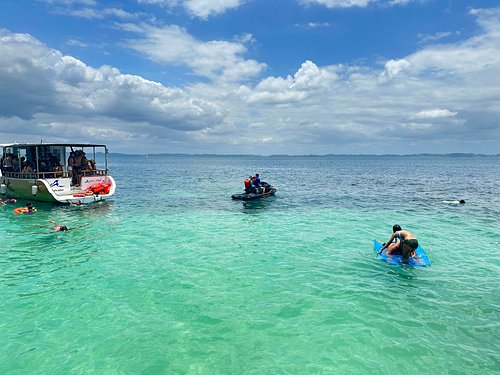
5. Schooner Trip Only Ilha dos Frades, Leaving Salvador-Bahia.

6. City Tour in Salvador Discover the first capital of Brazil - En

7. 7-Recipe Boozy Cooking Class in Salvador

8. Private Cooking Experience with local in Salvador

9. Private Historical Tour 5 hours

10. Ilhas Maravilhas Frades and Itaparica Full Day Tour, Salvador, Bahia, Brazil

11. Private Walking Tour of Salvador Pelourinho

12. Private Full-Day African Oriented Salvador Upper & Lower City

13. Paradise Morro de São Paulo Island Tour from Salvador

14. Historical African oriented City Tour

15. Transfer Iberostar Bahia / Praia do Forte - Private

16. Regular Tour to Forte Beach - Leaving Salvador by Bahia Top Turismo

17. SCHOONER TRIP in SALVADOR (BEST OPTION)

18. Exclusive & Private Walking Tour in Pelourinho Salvador 3 hours

19. Private Transfer From airport to Salvador up to 3 people

20. Private City Tour with beach stop for swimming.

21. Transfer to Iberostar Selection Praia do Forte or Bahia

22. Cachoeira Countryside Flavor Private Tour from Salvador

23. Private Walking Tour of Salvador

24. Salvador Upper City tour - discover the World Heritage Site of Salvador.

25. Transfer between Salvador Airport and Costa do Sauipe

26. Full City Tour Historic and Panoramic

27. Private Anthropological City Tour of Salvador

28. Private Samba-Reggae Percussion Class in Salvador

29. Candomble Religion Mysteries Private Tour in Salvador

30. Chapada Diamantina - Private Multi Day Tour
What travelers are saying.
- Schooner Tour to Frades Islands and Itaparica, Leaving Salvador - Bahia
- Private City Tour in Salvador
- Tour Praia do Forte and Guarajuba, Leaving Salvador-Bahia.
- 7-Recipe Boozy Cooking Class in Salvador
- Historical African oriented City Tour
- Chiaretti Transportes
- Mauro Tours
- Salvador Transfer
- Panterillo Tour Bahia
- Citytoursalvadorba
- Bahia Premium
- Baiano Turismo
- Bahia Top Turismo
- Your Tour Brazil
- Adval Turismo
- Salvador Passeios
- Dive Bahia Salvador
- TCH Receptivo
- Fernando Bingre-Salvador Tour Guide
Related Guides:
- Latin America
Salvador Tourist Information and Tourism
(salvador, bahia, brazil), salvador tourist information and tourism: top sights, more salvador information / fast facts and orientation.
- Country: Brazil (north-east)
- Location: Bahia
- Status: city, state capital
- Area: approximately 270 square miles / 705 square kilometres
- Population: approximately 3.1 million
- Language: Portuguese - English and Spanish are also spoken
- Currency: Brazilian Real (BRL)
- Time zone: BRT (UTC -2 to -4) / BRST (UTC -2 to -4)
- Country dialling code: +55
- Telephone area code: 071
- Average daily Salvador January temperature: 30°C / 86°F
- Average daily Salvador July temperature: 27°C / 81°F
© Copyright TravelSmart Ltd
I'm looking for:
Hotel Search
- Travel Guide
- Information and Tourism
- Maps and Orientation
- Transport and Car Rental
- History Facts
- Weather and Climate
- Accommodation
- Hotels and Accommodation
- Popular Attractions
- Tourist Attractions
- Landmarks and Monuments
- Art Galleries
- Attractions Nearby
- Things to Do
- Events and Festivals
- Restaurants and Dining
- Your Reviews of Salvador
- Brazil World Guide
- Guide Disclaimer
- Privacy Policy / Disclaimer
Fully customizable Argentina trips ideas
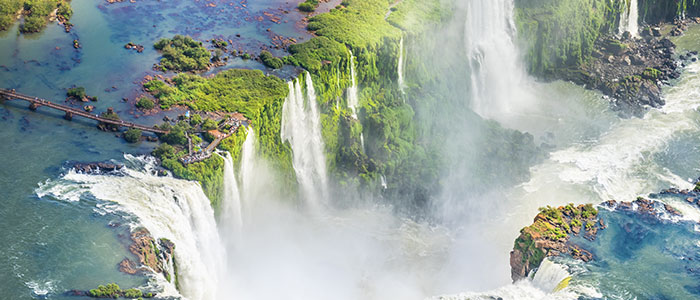
Tango & Falls 6 Days Buenos Aires, Puerto Iguazú
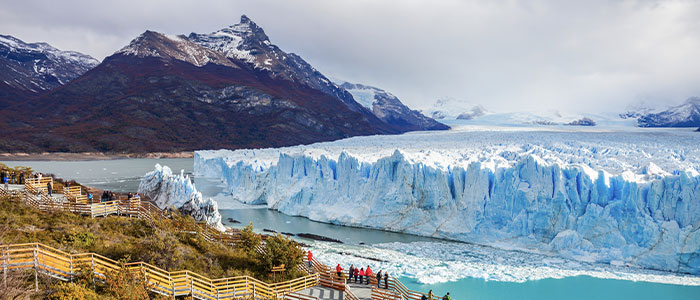
Argentine Treasures 7 Days Buenos Aires, Puerto Iguazú, El Calafate
Argentina destinations
Fully customizable brazil trips ideas.
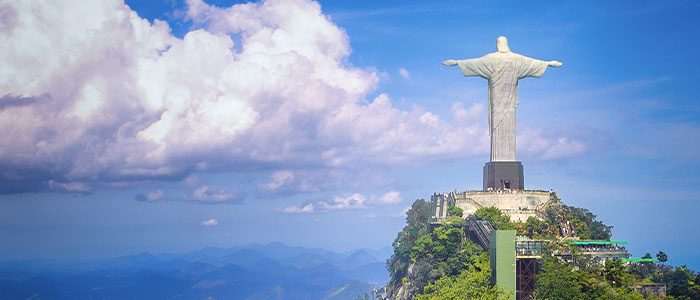
Samba & Falls 6 Days Rio de janeiro & Iguazu Falls
Samba, Falls & Tango 7 Days Rio de Janeiro, Puerto Uguazu, Buenos Aires
Brazil destinations
Fully customizable chile trips ideas.
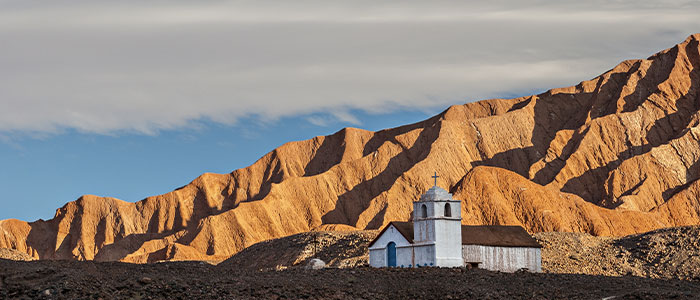
Urban Discovery & Natural Wonders 7 Days Santiago and San Pedro de Atacama
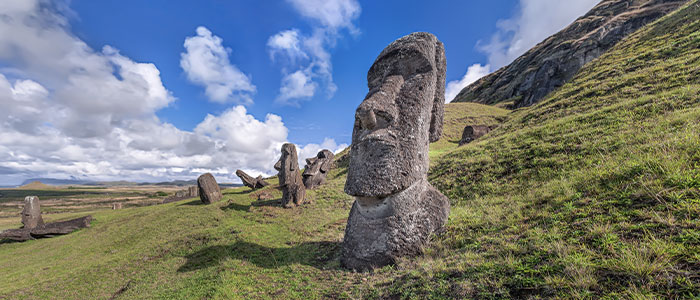
Enchanted Easter Island & Santiago 7 Days Santiago and Easter Island
Chile destinations
Fully customizable ecuador trips ideas.
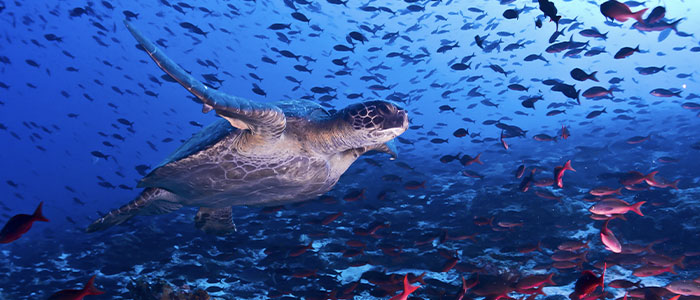
Inspiring Incas & Great Galapagos 11 Days Machu Piccu, Cusco, Sacred Valley, Galapagos Cruise
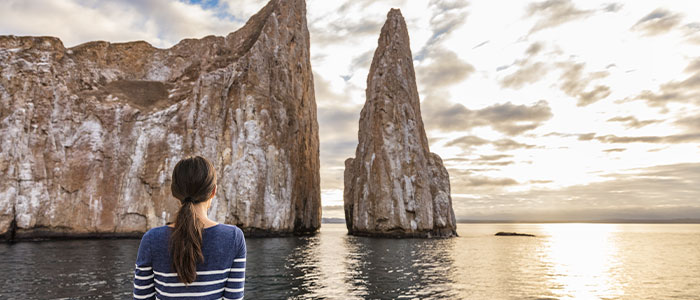
Galapagos Island Hopping Tour 6 Days Galapagos Islands
Ecuador destinations
Fully customizable patagonia trips ideas.
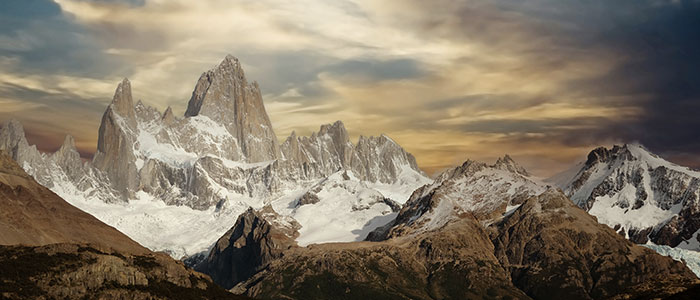
Capitals & Patagonia 12 Days Santiago, Torres del Paine, El Calafate & Buenos Aires
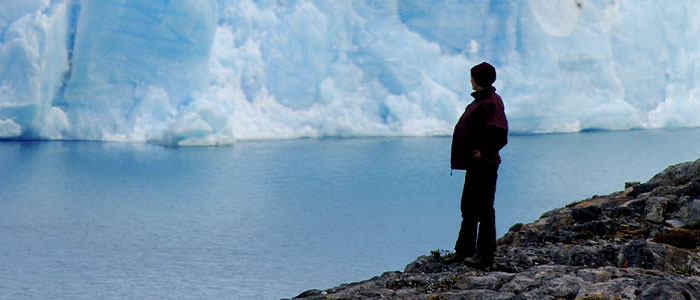
Best of Patagonia 10 Days El Calafate, El Chalten, Puerto Natales, Torres Del Paine
Fully customizable Antarctica trips ideas
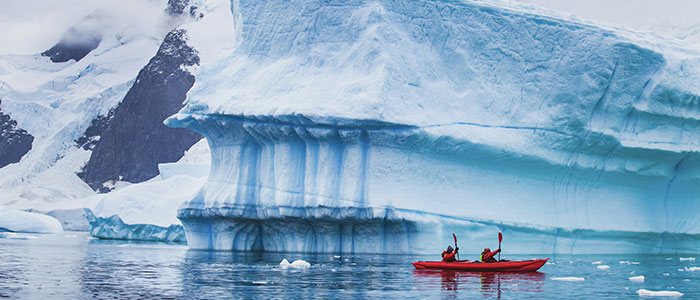
Highlights of Antarctica 8 Days Cruise Antarctica
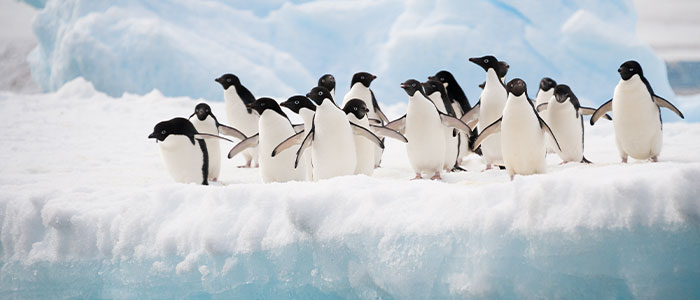
Crossing the Circle 15 Days Cruise to Cruise to the Antarctic Peninsula
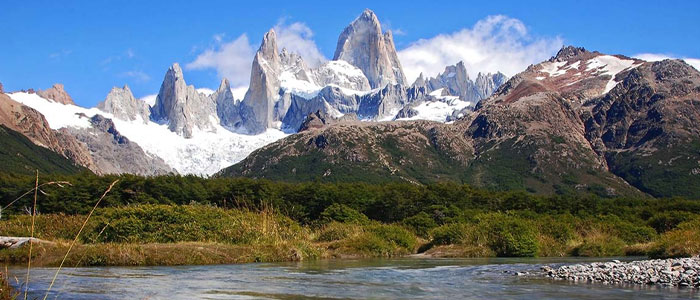
The Best Time to Visit Patagonia in Chile and Argentina
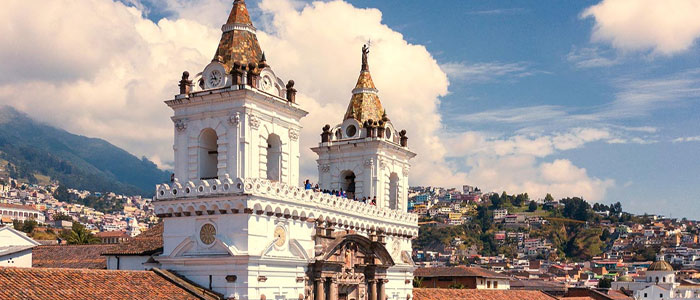
The 20 Best Places to Visit in Ecuador
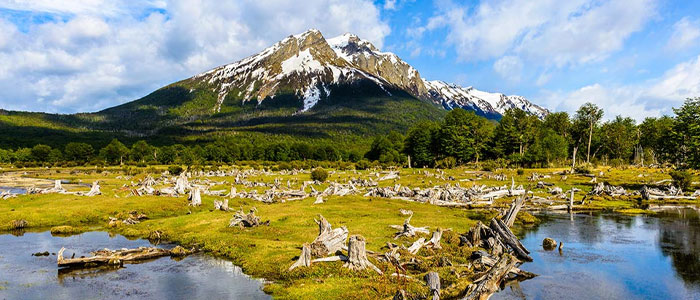
Tierra del Fuego National Park Travel Guide
Testimonials
More than 5,000 GREAT testimonials
Who we are, and why we love travel
Personalized Service
Handpicked hotels, 5000+ testimonials.
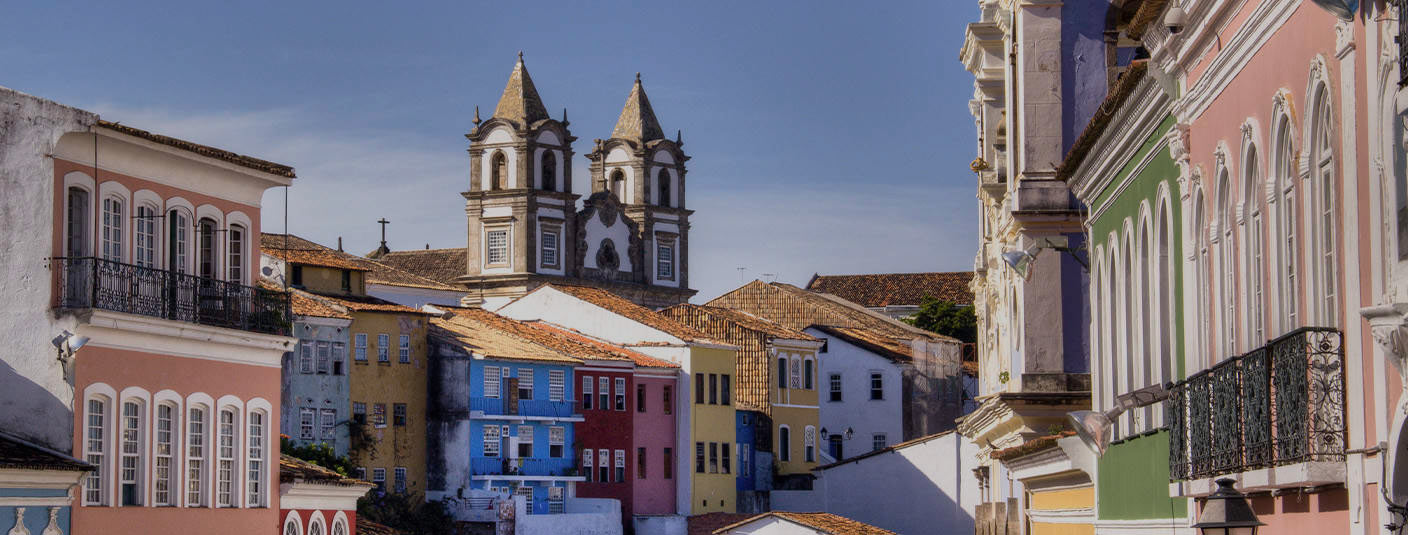
Salvador da Bahia Tours
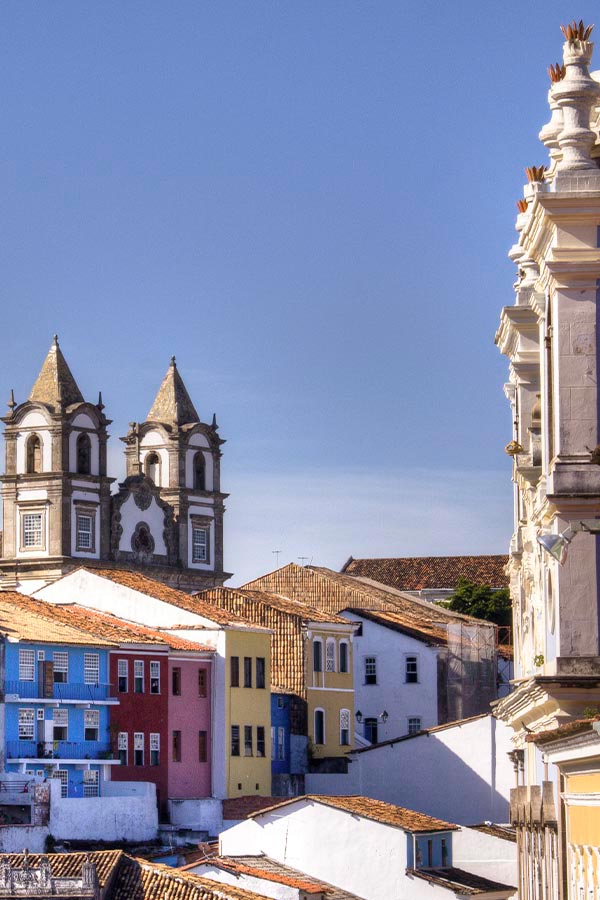
Tailor-made Itineraries by Local Experts
Discover Brazil’s “Land of Happiness” with our private and small group Salvador Bahia tours. The friendly and welcoming residents of Salvador da Bahia –known simply as ‘Salvador’ – are deservingly proud of their northeast capital city, blessed as it is with a historically-rich past, gorgeous beaches, and one of the best Carnival celebrations in the world. Salvador is also considered the Afro-Brazilian capital of the nation and with over 80% of the population claiming African ancestry it is no surprise how extensively African culture and traditions have integrated into local folklore and history. Contact us to start planning your trip to this historically and culturally rich Brazil destination.
Join small or private group tours.
Great hotels with superior attention.
Founded in 1998, look at our amazing testimonials.
Fully Customizable Tours
Let our team of expert travel advisors help build your dream trip to South America. Our fully customizable vacation packages allow you to hand-pick the destinations you wish to see at the exact pace you wish to see them. All of our offerings are also vetted firsthand by our team to ensure top quality and comfort. Contact one of our travel experts today to start planning your once-in-a-lifetime trip!
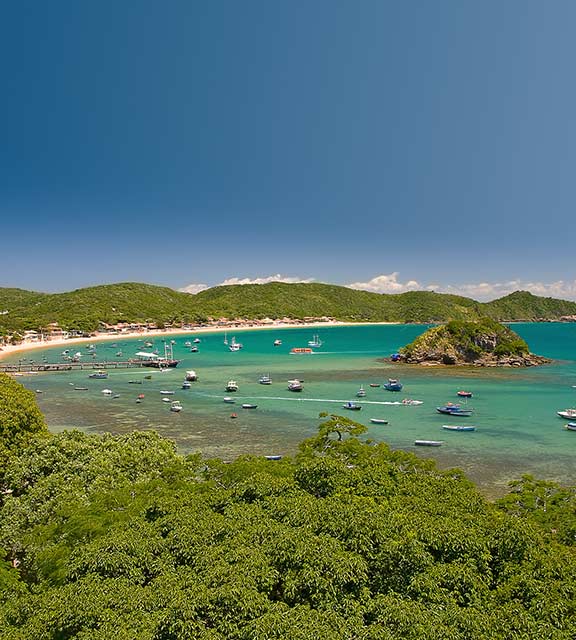
Discover Brazil
Rio de Janeiro, Buzios, Iguazu Falls, Salvador de Bahia & the Amazon 16 Days $ xxx -->
An expansive discovery of the Brazilian Amazon, the tropical coast, waterfalls, and historic relics.
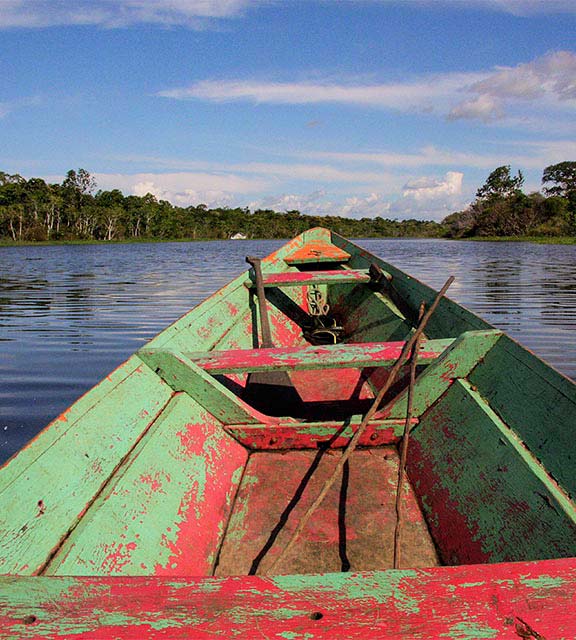
Rio, Capoeira & Amazon
Rio de Janeiro, Salvador da Bahia, Manaus 10 Days $ xxx -->
Discover the rich cultures of Rio and Salvador before an adventure to the Amazon with this exciting package.
What to Do in Salvador da Bahia
Explore one of Brazil’s most historically and culturally rich cities. Your Latin America For Less travel advisor can help you create the perfect itinerary tailored to your interests and preferences.
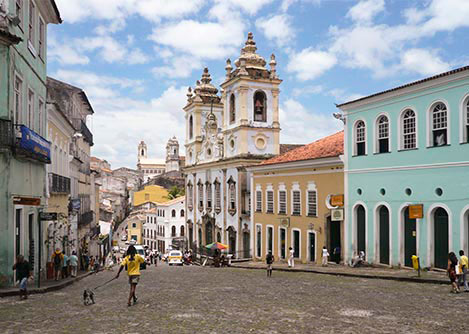
Explore the Historic Center
The historic center of Salvador is full of well-preserved colonial buildings dating back as far as the 17th century, which has earned it a designation as a UNESCO World Heritage site.
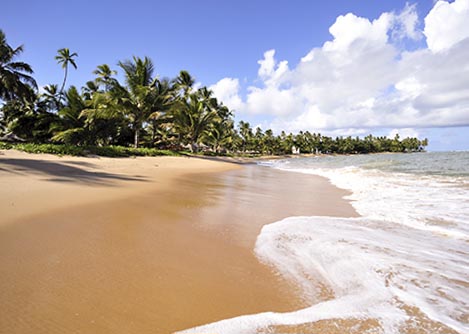
Visit the Beaches
Salvador offers some of the best beaches in the country, perfect for swimming, sailing, and snorkeling. With over 30 miles (50 km) of beaches stretching across the coastline, there are plenty of options to take in a little sun in this lovely city.
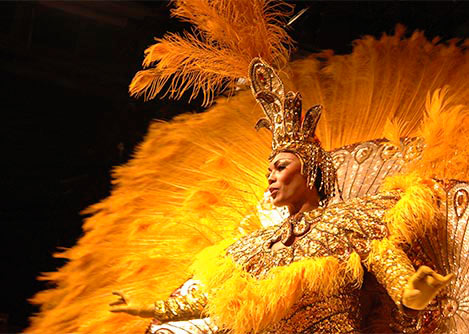
See Live Samba Music
Make sure to enjoy a night of live Samba music at one of the city’s various live music venues specializing in Brazil’s most famed genre of music. Salvador is one of the best places to see live Samba music in Brazil.
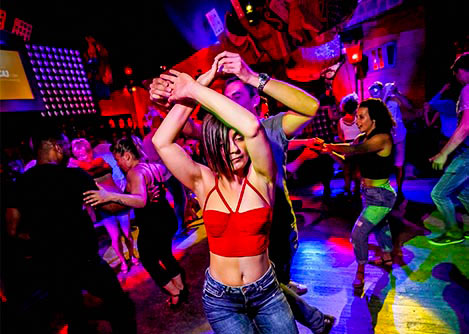
Enjoy the Nightlife
After nightfall, be sure to check out Salvador’s thriving music-scene at one of the city’s hip clubs where you can dance along to samba and Brazilian-inspired funk.
Customize Your Trip
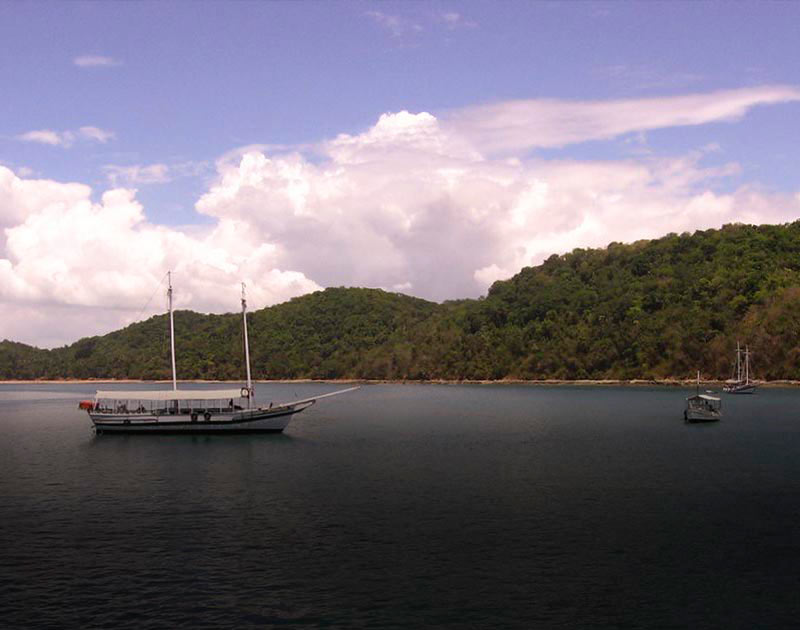
Adventure Tours
Ask your Latin America For Less travel advisor about how you can add some extra adventure to your personalized itinerary. Get your adrenaline pumping with hikes and multi-day treks, jungle expeditions, white water rafting trips, mountain biking tours and more. We are experts in planning personalized travel experiences in Latin America, so talk to one of our advisors today to start planning your adventure.
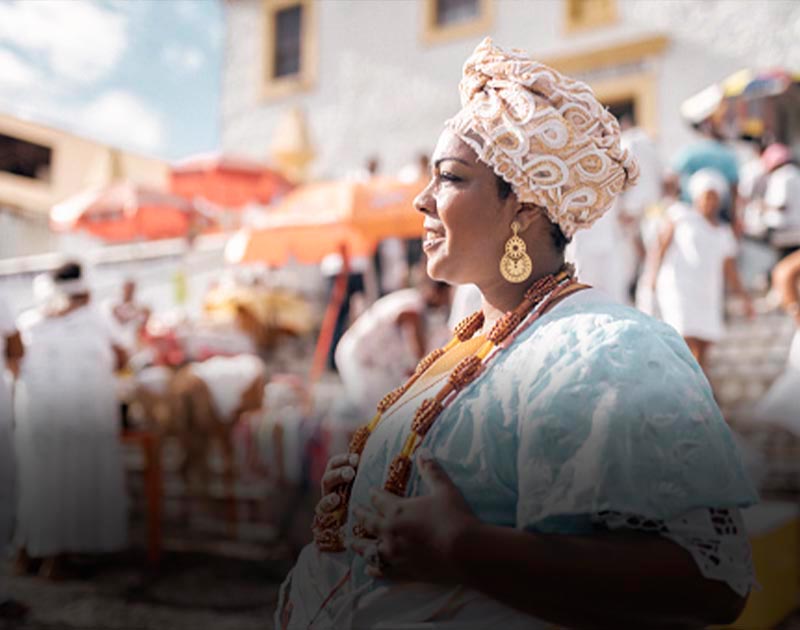
Cultural Tours
Ask your Latin America For Less travel advisor about adding cultural tours and experiences to your personalized itinerary. Discover the rich cultures of Latin America and learn about the unique customs and traditions maintained by its people. We are experts in planning personalized travel experiences in Latin America, so talk to one of our advisors today to start planning your cultural tour.
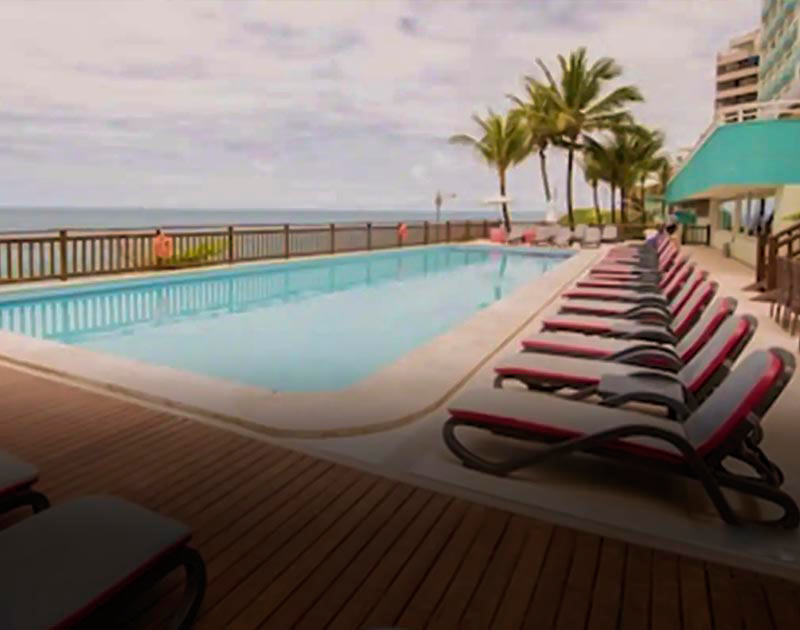
Spa & Wellness Tours
Ask your Latin America For Less travel advisor about how you can add spa & wellness tours to your personalized itinerary. Take advantage of a free day to enjoy some rest and relaxation at a resort, or visit a spa to unwind after a long day of exploring. We are experts in planning personalized travel experiences in Latin America, so talk to one of our advisors to start planning your spa & wellness tour.

Ask your Latin America For Less travel advisor about how you can add food tours and culinary experiences to your personalized itinerary. Discover the unique cuisines of Latin America and enjoy exclusive visits to some of the world’s top restaurants. We are experts in planning personalized travel experiences in Latin America, so talk to one of our travel advisors today to start planning your food tour.
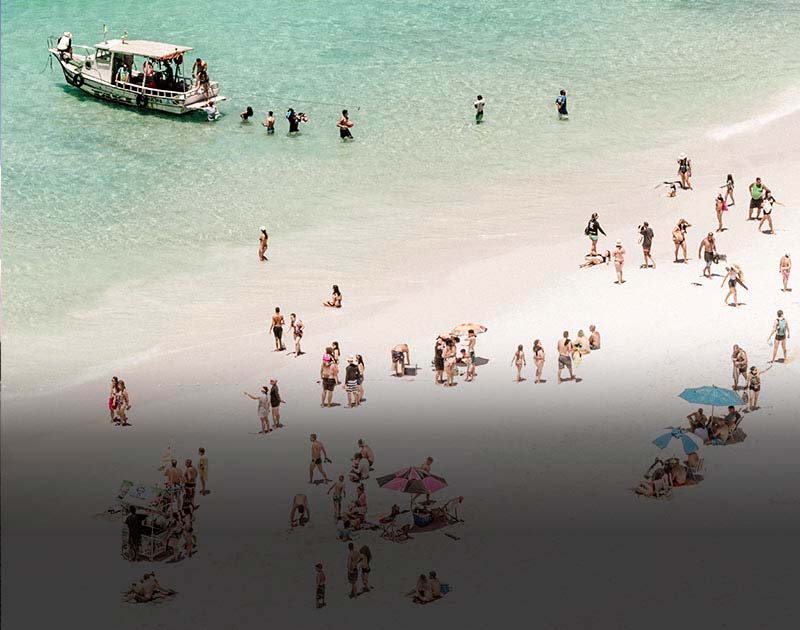
Family & Friend Tours
Ask your Latin America For Less travel advisor about how you can add family-friendly tours to your itinerary. Our team can help you build the perfect trip for your family, whether your group has small children, teenagers, senior citizens, or all of the above. We are experts in planning personalized travel experiences in Latin America, so talk to one of our travel advisors today to start planning your family tour.
Explore Brazil
With stunning beaches, lush tropical forests, fascinating history and unique culture, Brazil offers many attractive destinations for travelers. Discover some of the best places to visit in Brazil below.
Rio de Janeiro
Also known as “The Marvelous City,” Rio de Janeiro brims with color, sound, rhythm, and joy. This sparkling city boasts one of the most naturally spectacular settings.
Read more →
As Brazil’s largest city, São Paulo’s attraction lies in its diverse people and its vibrant culture. Senses are overwhelmed by the sheer size and cosmopolitan feel of the city.
Bonito is an eco-tourism Mecca blessed with caves, waterfalls, and crystal-clear rivers. It’s a haven for nature and adventure lovers with great snorkeling opportunities.
Sitting at the end of a long sandy peninsula, Rio’s most exclusive beach resort of Buzios offers surfing, snorkeling, windsurfing, diving, or just simple relaxation.
Florianopolis
Florianopolis, capital of Santa Catarina State, is a beautiful and bustling island city, and one of the few places in the world where antiquity and modernity unite in perfect harmony.
Iguazu Falls
The name Iguazu comes from the Guarani phrase for “big waters,” although this can only begin to describe the majesty and magnificence of these gigantic waterfalls.
Lying on the Negro River a short distance upstream from the mighty Amazon, Manaus is a former rubber-boom port that is today the main jumping-off point for excursions into the Amazon.
An 18th century gold-mining center, Ouro Preto is bursting with striking Baroque architecture and sacred art. It is the colonial jewel in the crown of Minas Gerais state.
Among the best places in South America to see wildlife, Pantanal is a vast natural ecological paradise where you’re almost certain to see jaguars, caimans, anacondas, exotic birds, and more.
Home to some of the world’s most spectacular Portuguese colonial architecture, Paraty is set on a shoreline of jutting peninsulas and secluded beaches.
Praia do Forte
Praia do Forte is a charming coastal town blessed with beautiful white sandy beaches, clear blue waters and tropical reefs. It’s a great place for turtle-watching from December to March.
Recife boasts dazzling stretches of white sandy beaches, while the nearby UNESCO World Heritage Site of Olinda is simply the largest and most beautiful site of colonial architecture in Brazil.
Salvador da Bahia Hotels
Discover the best places to stay in Salvador da Bahia with our top pick Salvador da Bahia hotels.
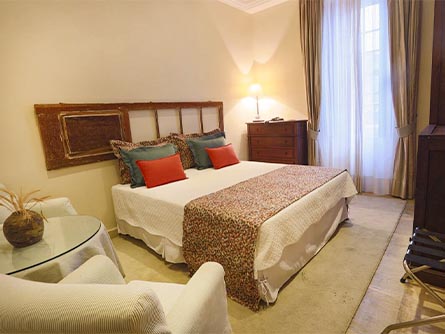
A Casa das Portas Velhas Sur
Rua da Palma 6, Salvador
A Casa das Portas Velhas features doors collected from the ruins of a 19th century manor which was restored to house this charming boutique hotel. Antique pieces adorn the walls and mirrors, and also serve as actual doors within the hotel, creating an atmosphere of classical antiquity and romanticism.
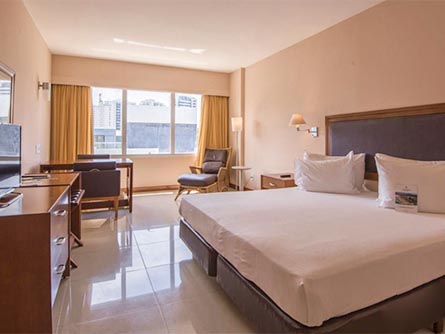
Vila Gale Bahia
Rua Morro Escravo Miguel 320, Ondina, Salvador
Vila Gale Bahia Hotel is located in the center of Ondina and within walking distance of shops and restaurants. The 200 rooms (including 24 suites) all have air-conditioning and en-suite bathrooms. With direct access to the beach, the hotel offers scenic views and a cozy atmosphere.
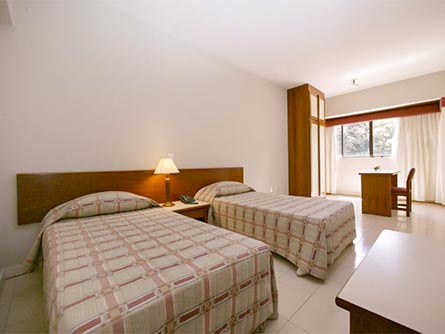
Porto Farol Apart Hotel
Rua Engenheiro Milton De Oliveira 134, Barra, Salvador
Located in one of the most charming and famous neighborhoods in the city next to the beaches of Porto and Barra, the Porto Farol Apart Hotel combines excellent services and ideal location. This lovely hotel features 39 apartments all equipped with their own kitchen and comfortable furniture.
Our trip was incredibly successful in three different countries: Chile, Brazil and Peru. And in every instance, the coordination of details and execution were impeccably accurate regardless of the country visited.
Colorado, USA
The Argentina and Brazil trip organized for us by Brazil for Less was great. The timing and amount of time for each place was very balanced and we were able to see a lot of things in a short amount of time.
We would like to thank you and your team for a most enjoyable vacation. Considering the many countries (Peru, Chile, Argentina, and Brazil) we visited, and the 14 flights we took, all went well. I will certainly recommend Brazil For Less to those who would like a stress free holiday in South America.
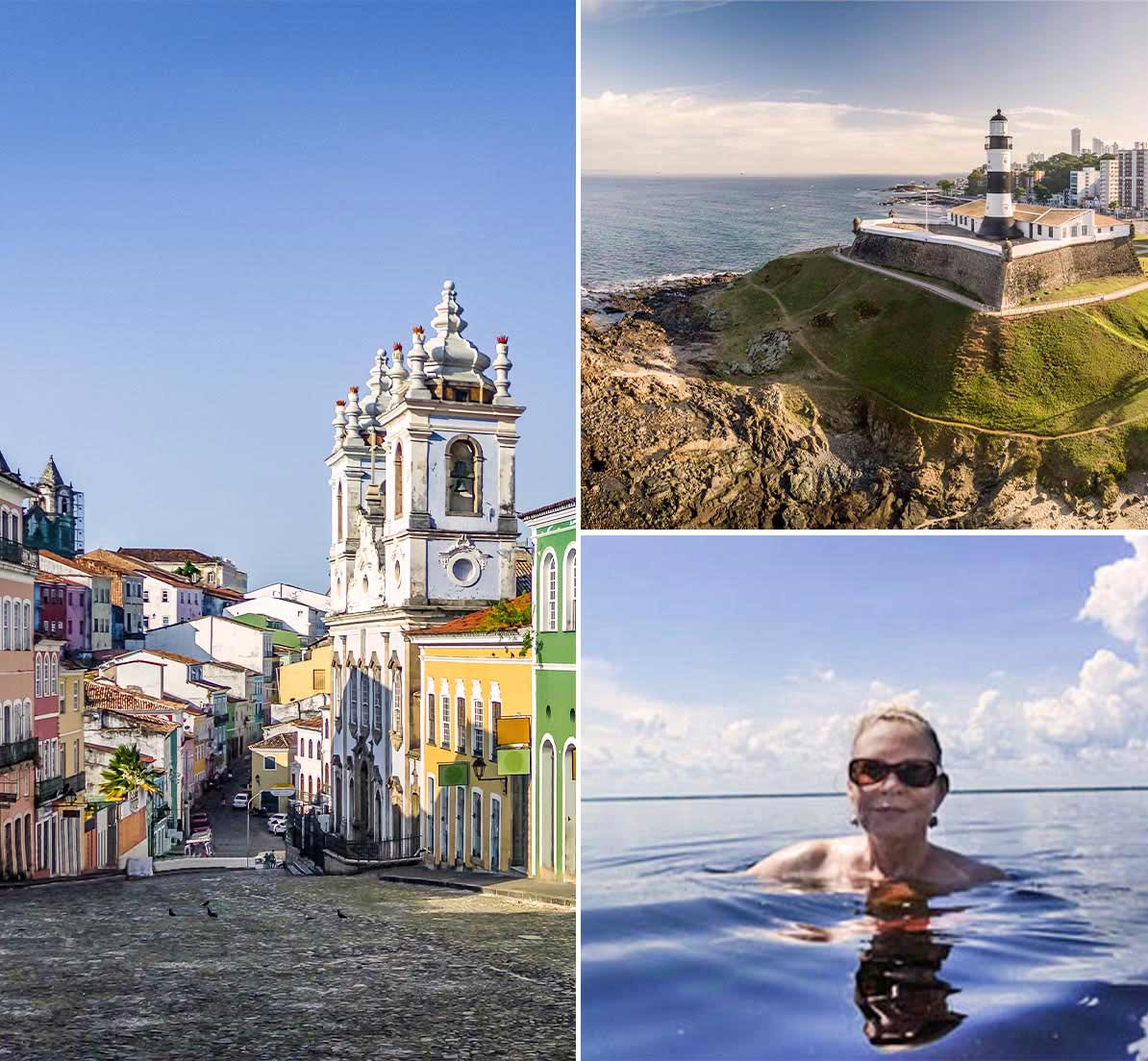
What are Machu Picchu’s operating hours?
Machu Picchu is open from 6:00 a.m.–5:30 p.m. every day including weekends and holidays.
Which Machu Picchu tour is best for adrenaline seekers?
The Machu Picchu ruins have two on-site hikes: Huayna Picchu Mountain and Machu Picchu Mountain. Both can be combined with a Machu Picchu tour and take 2–3 and 4–5 hours to complete, respectively. For even more adventure, you can hike over multiple days to Machu Picchu via the Inca Trail, Lares or Salkantay treks.
Where should I stay if I spend multiple days at Machu Picchu?
Machu Picchu hotel and hostel options are plentiful in Aguas Calientes, the town at the base of the Machu Picchu ruins. Our Top Pick hotels here are:
- 5-Star Inkaterra Machu Picchu Pueblo Hotel
- 4-Star El Mapi
- 3-Star Casa Andina Standard Machu Picchu
- 2-Star Waman Hotel
How many days do I need to tour Machu Picchu?
1–2 days. Two days and one night is the best amount of time to tour Machu Picchu at a leisurely pace: one day to arrive by train and another for the tour and return to Cusco. A whirlwind one-day Machu Picchu tour from Cusco is possible but it will be a long 16–17 hour day.
How long is a guided tour of Machu Picchu?
A guided tour of Machu Picchu is 2 hours long. The ruins operate on a one way circuit that leads to the exit of the ruins and re-entry is not allowed with a Machu Picchu general entrance ticket.
What will I see on a Machu Picchu tour?
A tour of Machu Picchu includes stops at the Guardhouse, agricultural zone, main gate, fountains, tower, temple zone, Temple of the Three Windows, astronomical observatory, Sacred Rock, Group of Three Doorways, royal enclosures, Temple of the Condor and storage area. You will also have views of the west agricultural zone and main square while walking through the ruins.
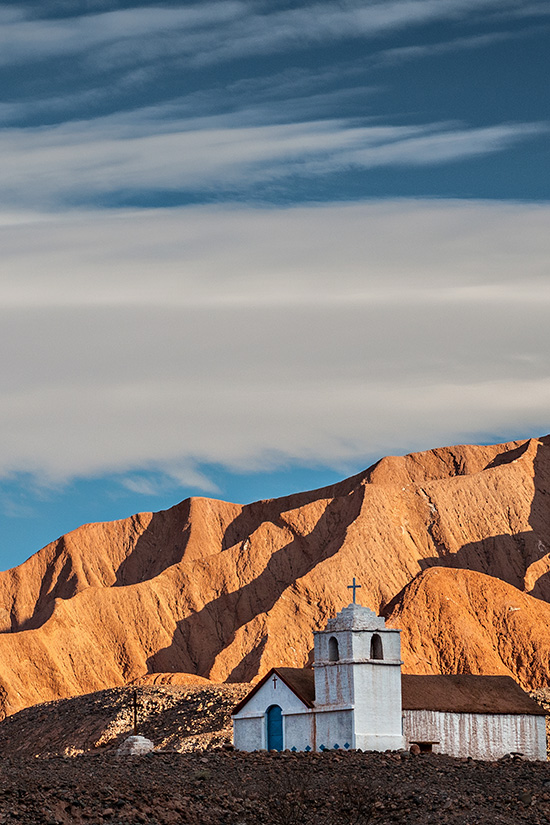
Not quite sure? Explore all our best selling packages
See All Packages
Book with confidence
We're flexible! Postpone your tour with zero cost up to 10 days prior to departure
(Optional. You may choose more than one)
TIP: Tell us the destinations you have in mind.
By submitting this form, you agree to receive recurring customer care text messages from Peru for Less at the number used when signing up. Msg frequency varies. Msg and data rates may apply. View Terms & Privacy .
We sell virtually all services available in Peru, Galapagos, Brazil, Argentina, Chile and Bolivia
- EN - Inglés
- PT - Portugués
- ES - Español
- Cómo funciona
- Sea un anfitrión
- Descarga la aplicación
Destinos destacados
- Reino Unido
¿Qué tipo de experiencias estás buscando?
- Escuela sin fines lucrativos
- Casa de familia
- Permacultura
- Centro holístico
- Casa de huéspedes
- Eco alojamiento
¿Cómo funciona Worldpackers?

Aprende con los viajeros más experimentados de la comunidad.
Viajando con worldpackers, ahorra dinero y planifica tu viaje, trabaja y gana dinero mientras viajas, viaja con worldpackers.
- Utilizando Worldpackers
- Work exchange
Planea tu viaje
- Mujeres viajeras
- Viajar barato
- Viajar solo
- Aprender idiomas
- Consejos de viaje
Estilo de vida
- Nomadas digitales
- Autonocimiento
- Turismo responsable
- Turismo sostenible
Mejores destinos
- América Latina
- Norteamérica
- Más destinos
- WP Life WP Life
- Descuentos exclusivos Descuentos
- Viajar a Brasil
Guía para visitar Salvador de Bahía: qué ver, cuándo viajar y más
Descubre en este artículo todo lo que necesitas saber antes de visitar Salvador de Bahía. Paisajes, cultura, gastronomía, y mi experiencia.
Florencia @Suspiro.viajante
Oct 13, 2023
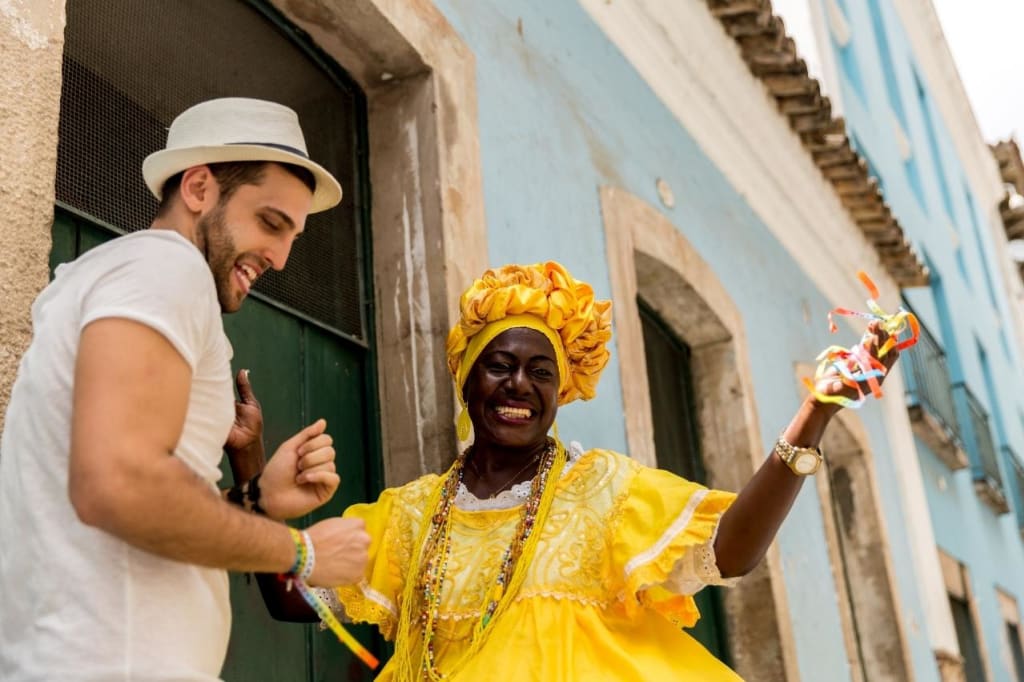
Salvador de Bahía es una de las ciudades más conocidas de Brasil luego San Pablo , Río de Janeiro y Brasilia , siendo la cuarta ciudad más poblada del país y la más grande dentro del territorio del Nordeste, contando con tres millones de habitantes.
Salvador de Bahía es un símbolo de Brasil muy valorado, querido por el sincretismo de culturas (africana, americana, y europea) y adorada por su clima tropical ideal para disfrutar durante todo el año.
Siendo la capital del Estado de Bahía , Salvador de Bahía sorprende y conquista a quien la visite. Enamora con sus playas turquesas, y despierta emoción en el viajero buscador de historia y cultura.
Simplemente para entenderlo sigue leyendo... posiblemente te atraiga la idea de hacer un viaje a este rincón mágico de Brasil.
Descubre los 10 lugares más bonitos de Salvador de Bahía
1. conoce pelourinho.
El casco antiguo de la ciudad se lo conoce como Pelourinho. Este ha sido el primer barrio de Salvador, y fue reconocido por la Unesco como Patrimonio de la Humanidad .
Sus callecitas angostas de adoquines y las casas de colores de arquitectura colonial, hacen de este sitio histórico un lugar cargado de cultura y antigua tradición.
Puedes almorzar o comer açai en alguno de sus cafés y restaurantes frente alguna construcción del siglo XVII, y comprobarás que el lugar tiene una magia especial.
Salvador de Bahía es una ciudad muy religiosa, de hecho Brasil es uno de los países con más habitantes creyentes del cristianismo del mundo.
Durante tu visita podrás visitar varias iglesias, como la Iglesia de San Francisco , una de las principales construcciones coloniales destacada del Brasil, también encontraras la Catedral de Salvador y el Convento San Francisco.
Además de conocer estas edificaciones y disfrutar de un paseo cultural por el centro histórico, podrás visitar museos de arte, historia y cultura. Conocerás las raíces de Bahía, su sincretismo africano, europeo y latino.
Déjate sorprender con la música callejera, la capoeira, las propuestas gastronómicas, y las artesanías.
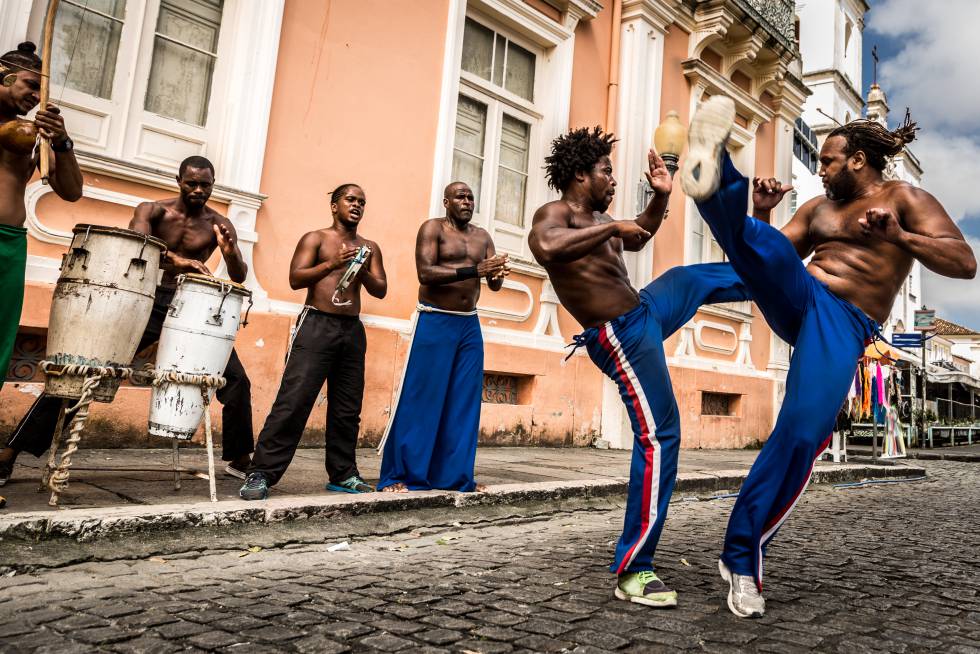
2. Pasea por el Mercado Modelo
Dentro del barrio Comercio, próximo a Pelourinho, se encuentra el Mercado Modelo, un lugar ideal para hacer las compras en Salvador de Bahía.
Aquí podrás degustar sabores auténticos de la región y comprar alguna artesanía original del lugar. Dentro de los recuerdos más característicos se encuentran sandalias chantas, estatuillas de mujeres bahianas, cerámicas y pinturas. Verás que cada recuerdo es una obra de arte.
3. Enamórate de la vista panorámica del Elevador Lacerda
El Mar de Bahía, visto desde las alturas en el Elevador Lacerda, simplemente es fabuloso.
Tomar el elevador es una de las formas de llegar a Pelourinho, ahorrándose las subidas empinadas que tiene este barrio.
Pero más que un elevador, el lugar comparte una visita para frenar y deleitarse un momento. Así que busca conocer este lugar y tomar una foto postal.
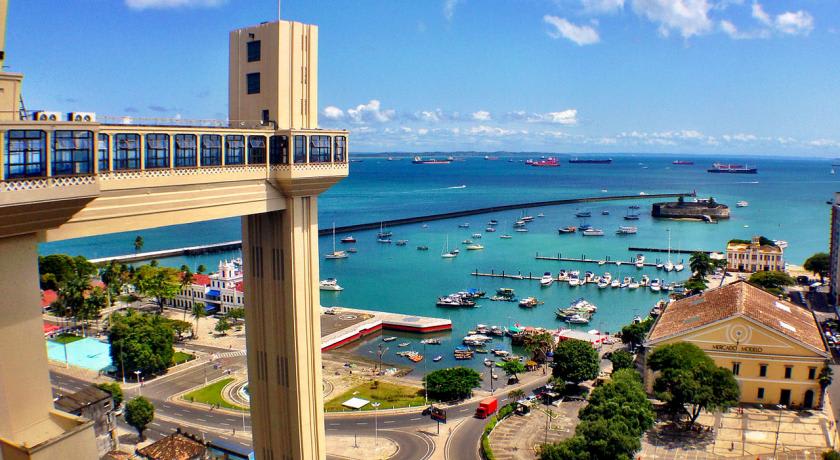
4. Disfruta de un atardecer en el Fuerte de Santo Antonio
Si llegas temprano a este punto, puedes bajar a la playa y aprovechar tomar un baño en el Buraco de la Sirena, una bonita piscina natural de agua color cristalina.
El fuerte de Santo Antonio cuenta con el Farol da Barra, donde contemplarás una de las vistas más bonitas de Salvador de Bahía. Un lugar ideal para disfrutar de un café mientras miras al sol ocultarse.
Además del encanto natural, este sitio convoca a muchas personas diariamente, por lo que podrás disfrutar de algún show de música, baile u otro entretenimiento del cual puedes formar parte.
5. Hospédate en Barrio de Barra
Uno de los barrios más elegidos por los turistas, es Barra . Su ubicación geográfica es muy estratégica y acogedora, puesto que se encuentra en la península de la ciudad limitando la Bahía de los Santos y el Océano Atlántico.
Barra cuenta con varios restaurantes, comercios dedicados a la moda, y numerosas propuestas de hospedaje. Por contar con estos servicios y sumarse las bonitas playas urbanas, Barra es uno de los barrios más elegidos para disfrutar de las cercanías y facilidades que tiene la ciudad, y a su vez conectarse con la naturaleza.
Si bien yo durante mi estadía no me hospedé en este lugar (me hospedé en Praia Flamengo), considero que Barra es el lugar ideal para alojarse y conocer Salvador de Bahía , puesto que es un lugar estratégico para recorrer el centro histórico, disfrutar de los atardeceres y el mar, y a la vez sentirse segura.
Aunque si buscas tranquilidad, te recomiendo también buscar hospedaje en algunas de las playas Stella Maris o Flamengo .
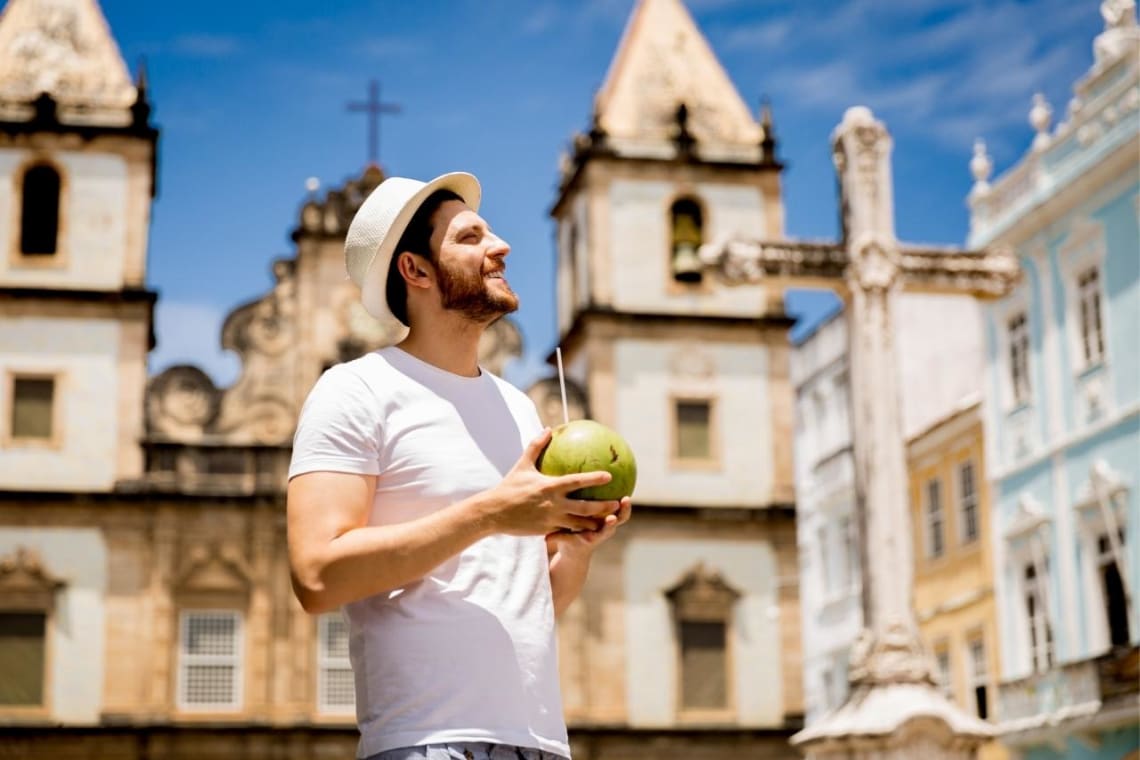
6. Pasa un tarde en Itapuã
Durante tu visita no te puedes perder de visitar la playa de Itapuã , una localidad ubicada a tan solo 21 kilómetros de la ciudad de Salvador, muy conocida por la canción brasilera "Tarde em Itapuã", compuesta por el artista de bossa nova Toquinho.
Itapuã proviene del tupí guaraní y significa "piedra que ronca". Antiguamente un pequeño pueblo de pescadores, en la actualidad un bonito destino más poblado y turístico para visitar en Salvador de Bahía. Un lindo lugar para tomar un baño en el Océano Atlántico y un sitio muy agradable para mirar el atardecer.
Disfruta del mar, del faro, de las palmera tropicales y también de los restaurantes del pueblo.
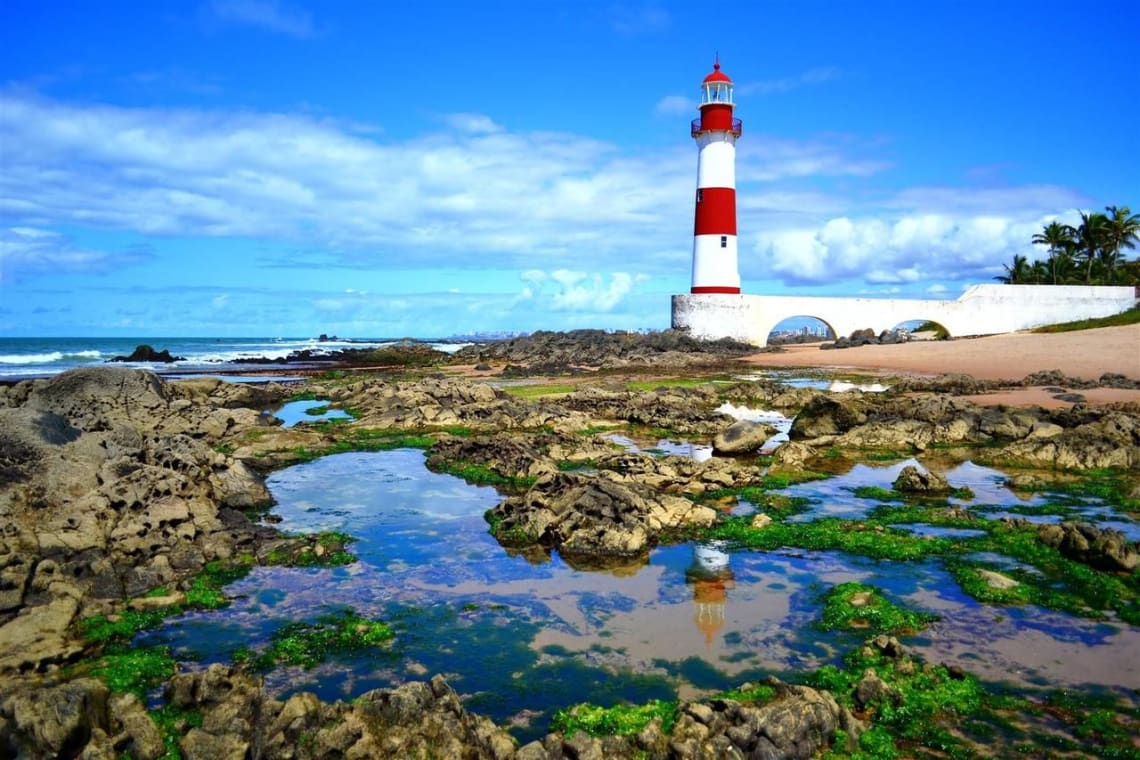
7. Descansa en Praia do Flamengo, Ipitanga y Stella Maris
Las playas más bonitas de Salvador de Bahía se encuentran un poco alejadas del centro de la ciudad, pero puedes acceder sencillamente a ellas rentando una bicicleta o tomando un autobús.
Dependiendo del lugar en que estés, tendrás que tomar uno, dos o tres autobuses. Para ello te recomiendo que utilices la app Moovit para saber qué bus tomar, en qué momento y en qué lugar.
Estas playas tienen la particularidad de ser más tranquilas , especialmente durante los días lunes hasta el día viernes. Los fines de semana suelen ser más concurridas.
Son de arena blanca y agua turquesa. Se decoran con palmeras a lo lejos, y posadas por detrás. Aquí encontrarás muchos alojamientos de este estilo, que buscan justamente producir un momento de paz y felicidad a sus visitantes.
8. Diviértete en Isla de Itaparica
A tan solo 25 minutos en catamarán de la ciudad de Salvador, podrás conocer la isla de Itaparica en la Bahía de Todos los Santos.
Un paseo para disfrutar de sus playas, entre las más conocidas: Cacha Pregos , Penha Beach , Ponta de Areia Beach . Diviértete disfrutando del agua de coco y caipiriñas.
9. Disfruta de la hermosura de Praia do Forte
A 70 kilómetros de Salvador se encuentra esta famosa playa: Praia do Forte . Un ecosistema abundante para la biodiversidad marina debido a que cuenta con piscinas naturales y arrecifes.
Puedes conocer este lugar en un paseo por el día, aunque sería conveniente alojarse debido a la distancia.
Hospedándote aquí podrás conocer más que la playa, disfrutar de los restaurantes de La Vila , el pueblito que concentra servicios, y también disfrutar de hacer otras actividades, como visitar el Proyecto Tamar , un programa que busca el cuidado y la rehabilitación de la fauna marina, especialmente de las tortugas, o conocer la Iglesia San Francisco de Asís .
¡Pero lo que no puede faltar es descansar y relajarse en esas playas de aguas tranquilas y cristalinas!
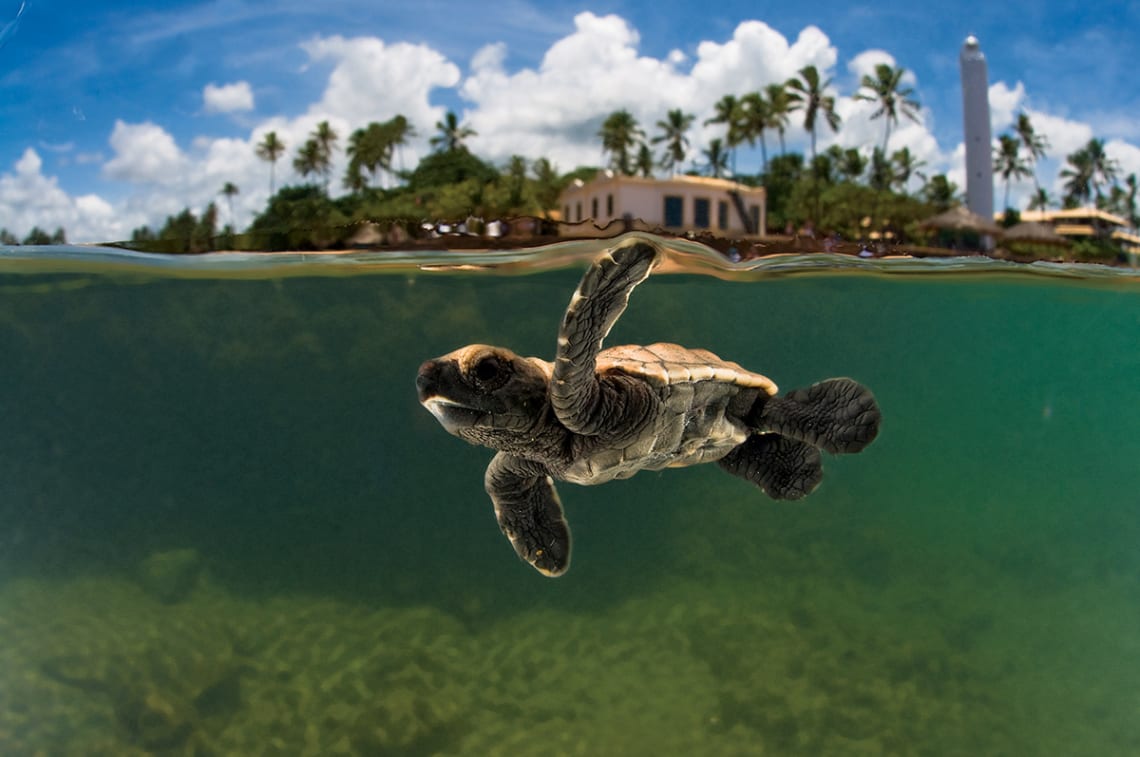
10. Visita el paraíso: Morro de Sao Paulo
Si bien Morro de Sao Paulo es una localidad turística fuera de Salvador de Bahía, es un sitio muy frecuentado por viajeros al visitar la capital del Estado de Bahía.
Morro de Sao Paulo es un paisaje donde abunda la belleza natural, y por esa razón es considerado un excelente destino turístico.
Geográficamente se ubica en la Isla Tinharé , siendo sus playas de arenas blancas y agua color turquesa cristalina. Aquí no solo podrás disfrutar de un rico baño, sino también podrás practicar buceo y sorprenderte con la biodiversidad de los arrecifes de coral.
Disfruta del agua de coco o de una rica caipiriña, ante todo disfruta y relájate.
Ten en cuenta que este lugar es ideal para quedarse por lo menos una noche. Puedes averiguar los costos de alguna excursión que ofrezca transporte y hospedaje. ¡Te aseguro que la pasarás súper bien!
Si estás planificando un viaje a Brasil, te interesará leer: Las mejores rutas de Brasil para viajar de mochilero y la Guía completa para conocer Búzios .
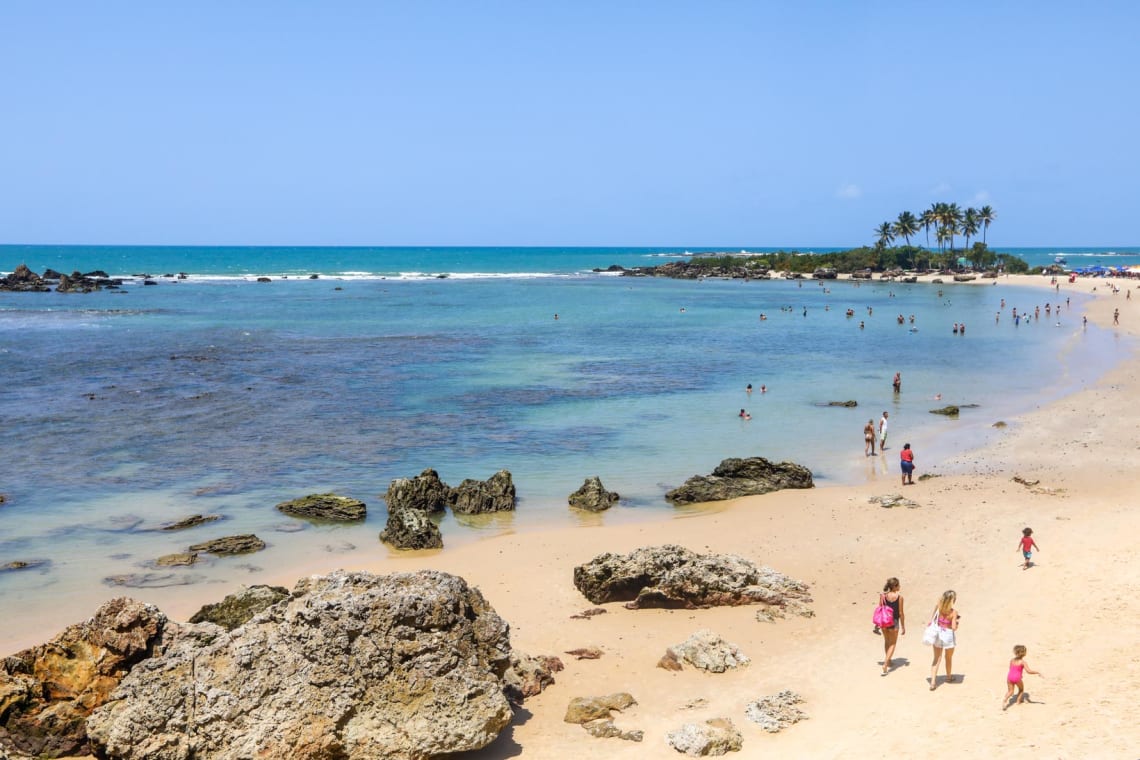
¿Cuál es el mejor momento para viajar a Salvador de Bahía?
El momento más adecuado para visitar Salvador de Bahía depende de cada persona y de aquello que quiera de su viaje.
Si estás buscando tranquilidad y relajarte en unas vacaciones, posiblemente no será lo más adecuado ir en Carnaval.
En cambio, si lo que buscas es divertirte y contagiarte con la alegría que tienen los brasileros, creo que ir en la fecha de Carnaval (o incluso días previos) es lo más adecuado, pues el carnaval de Salvador de Bahía es uno de los carnavales más bonitos del Brasil.
Esta festividad generalmente coincide con la última semana de febrero y suele terminar el 1 de marzo.
Disfrutando de Carnaval conocerás un poco más de la cultura brasilera y también yoruba (de raíz africana). Podrás divertirte, bailar al ritmo de los tambores y música africana, disfrazarte y disfrutar del espectáculo.
Lo bueno del carnaval es que tiene lugar en las calles, siendo sin entradas, gratis, de esa manera todos pueden asistir.
Conoce los mejores destinos turísticos del estado en la Guía para viajar a Bahía .
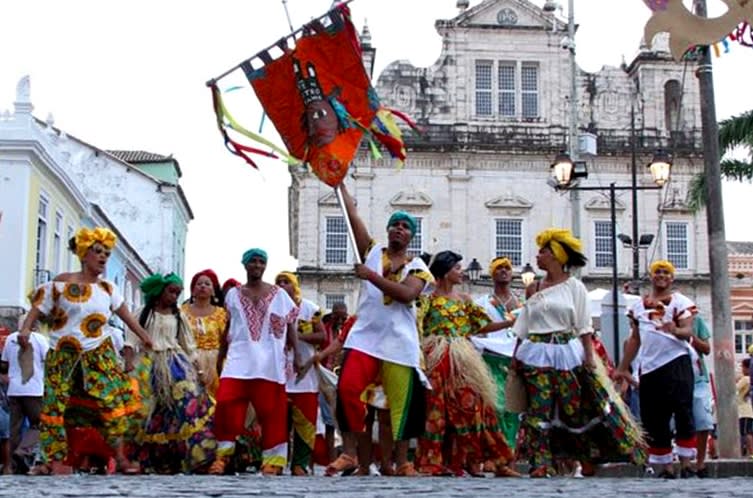
Mi experiencia por Salvador de Bahía
Mis días en Salvador de Bahía fueron increíbles. Tuve la suerte de conocer este sitio durante Carnaval, y créanme los preparativos previos, la alegría de las personas, la música y el baile, es algo que los bahianos llevan en su sangre.
Luego de formar parte de cuatro voluntariados en mi ruta por Brasil, pensé en ir a Bahía para que sea mi penúltima parada de descanso en el camino. Pero la realidad, fue que Bahía para mi fue mucho más que una parada de descanso . Bahía fue un golpe de suerte, me brindó tranquilidad, aventura, amigos, y unas ganas de vivir la vida al máximo.
Si bien me hospede en la playa Flamengo, me pude mover para todos lados. Es muy sencillo moverse en bus en Bahía, eso sí, hay que tener en cuenta que luego de las 10 PM, y más precisamente en media noche, los buses dejan de tener tanta frecuencia. Lo mismo ocurre con el metro, luego de cierta hora no funcionan hasta el día siguiente.
Confieso que tuve algunas complicaciones con el tema de la distancia y los buses, incluso hubo una noche que no pude regresar a la posada en donde me estaba hospedando debido a que no había transporte a esa hora. Esa noche me terminó hospedando una chica que conocí en la parada, y quien me enseñó parte de la ciudad junto a otro amigo de ella. ¡Creo que tenía que perder el bus para descubrir esta amistad!
Como dije, las playas más alejadas son fabulosas para hospedarse , pero no tanto para comprar comida. Pero no puedes dejar de conocerlas, y si puedes, por lo menos hospedarte un par de días.
Algunos consejos a tener en cuenta al visitar Salvador de Bahía
Salvador de Bahía se encuentra en el Nordeste de Brasil, esta zona lastimosamente es conocida por ser el territorio más pobre del país, por lo que no debemos de naturalizar estas problemáticas, y pensar que todo en Salvador de Bahía es de color rosa.
Aquí en Salvador puede que varias personas te pidan dinero, como también puedes encontrarte con algún hecho más conflictivo.
En mi caso, solo fui testigo de un robo callejero, y hablando con locales, siempre me anunciaron ser precavida, no andar con el celular por determinados lugares a horas de la noche, o incluso también tratar de no estar sola.
Si bien en Bahía me hice algunos amigos, la mayor parte del tiempo estuve sola. Y nunca me sentí insegura , salvo cuando vi ese robo frente a mis ojos.
La verdad es que también pude ir a una favela a visitar a un amigo que me hice allí, y si bien no pasó absolutamente nada, estaba acompañada de alguien local.
Más del 70% de la población de Salvador vive en favelas. Por lo que las injusticias sociales son vistas en gran medida siempre en la ciudad.
Para entender más de que estoy hablando y complementar estos consejos con más información, te recomiendo seguir leyendo: Lo que debes saber antes de vacacionar en Brasil: tips de una brasileña .
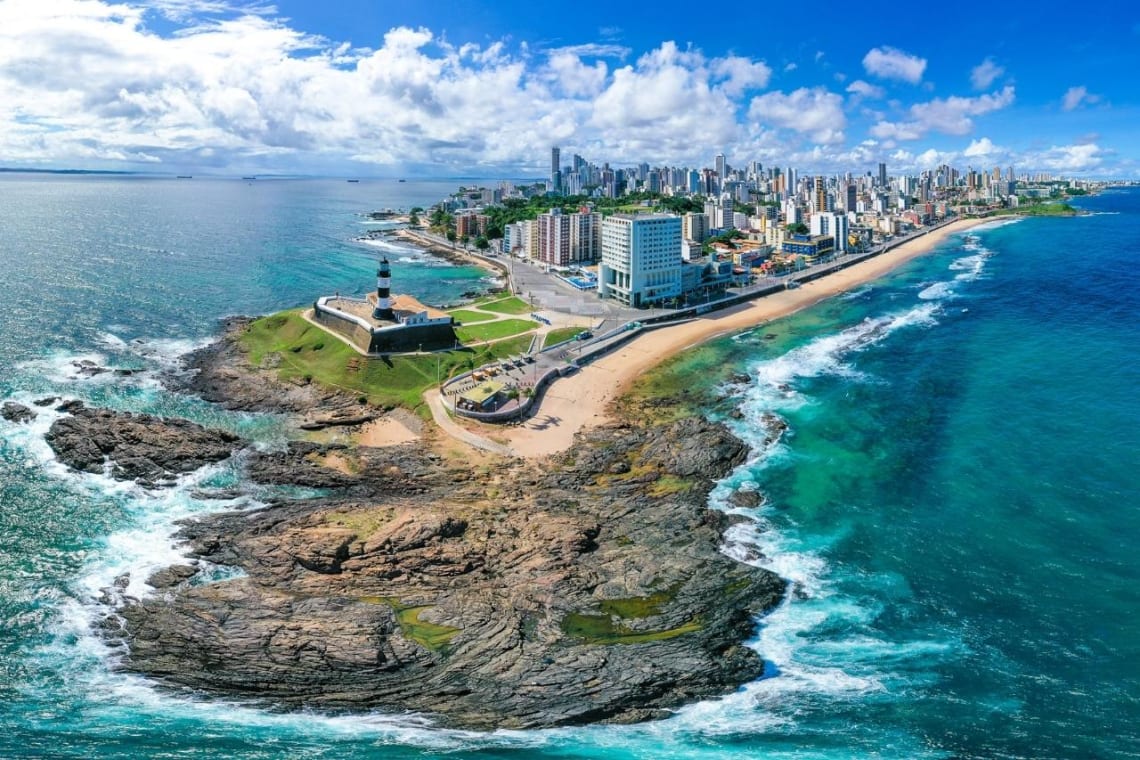
Conoce los mejores sitios turísticos de Salvador de Bahía mientras haces un voluntariado
La oportunidad ideal para conocer esta increíble ciudad y quedarse más tiempo en este lugar viviendo como un local, es haciendo una experiencia de voluntariado.
De esta manera tu viaje cobra un significado diferente, el cual te permitirá conocer todos los rincones, contactarte con otros viajeros, ¡y a su vez economizar gran cantidad de dinero!
Puedes aprender más mirando el siguiente video, y consultar los voluntariados en Salvador de Bahía . Puedes ayudar en la administración de esta Posada , o intercambiar tus habilidades de jardinería y mantenimiento en este proyecto de permacultura , entre muchas posibilidades más.
Cuéntame en los comentarios qué te ha parecido Salvador de Bahía. Si te gustan estos consejos, sigue las redes sociales de Worldpackers para estar al tanto de las novedades: estamos en Instagram , Tiktok y YouTube .
Sigue inspirándote para ir Salvador de Bahía a través de estos artículos:
- Consejos fundamentales para viajar a Florianópolis .
- 16 cosas que hacer en Río de Janeiro con poco dinero .
- Haciendo un voluntariado en Brasil con Worldpackers .
¡Únete a la comunidad!
Crea una cuenta gratis en Worldpackers para encontrar oportunidades de voluntariado perfectas para ti y acceder a descuentos de viaje exclusivos!
Florencia Gonzalez Castro
@Suspiro.viajante
“Pela lei natural dos encontros, eu deixo e recebo um tanto”- Novos Baianos. Viaje: es trasladarse hacia otro lugar, por lo tanto es sinónimo de cambio. Cambio de mirada, de perspectiva, de personas y dentro del cambio las diferencias en el camino. Viajar es ser libre. Es estar perdido y salir a buscarse para encontrarse. Me inspira revivir mis viajes al hablar con las personas, así que si tienes dudas, inquietudes, preguntas y mucha curiosidad, estoy aquí para contarte mis experiencias y poder ayudarte! Así que acepta la invitación, acepta el viaje, y decide correr el riesgo! CODIGO DE DESCUENTO: SUSPIROVIAJANTE
Se parte de la comunidad de Worldpackers
Ya tienes cuenta, eres un anfitrión, deja tu comentario aquí.
Escriba aquí sus preguntas y saludos al autor
Más sobre el tema

Las mejores rutas de Brasil para viajar de mochilero
Lo que debes saber antes de vacacionar en Brasil: tips de una brasileña
La aventura de mi voluntariado por la selva amazónica, ¿cómo funcionan los viajes con worldpackers.
Cuando eres miembro, te pones en contacto con anfitriones y viajas de forma segura cuantas veces quieras.
Elige tu plan para viajar con worldpackers las veces que quieras.
Completa tu perfil, asiste a las video-clases de la Academy y obtén certificados para destacar tu perfil con los anfitriones.
Solicita tantos lugares como quieras y habla con nuestros anfitriones verificados..
Si el anfitrion cree que encajas bien en el puesto, serás pre aprobado.
Prepara documentacion y pasajes necesarios para el voluntariado.
Confirma tu viaje para tener toda la seguridad de worldpackers.
Vive tu experiencia transformadora e impacta positivamente en el mundo.
Si algo sale mal durante la estancia, puedes contar con la Protección WP y con nuestro equipo de asistencia.
Después de tu voluntariado, tú y tu anfitrión intercambian reseñas.
Con reseñas positivas, podrá llamar la atención de sus anfitriones y obtener aún más beneficios.

IMAGES
VIDEO
COMMENTS
6) Visit museums in Salvador. 7) Enjoy the benefits of Salvador's best neighborhoods. 8) Volunteer in Salvador - Brazil. 9) Immerse yourself in Salvador's culture. 10) Get to know the region's markets. 11) Observe the artistic works of Salvador. 12) Experience Salvador Carnaval.
Top Attractions in Salvador. Map. See all. These rankings are informed by traveler reviews—we consider the quality, quantity, ... 4-Days Experience at Salvador de Bahia, Savour the cultural fusion - Brasil. 2. Bus Tours. from . $758. per adult. Half-day Tours. See all. Historical African oriented City Tour. 25. Historical Tours.
Brazil, South America. Salvador da Bahia has an energy and unadorned beauty that few cities can match. Once Portugal's colonial capital, today Salvador is the pulsating heart of the country's Afro-Brazilian community. Festivals happen frequently, with drum corps pounding out rhythms against the backdrop of historic buildings almost daily.
Elevador Lacerda. Salvador is a city on two levels. To connect the high and low parts of the city, a lift was built in 1873. The now Art Deco Lacerda Elevator bridges an 85-metre escarpment, taking the public up and down in thirty seconds, hundreds of times a day and giving breathtaking views of the bay and the city.
By Management. 144,487. PLAN YOUR TRIP. Salvador. Brazil's former capital is renowned for its African-influenced cuisine, music and architecture. Known as "the Capital of Joy," because of its exuberant week-long Carnaval celebrations, Salvador brims with contemporary music and art amid architecture that has gone untouched since the 17th century.
Salvador - Bahia - mix it up. PT. Entrar Menu. Menu. Salvador. Por que Salvador? Uma pitada de história; Infraestrutura e serviços; Como chegar; ... Ao continuar navegando, você concorda em contribuir para os dados estatísticos de melhoria.
Top Attractions in Salvador. Map. See all. These rankings are informed by traveller reviews—we consider the quality, quantity, ... 4-Days Experience at Salvador de Bahia, Savour the cultural fusion - Brasil. 2. Bus Tours. from . C$1,061. per adult. From Salvador to Praia do Forte Day trip get to know the coconut coast.
Discover the best attractions in Salvador including Igreja NS do Bonfim, Pelourinho, and Museu Náutico da Bahia. Lonely Planet. Destinations. Planning. Inspiration. Shop. Search. Saves. Open main menu. South America. ... Salvador. Museu de Arte da Bahia showcases works from Bahian artists, with paintings by José Teófilo de Jesus (1758-1817 ...
11. Santa Teresa and the Museum of Sacred Art. Where to Stay in Salvador for Sightseeing. 1. Pelourinho. Pelourinho. Salvador's Cidade Alta (Upper Town), which was the governmental and residential center when the city was the capital of the colony of Brazil, sits on an escarpment 85 meters above the shore.
Salvador de Bahia's historic centre - an eminent example of Renaissance urban structuring adapted to a colonial site - is the Cidade Alta (Upper Town), a defensive, administrative and residential neighbourhood perched atop an 85-m-high escarpment. This densely built colonial city par excellence of the Brazilian northeast is distinguished ...
Vila Galé Salvador, Ave Rua Morro Escravo Miguel, 320 Ondina CEP 41 700.000 Salvador Bahia - Brasil, ☏ +55 351 217 9076190, [email protected]. On Praia de Ondina in São Salvador da Bahia, 20 minute away from the International Airport. Online booking. 1 Pousada Rancho Fundo, Salvador / Abrantes, Lot.
If you want to head to Itaparica Island, Morro de São Paulo or Boipeba, you're going to have to catch the ferry. There are two different terminals - the main terminal and the tourist terminal. The tourist terminal (Terminal Turistico Maritimo de Salvador), which is located near the Merdado Modelo, is much smaller.
6. Hit the Beach. Capital of joy, axé, acarajé, and full of history, Salvador is home to some of the best beaches in Bahia. So, if you are enjoying a vacation in Salvador, reserve a few days to hit a few Brazilian beaches. After all, sunbathing is one of the best things to do in Brazil.
With Afro-Brazilian culture, stunning architecture, picturesque views, delicious food, and a lively music and nightlife scene, Salvador de Bahia is a top choice for travelers headed to South America.
4) 10:30 p.m. Downtown samba. Bar do Espanha was a traditional corner bar run by a Spanish family in Salvador's downtown neighborhood of Barris starting in 1920. But in 2017, when its 90-year ...
11. Ilhas Maravilhas Frades and Itaparica Full Day Tour, Salvador, Bahia, Brazil. 7. Full-day Tours. 8-9 hours. Relax and enjoy ourselves on a stroll through the Bay of All Saints. On board a safe and equipped boat, enjoy an incredible…. Free cancellation.
Top Attractions in Salvador. Map. See all. These rankings are informed by traveller reviews—we consider the quality, quantity, ... 4-Days Experience at Salvador de Bahia, Savour the cultural fusion - Brasil. 2. Bus Tours. from . £617. per adult. From Salvador to Praia do Forte Day trip get to know the coconut coast.
Salvador is a Brazilian municipality and capital city of the state of Bahia.Situated in the Zona da Mata in the Northeast Region of Brazil, Salvador is recognized throughout the country and internationally for its cuisine, music, and architecture.The African influence in many cultural aspects of the city makes it a center of Afro-Brazilian culture. As the first capital of Colonial Brazil, the ...
Average daily Salvador January temperature: 30°C / 86°F. Average daily Salvador July temperature: 27°C / 81°F. Salvador da Bahia is an extremely energetic and lively city, with its historic centre being packed with colonial architecture dating from both the 17th century and the 18th century. Capital of the Brazilian state of Bahia, Salvador ...
The best outdoor activities to do in Salvador, Brazil are: From Salvador: Morro de São Paulo Paradise Island Daytrip. Salvador: Praia Do Forte and Guarajuba Beach Day Trip. Salvador: Dos Frades & Itaparica Islands Full-Day Boat Tour. From Salvador: Praia do Forte & Guarajuba Beach Daytrip.
Trip Length. 3-5 Days. 6-8 Days. 9-11 Days. 12-15 Days. 16+ Days. Undecided. Next 1/2. Explore one of Brazil's most historically-rich and beautiful cities with these fully-customizable Salvador Bahia tours and vacation packages.
Salvador de Bahia. Orientation . Salvador is on a peninsula on the northeast coast of Brazil which shields the large Baía de Todos os Santos ("All Saints Bay") from the Atlantic Ocean. The city is the third largest in Brazil, sprawling for dozens of kilometers inland from the coast. Most visitors head for the coastal neighborhoods that cluster ...
Descubre los 10 lugares más bonitos de Salvador de Bahía. 1. Conoce Pelourinho. El casco antiguo de la ciudad se lo conoce como Pelourinho. Este ha sido el primer barrio de Salvador, y fue reconocido por la Unesco como Patrimonio de la Humanidad.